Full text
PDF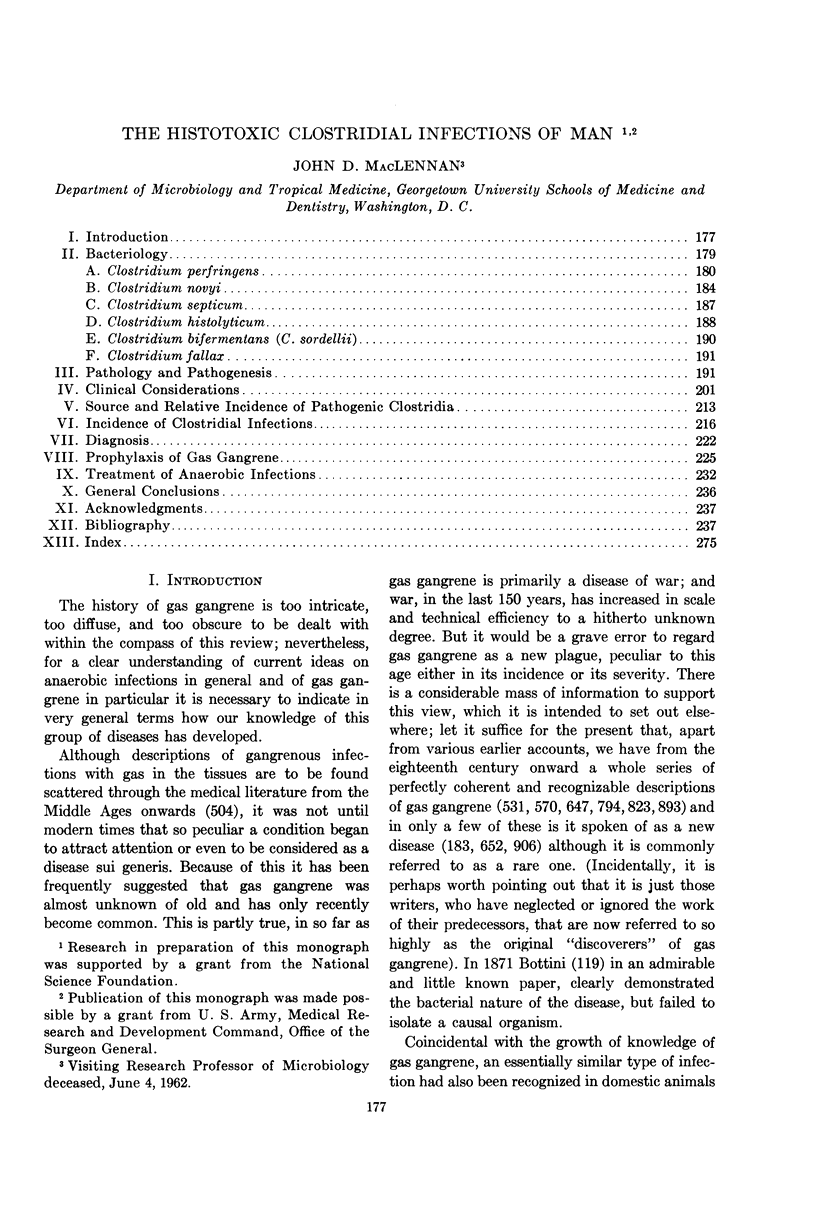
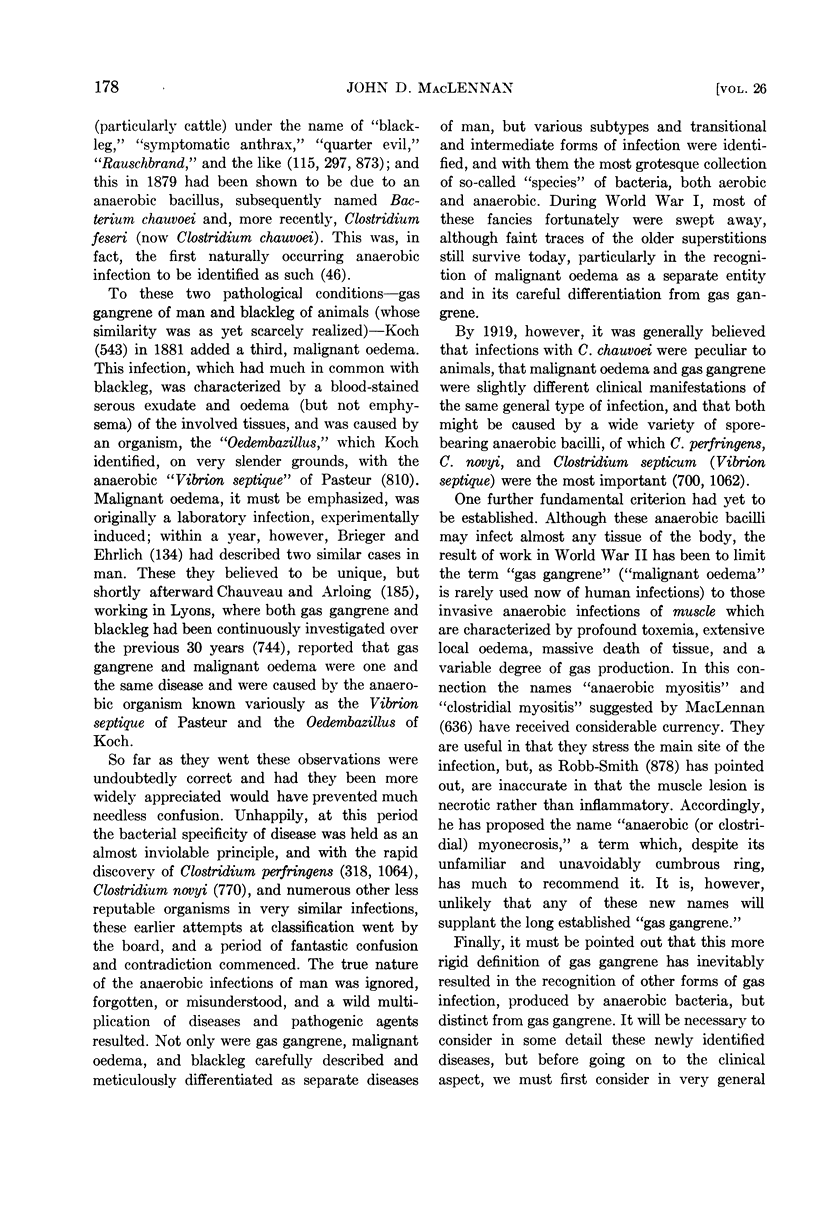
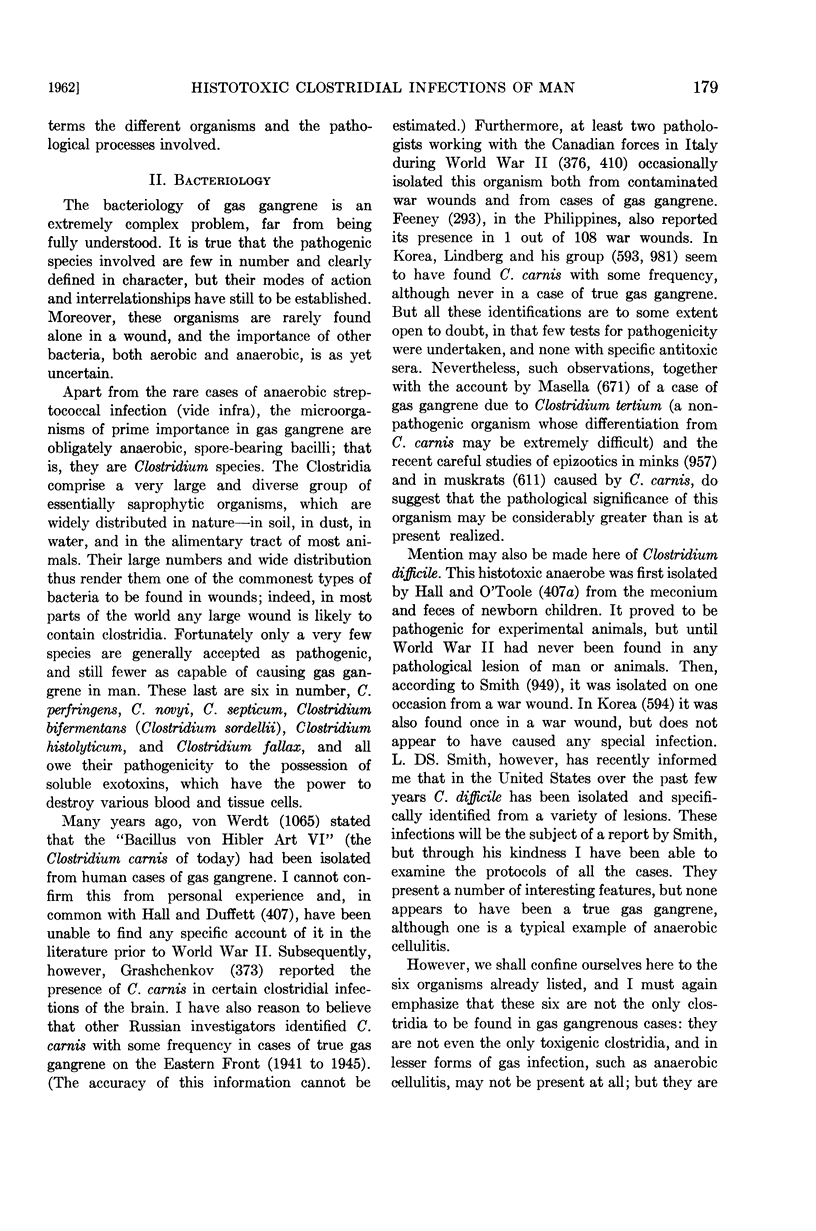
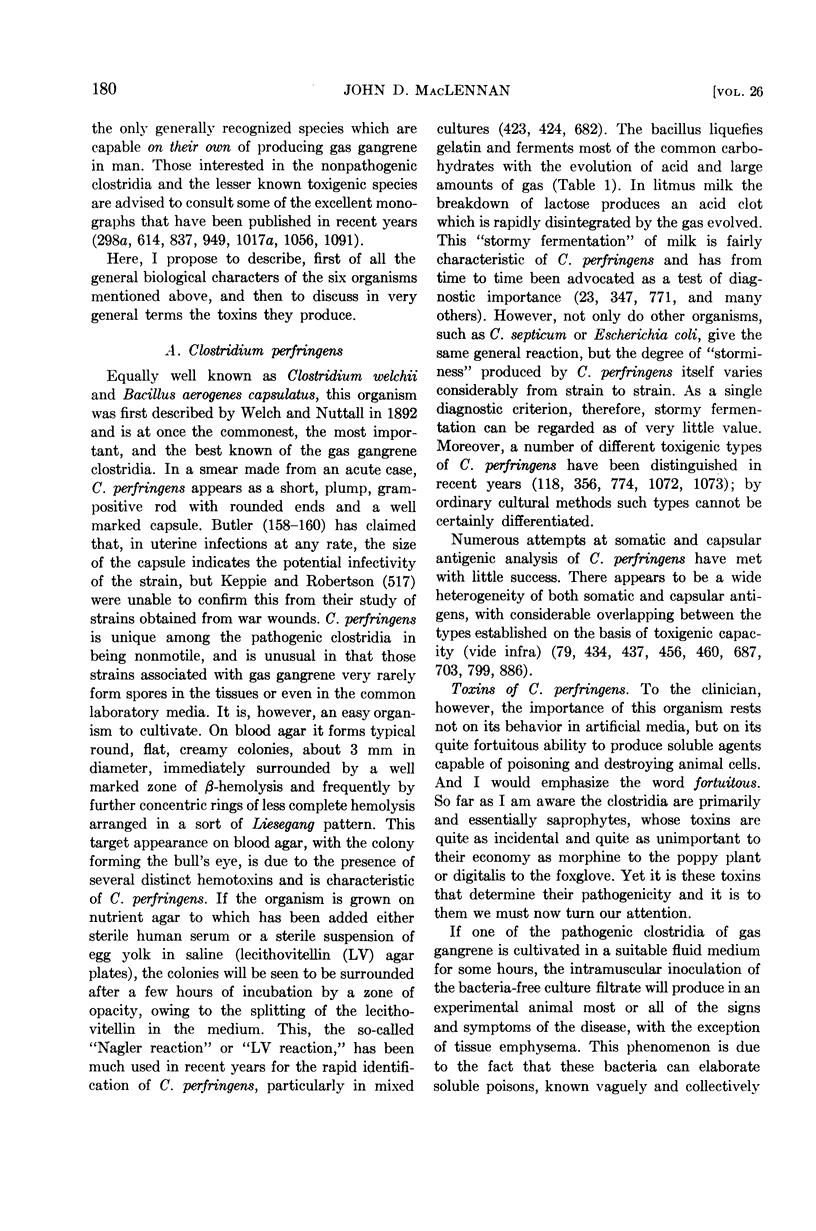
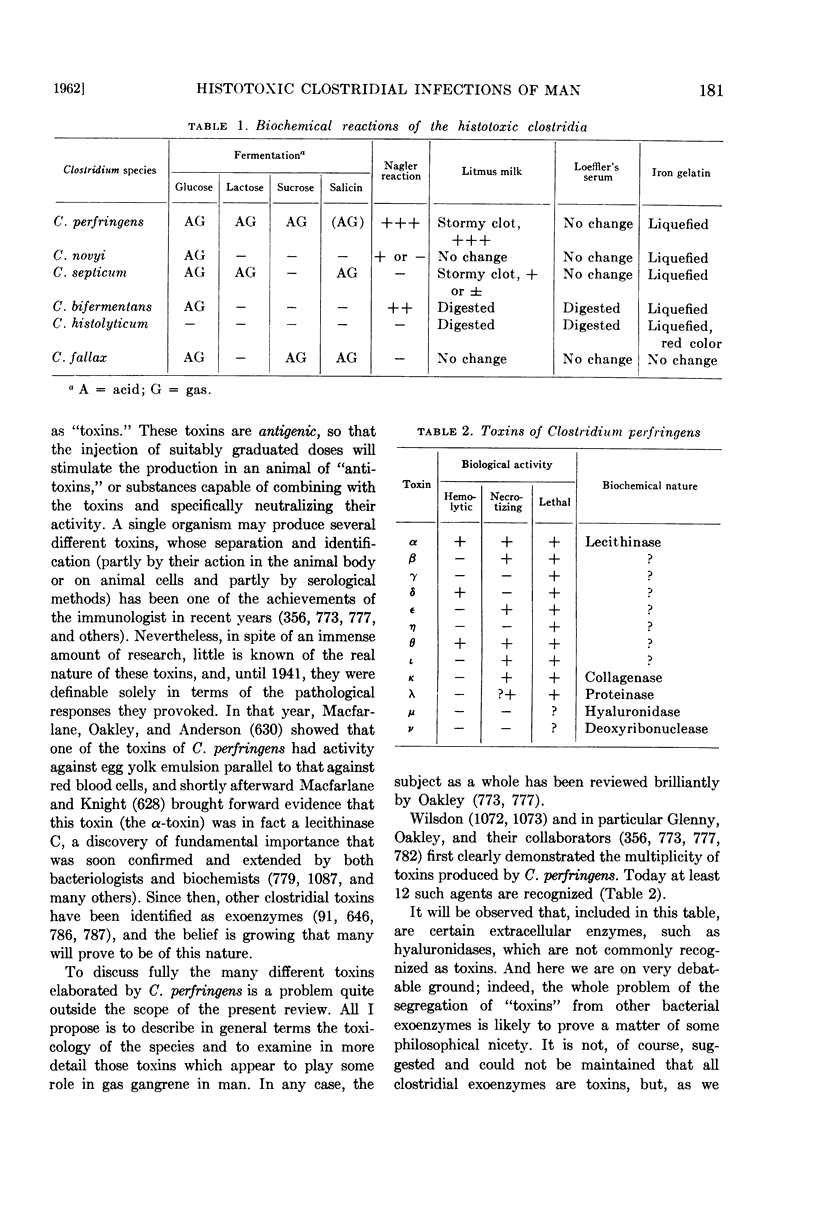
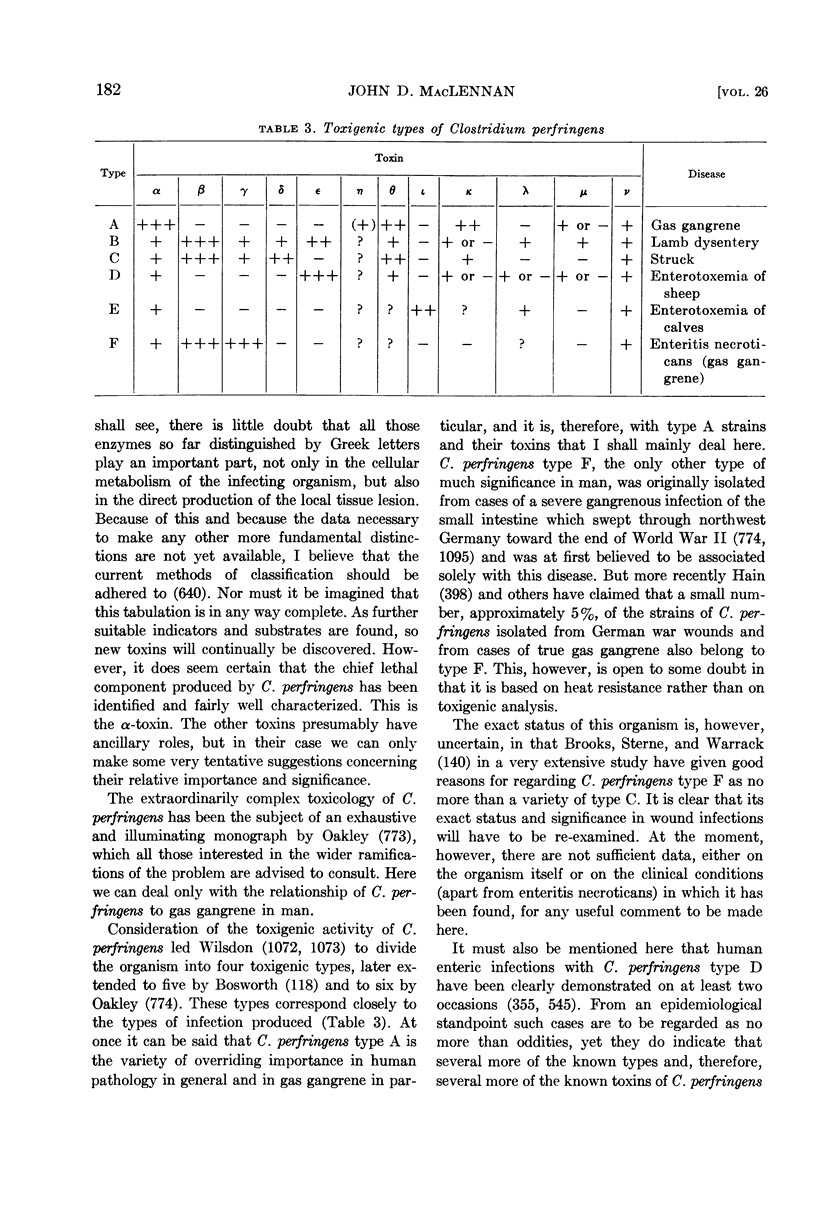
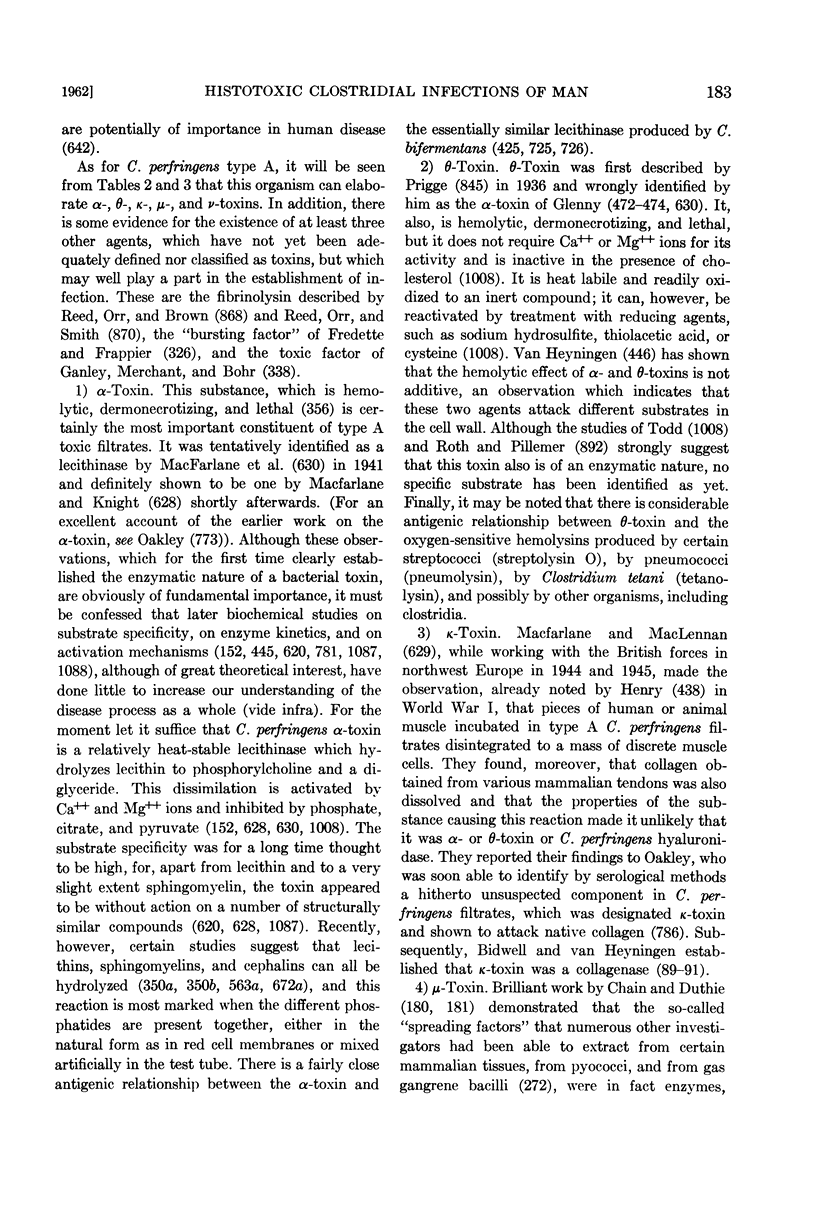
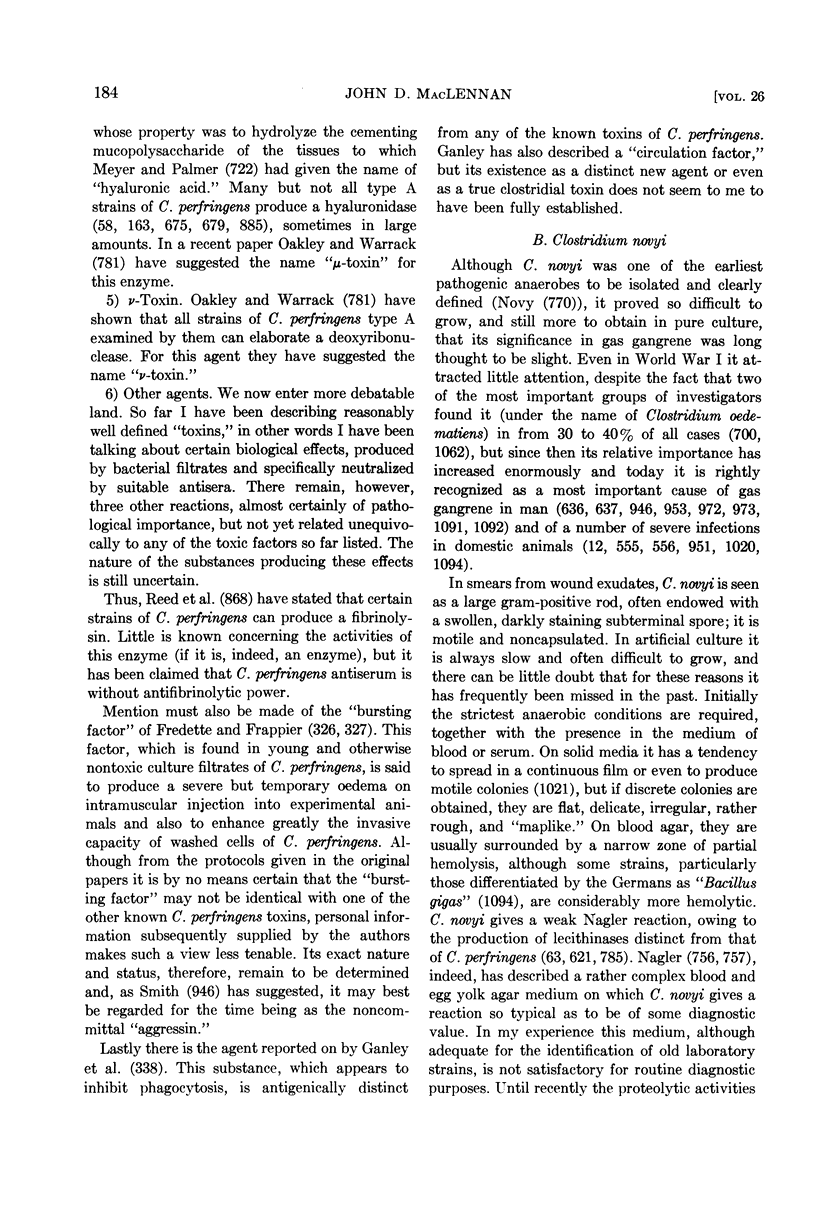
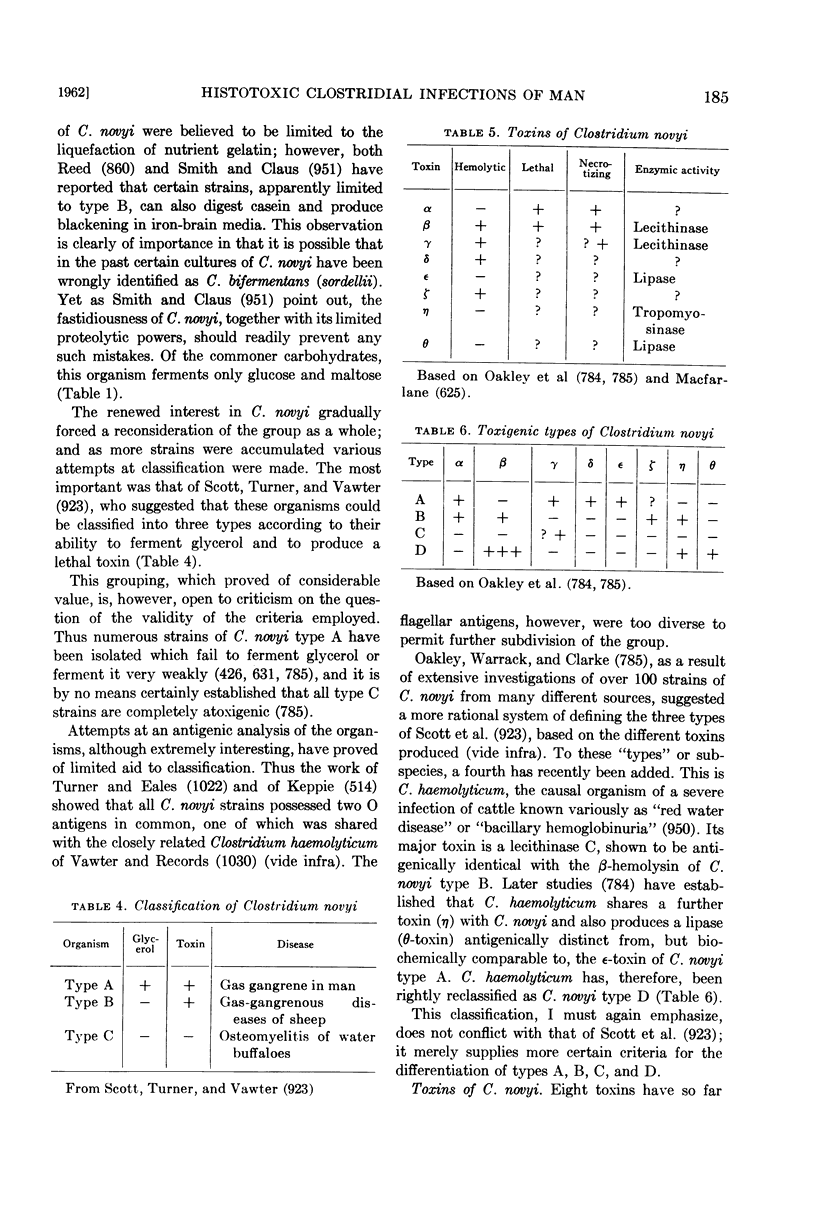
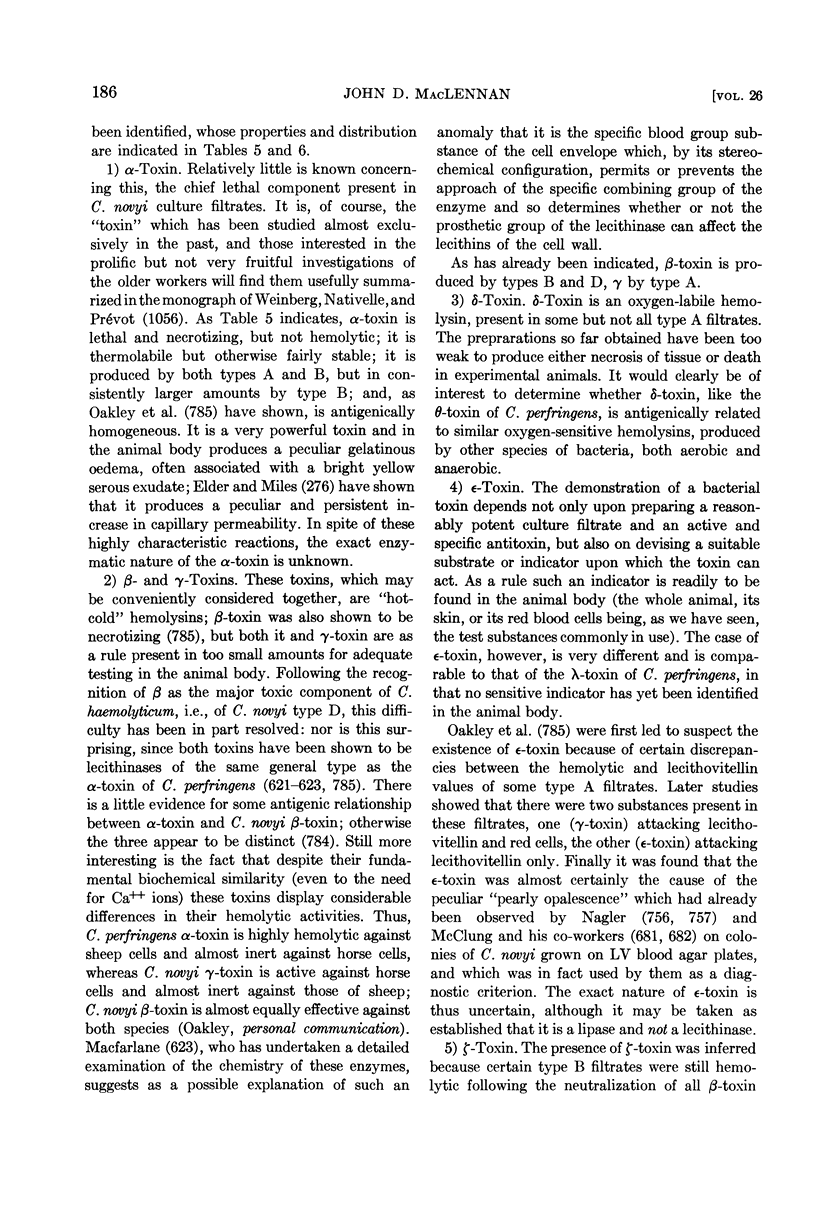
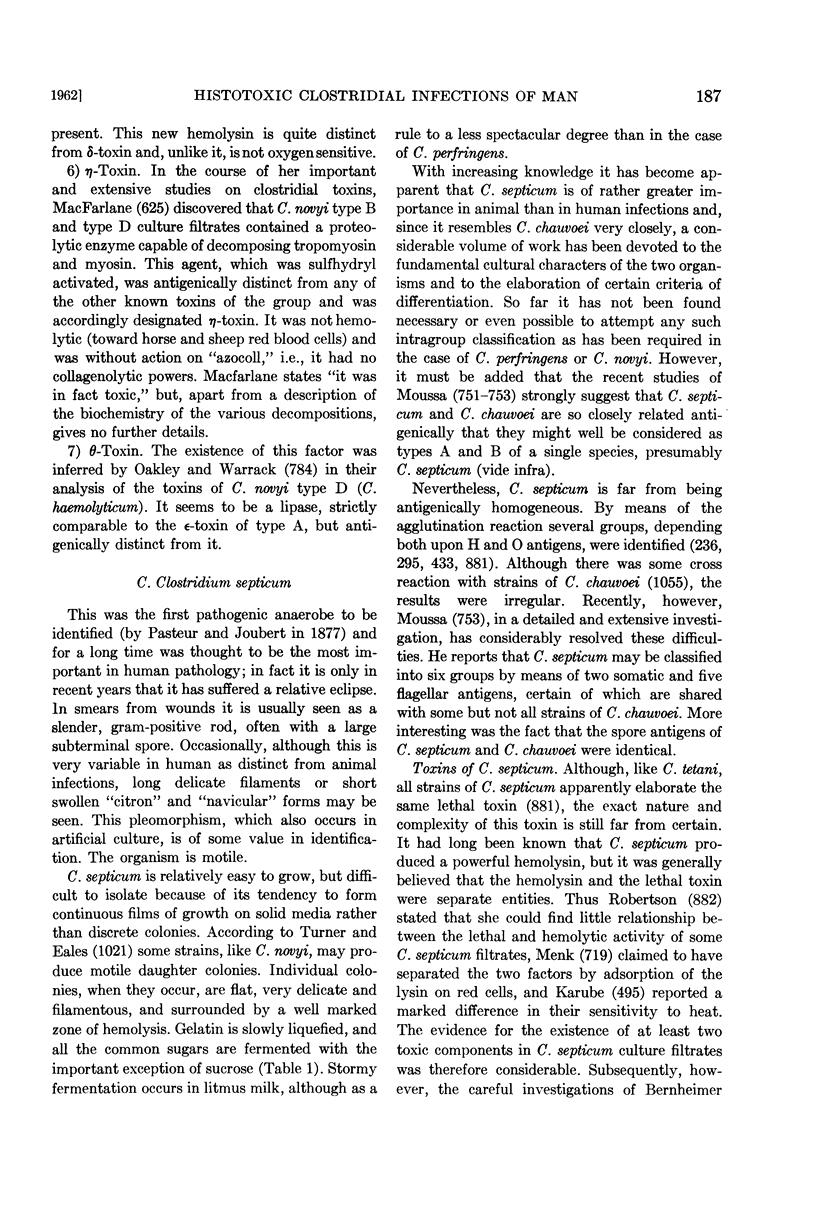
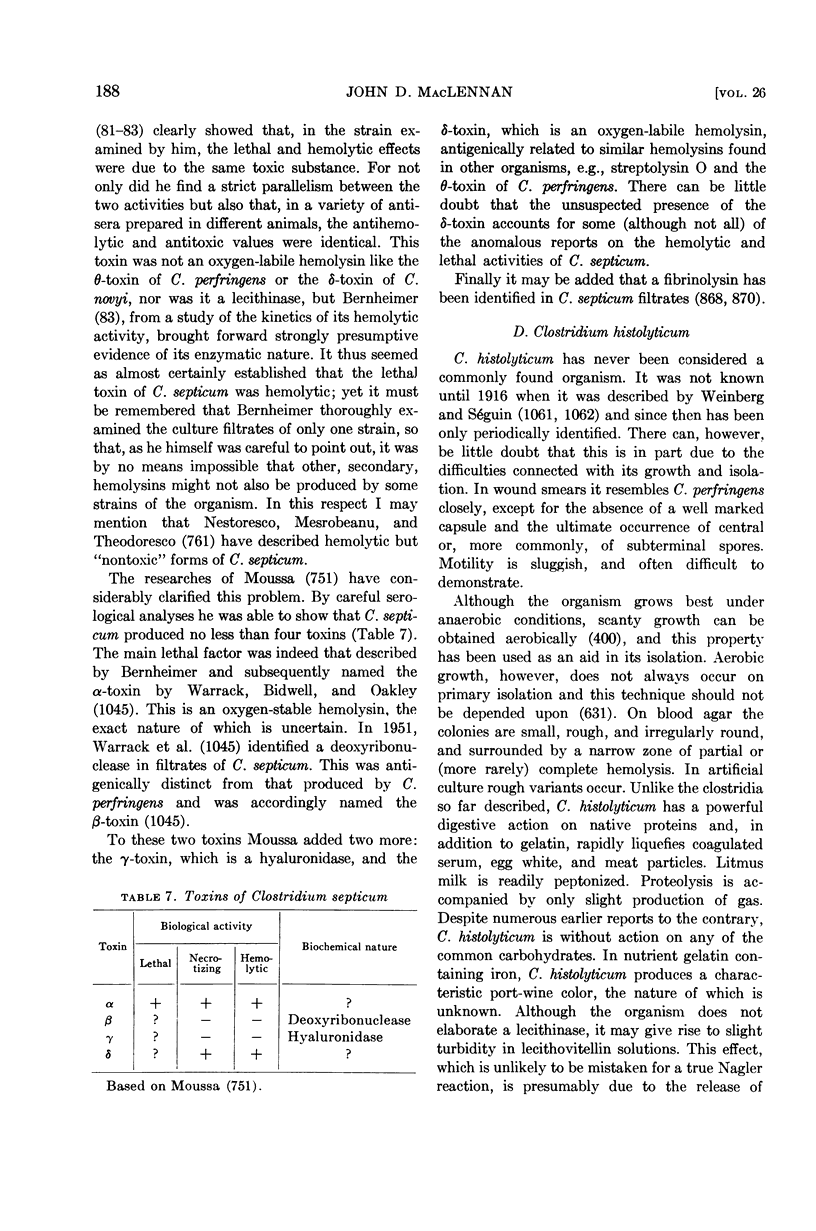
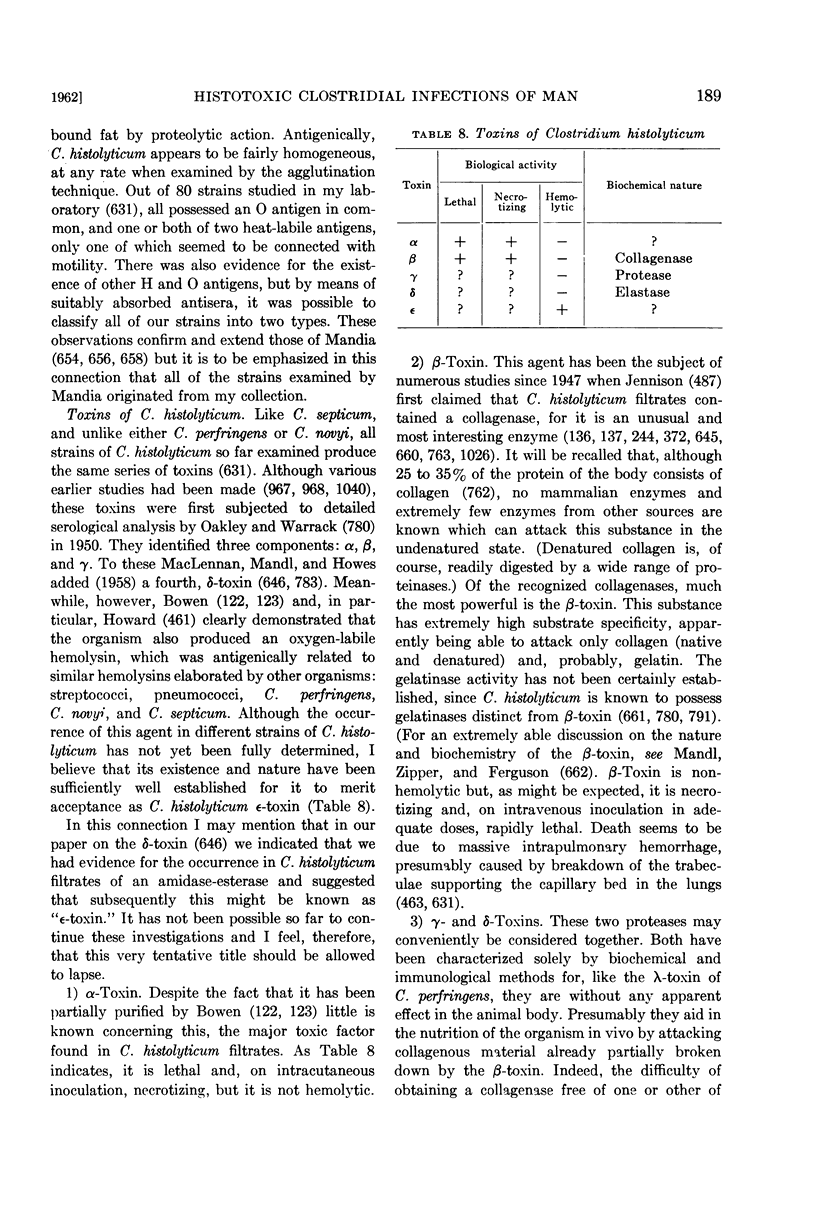
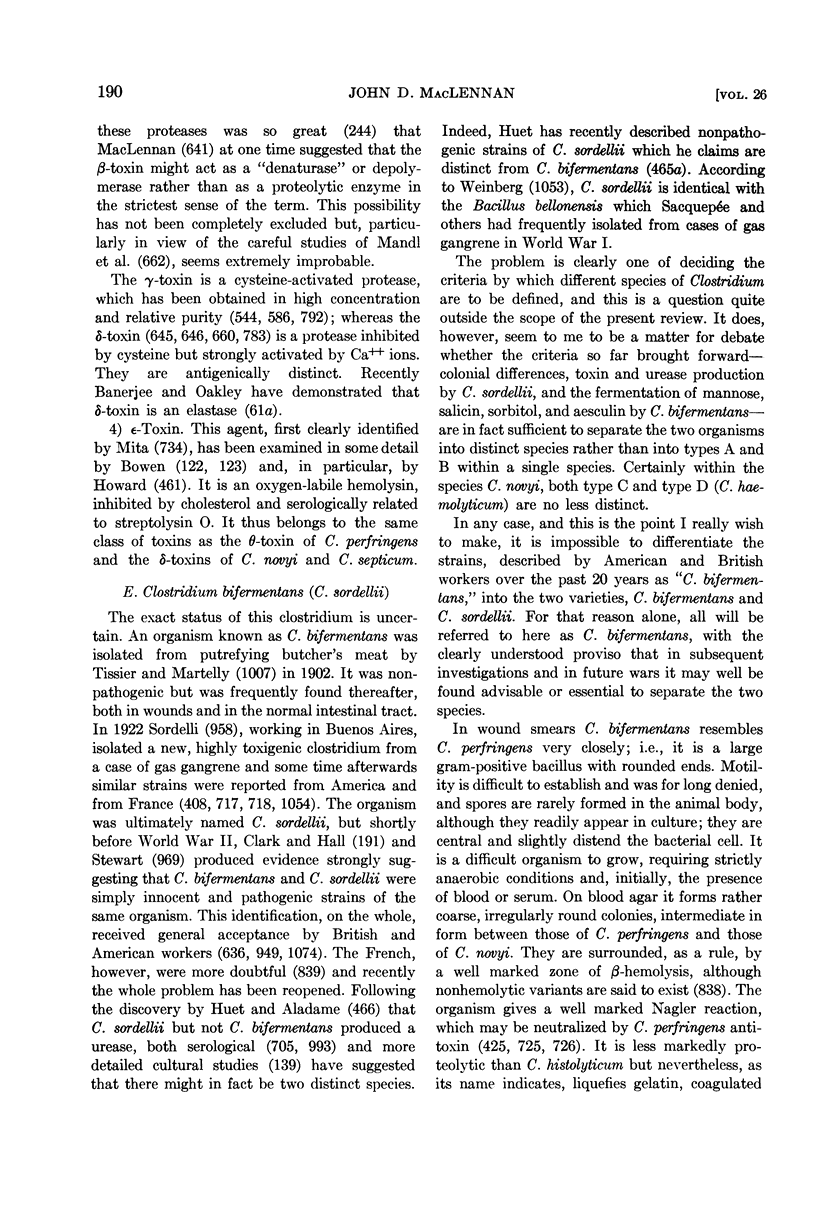
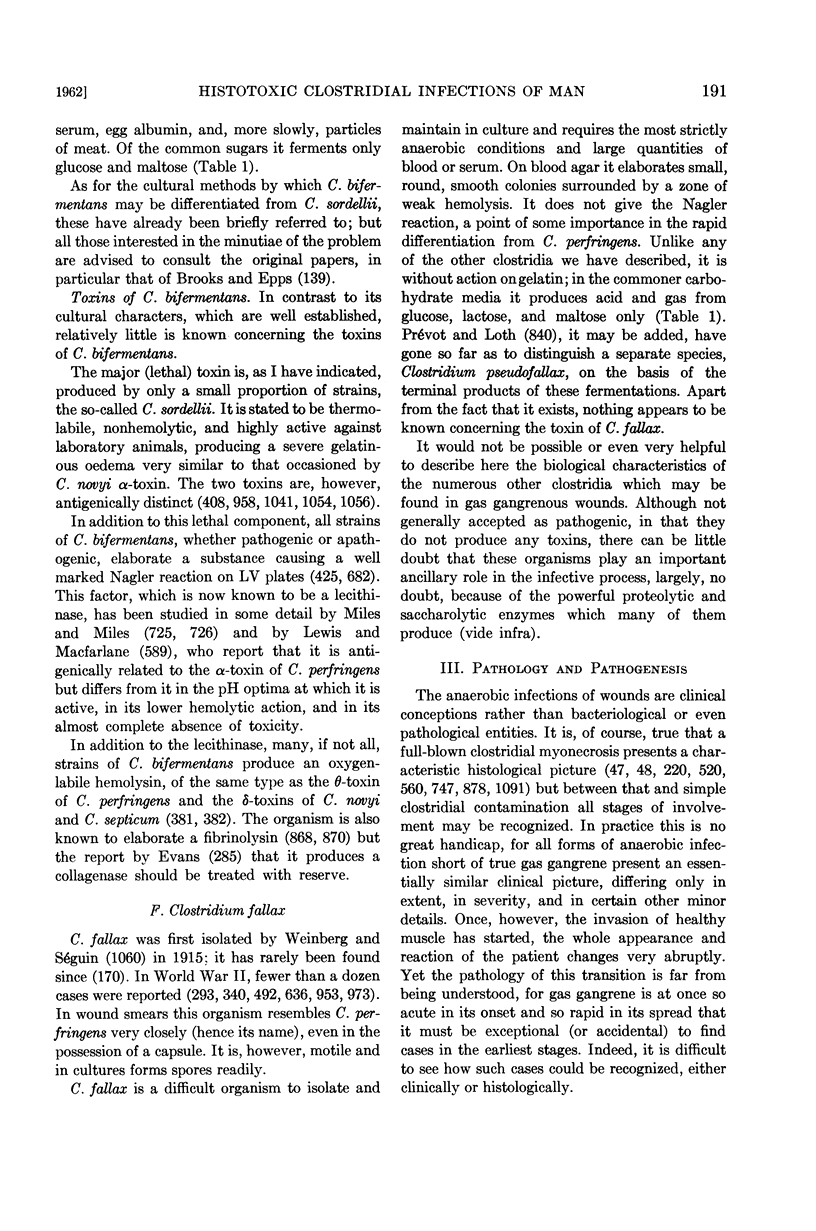
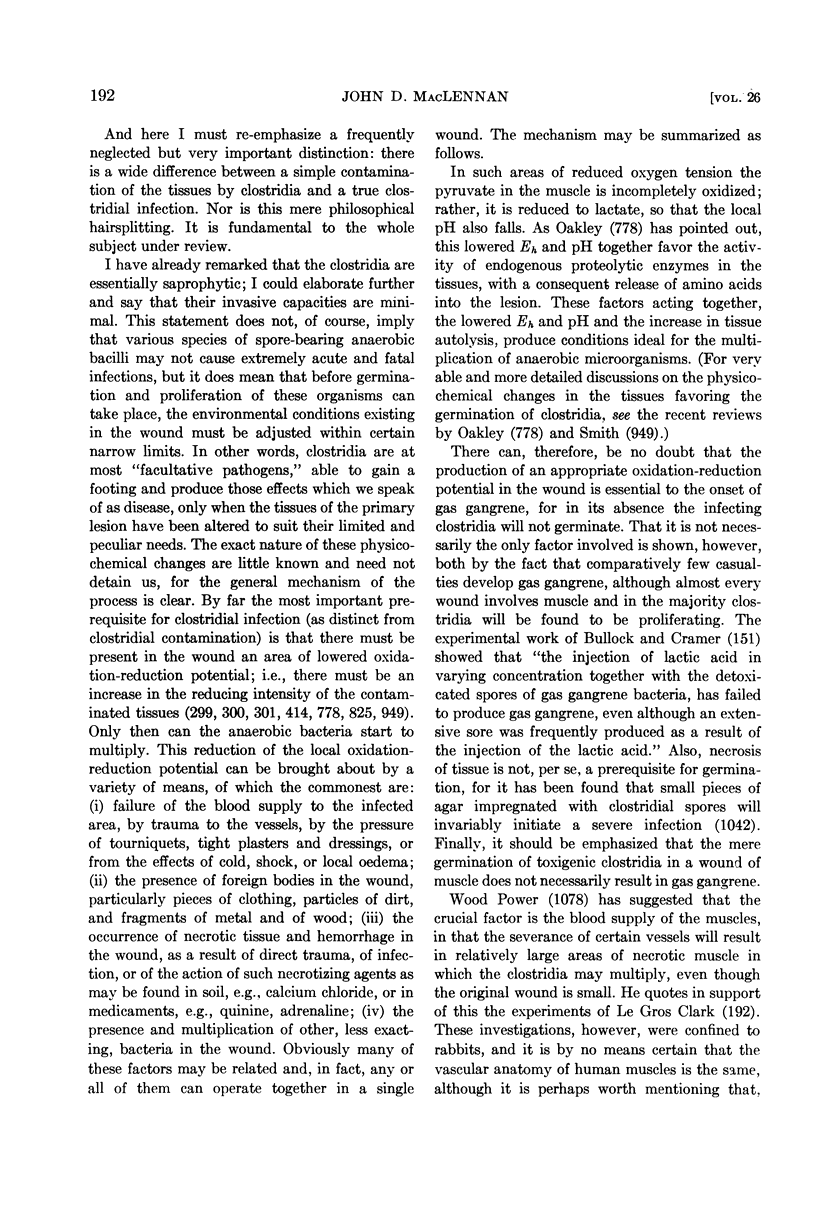
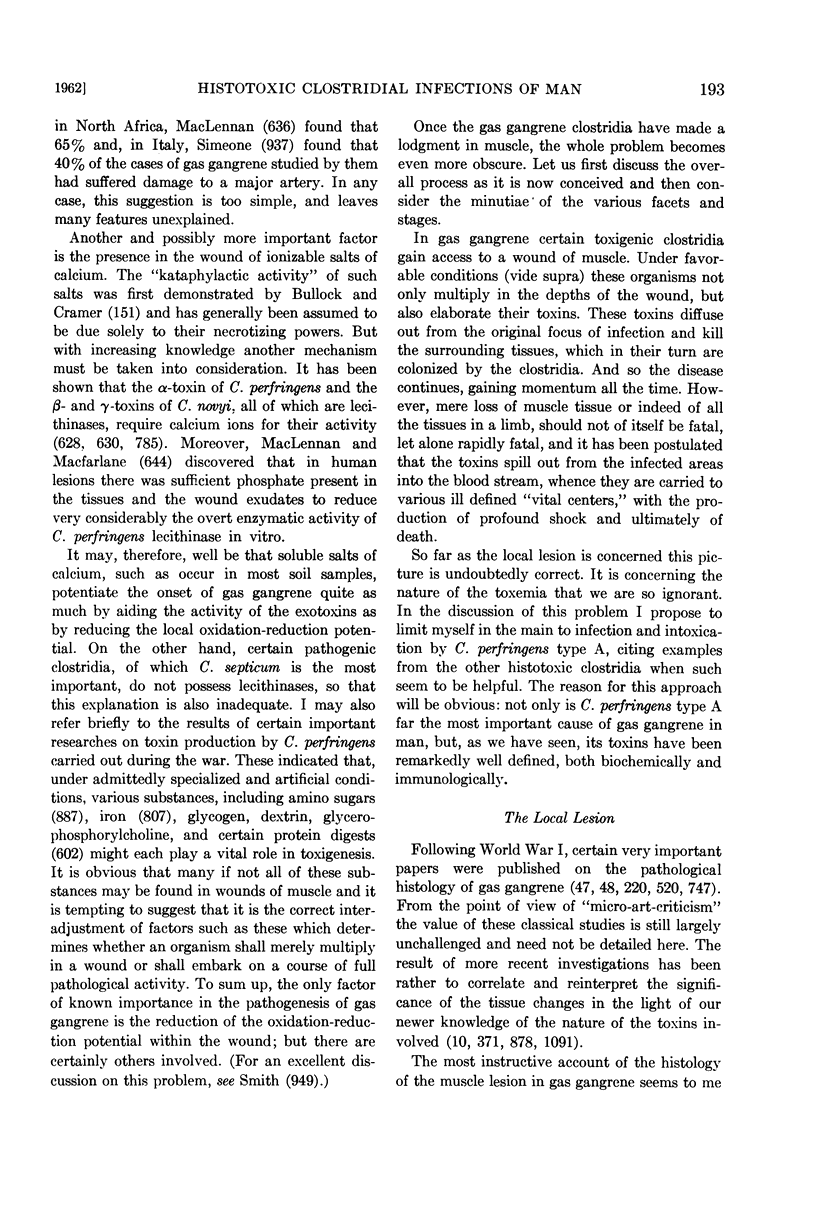
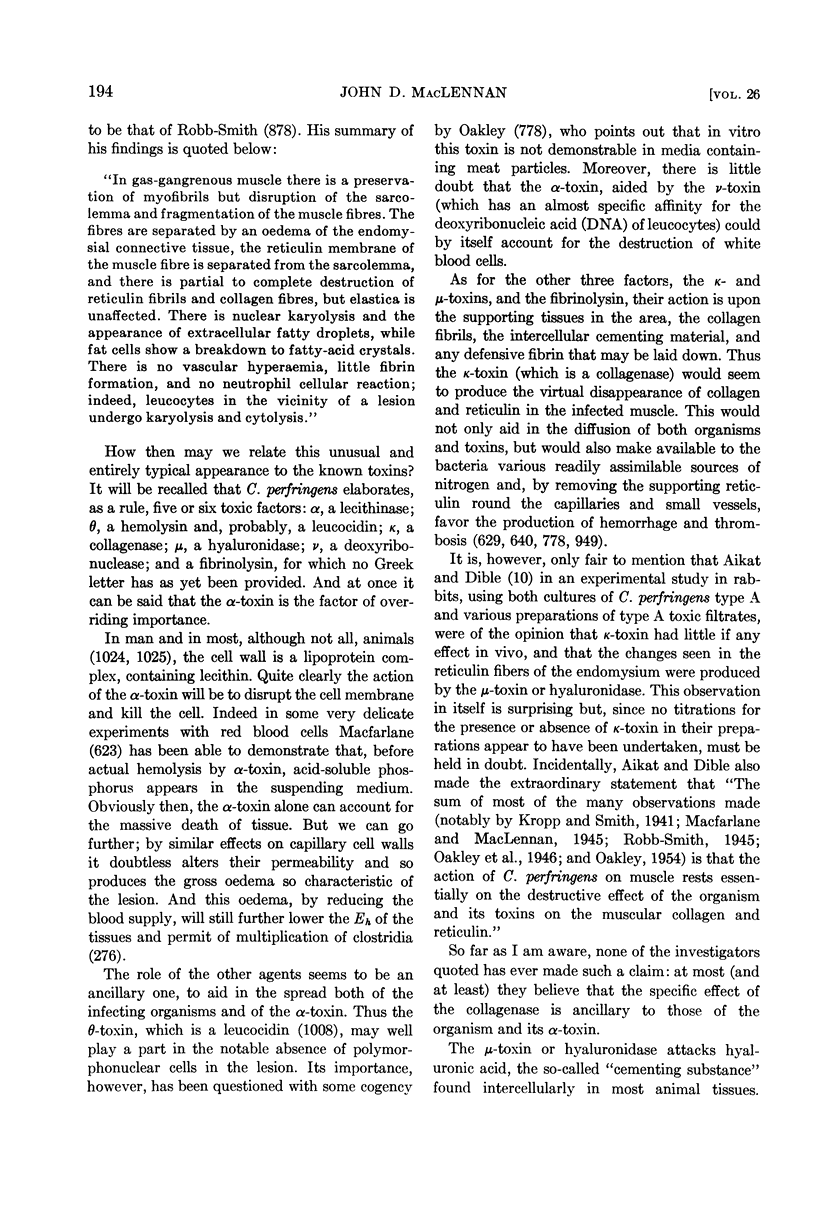
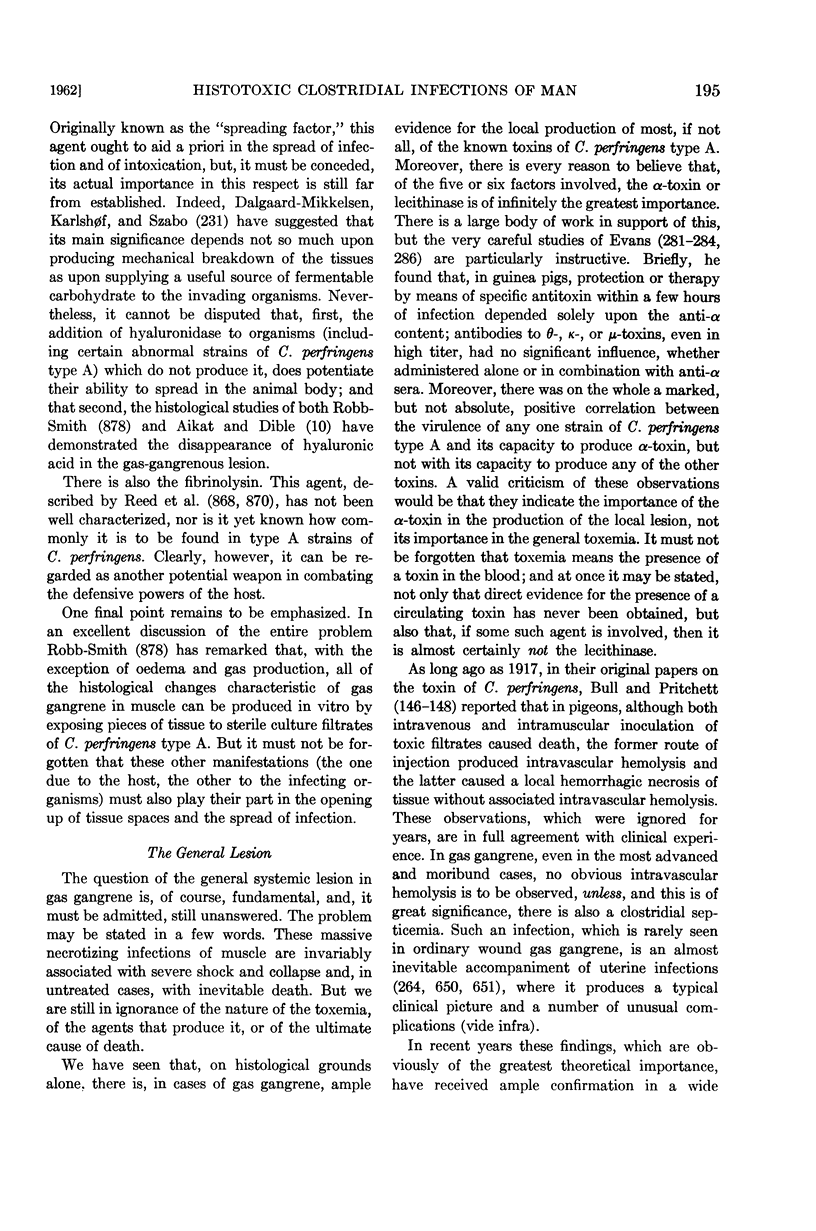
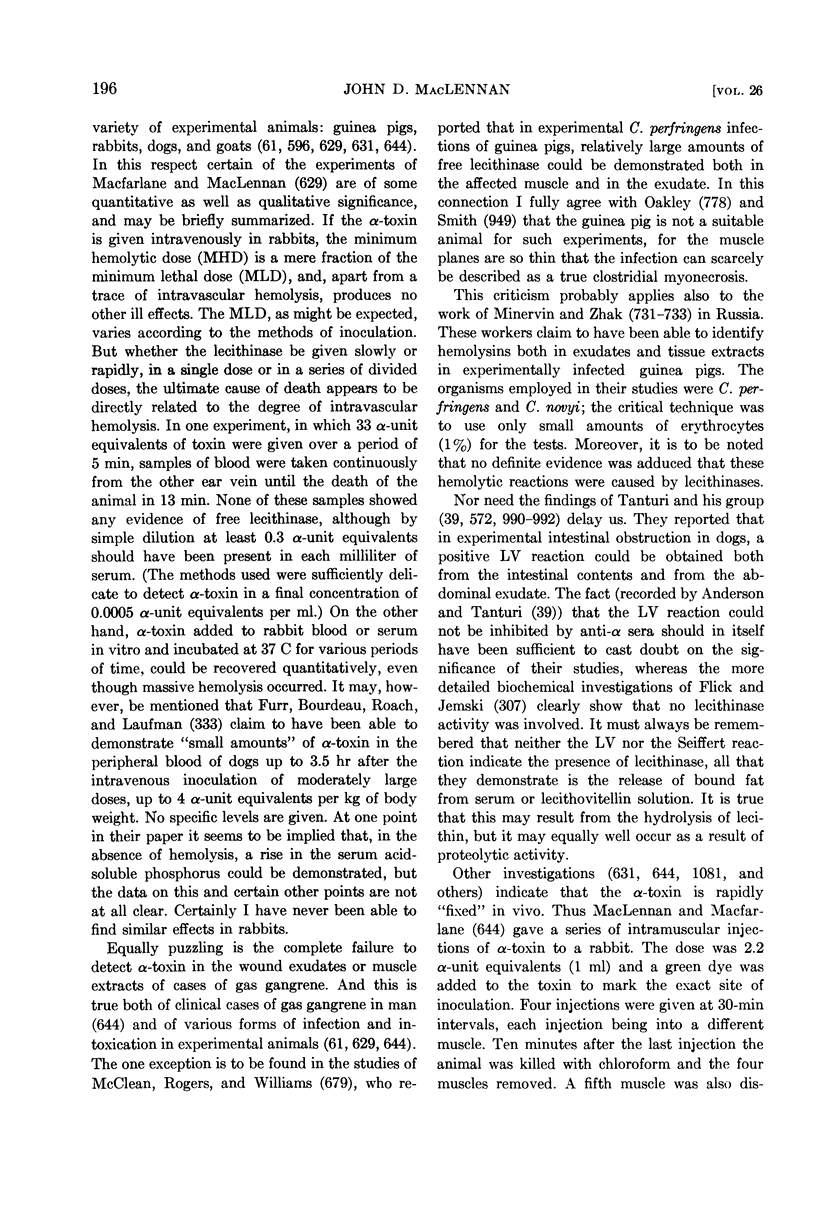
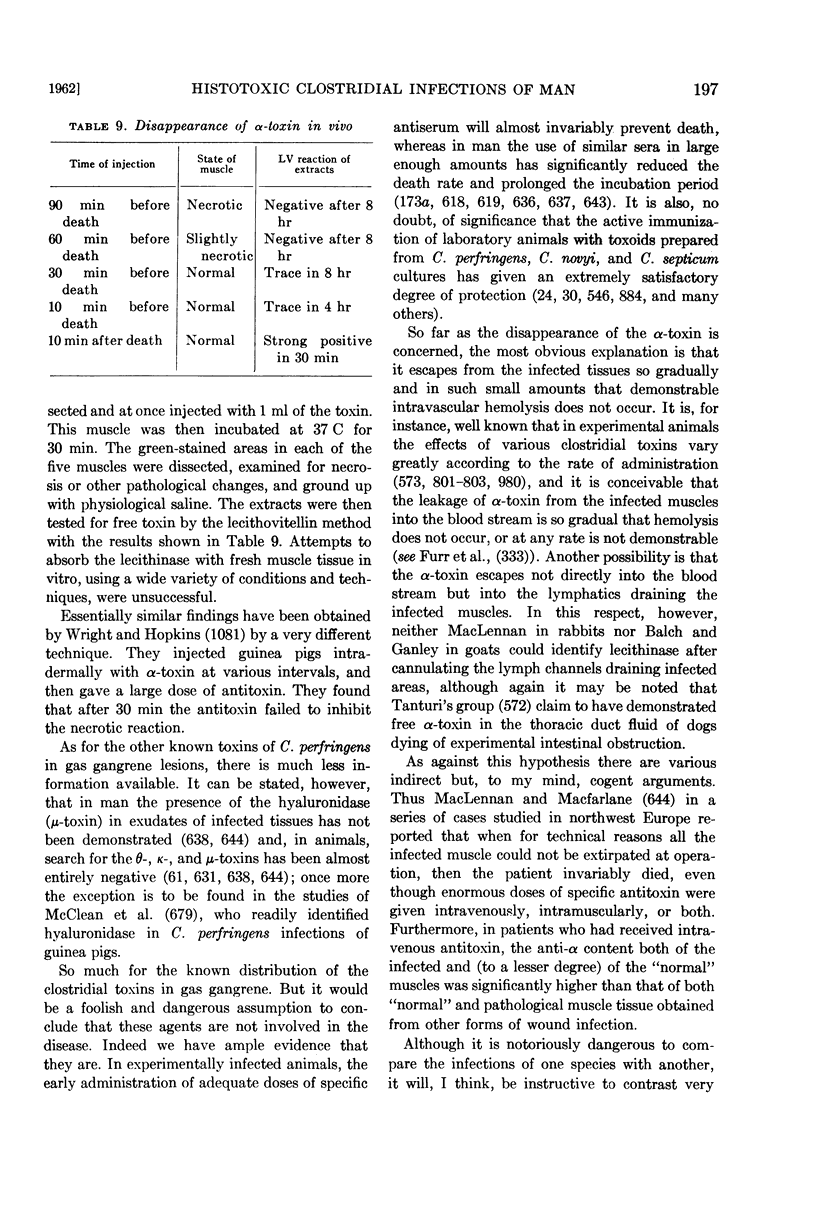
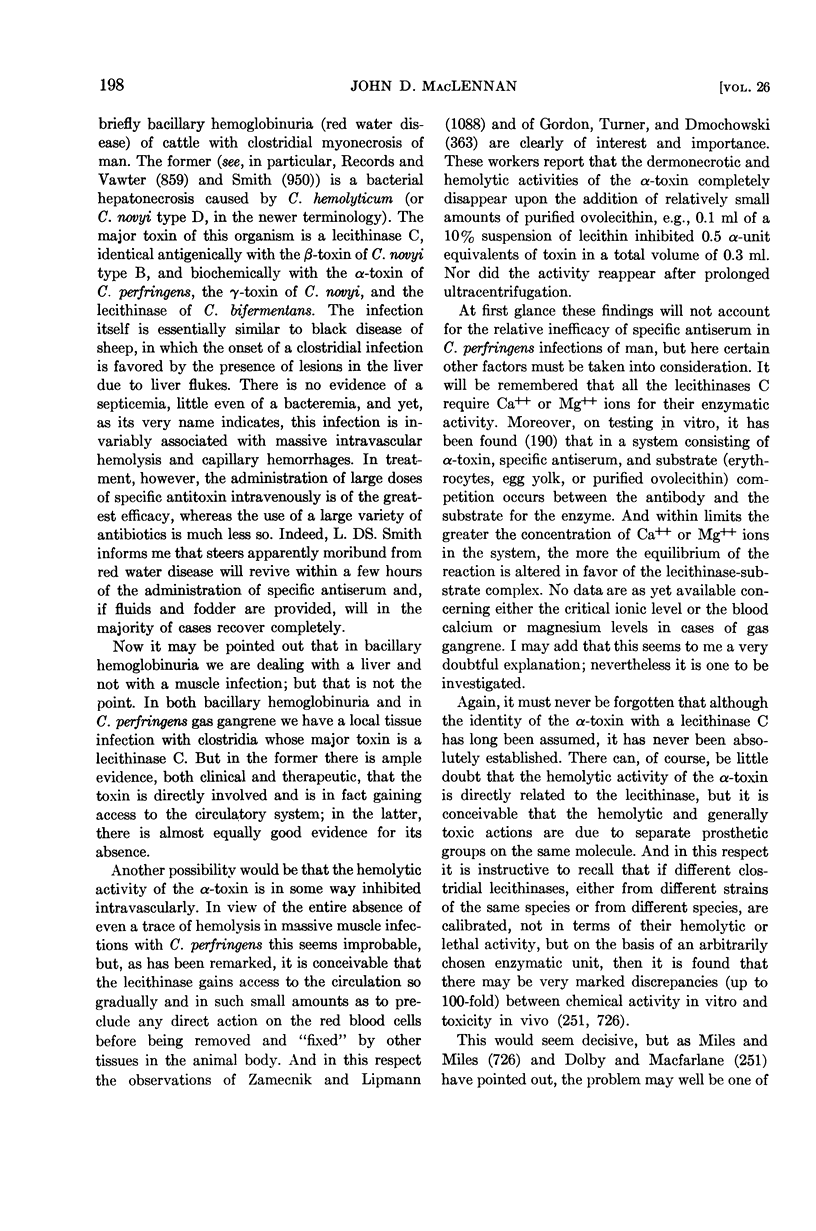
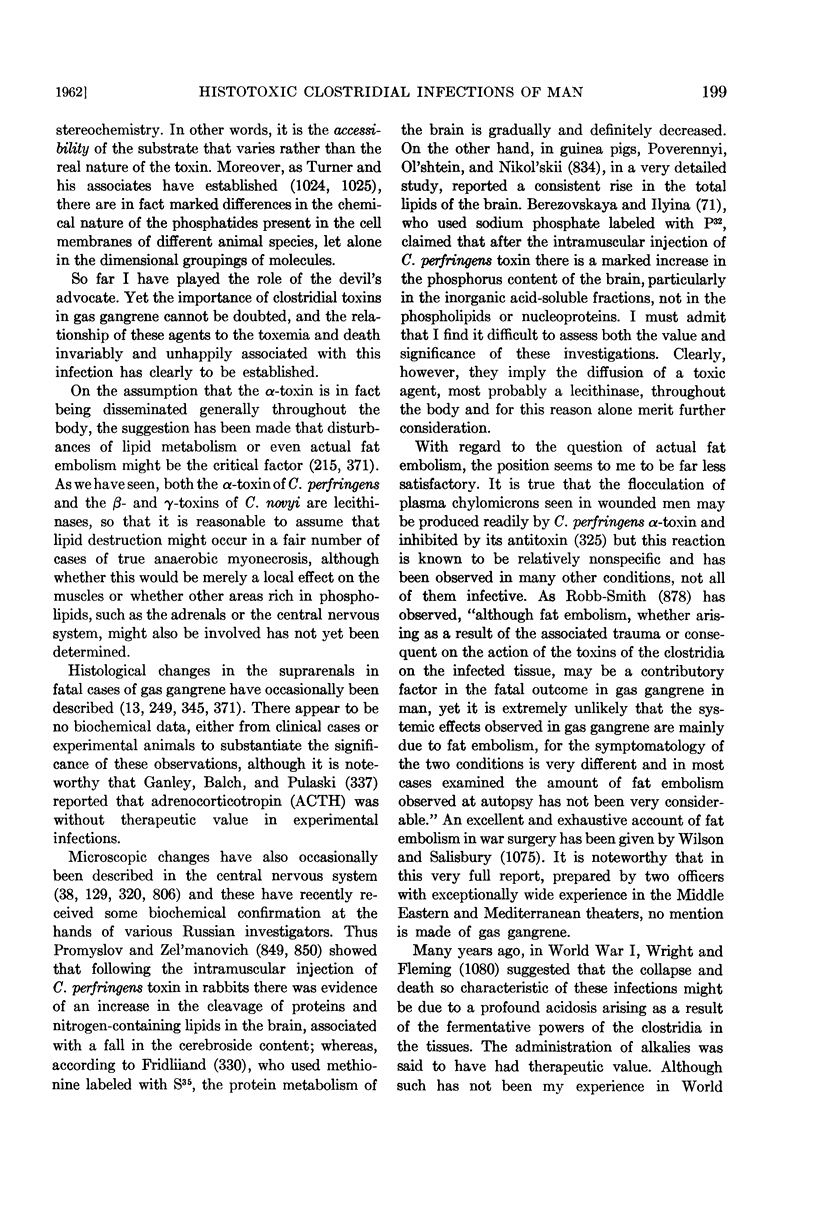
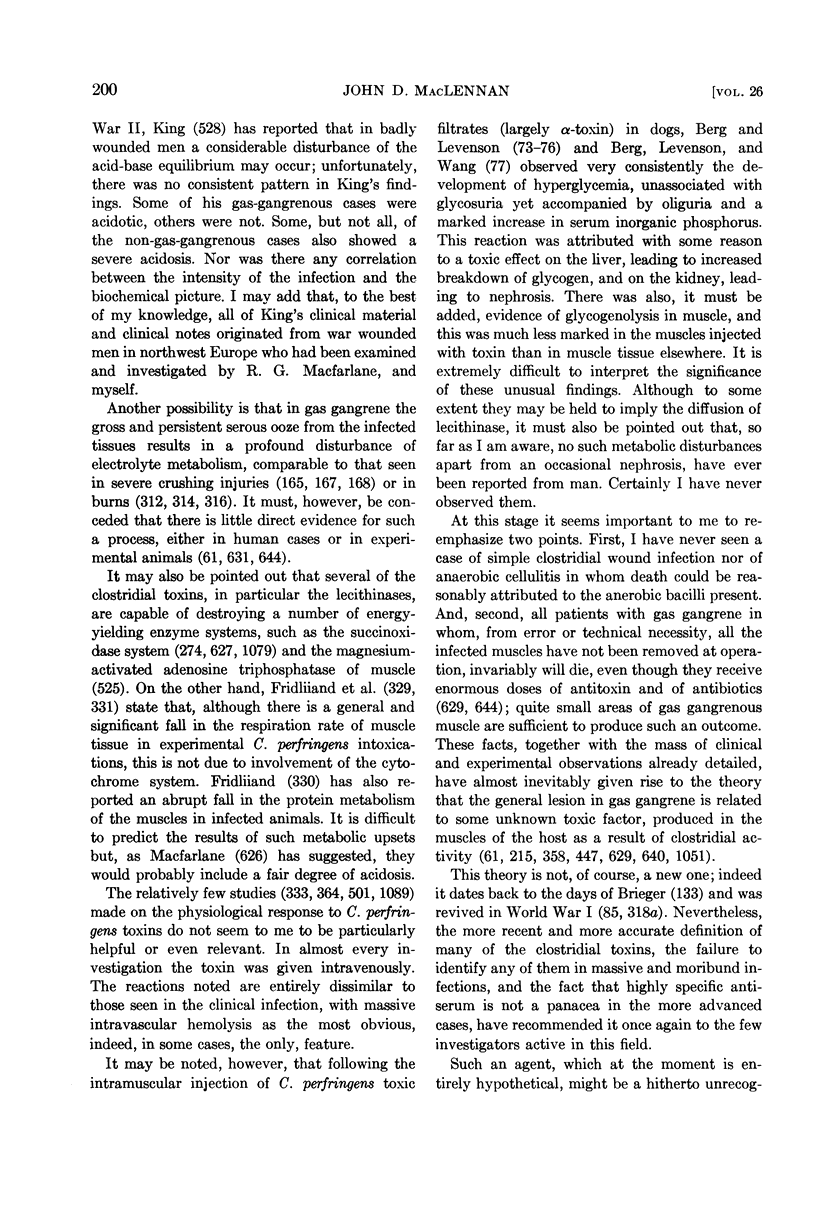
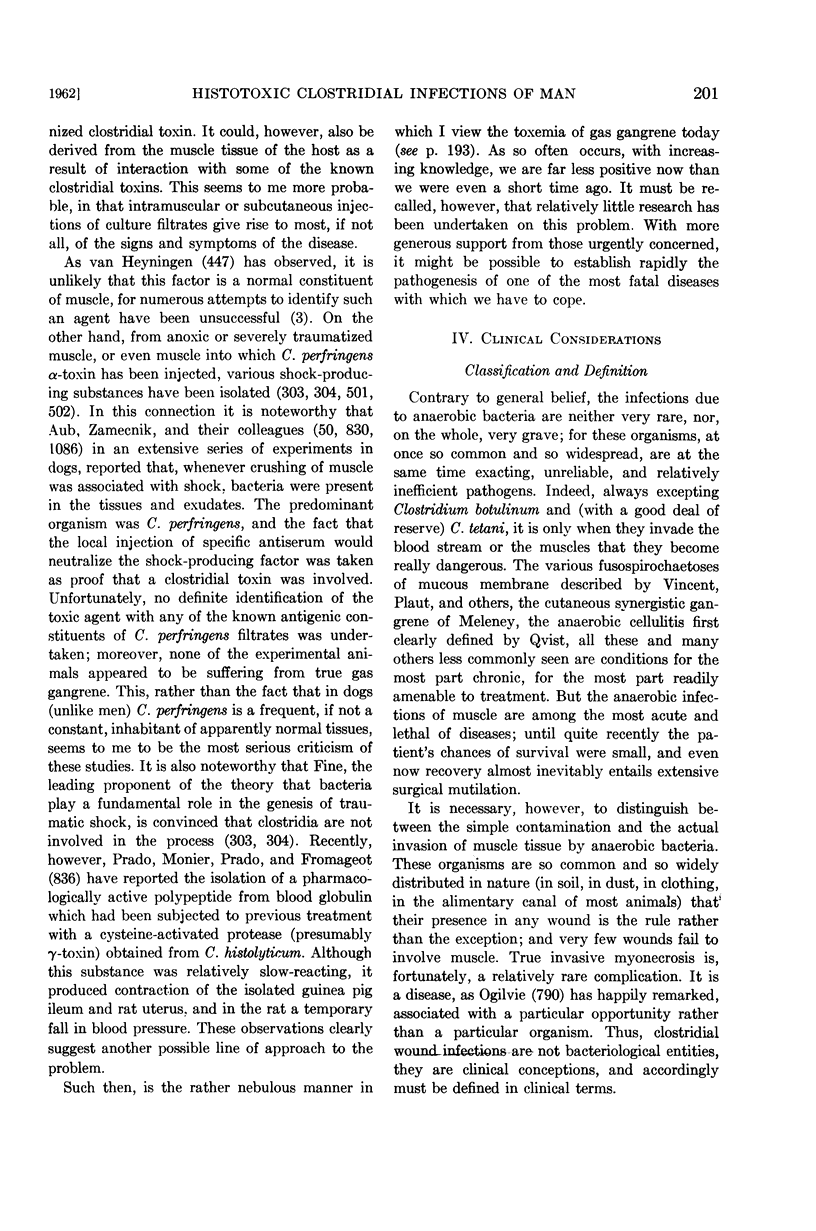
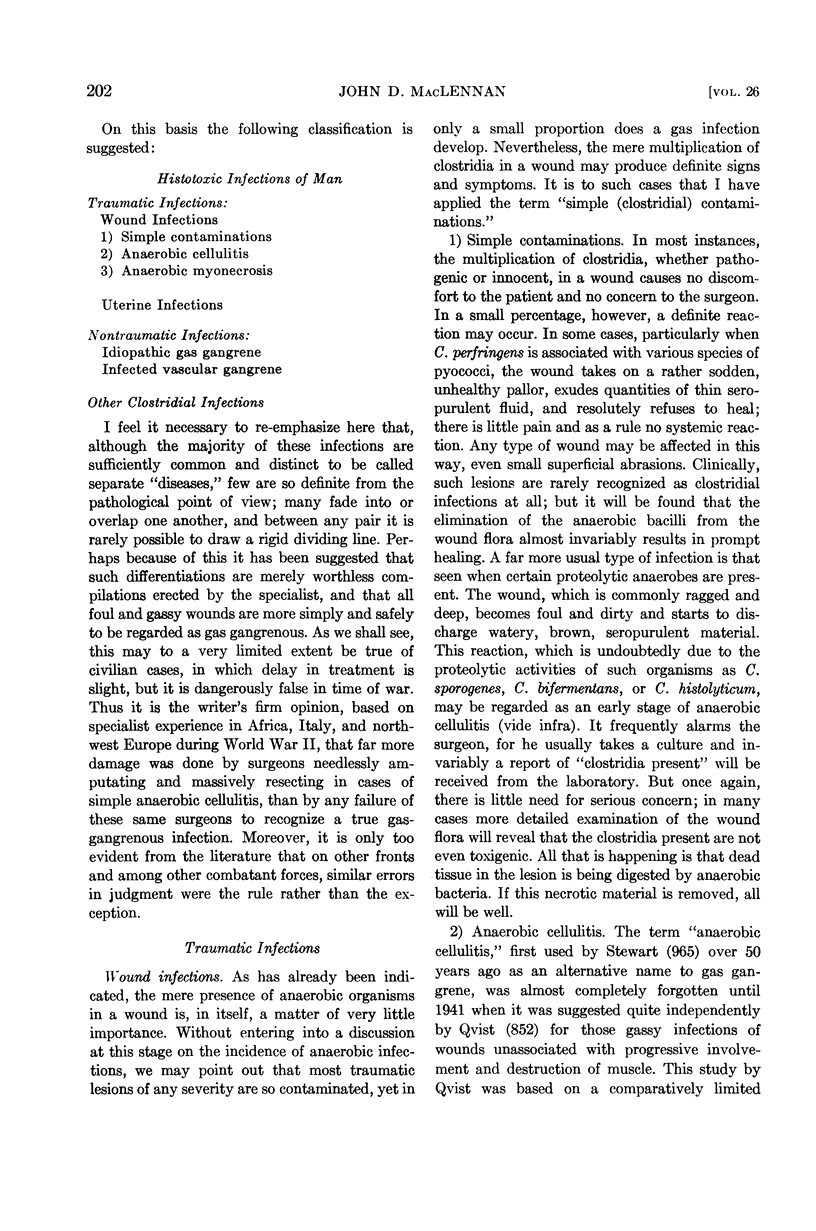
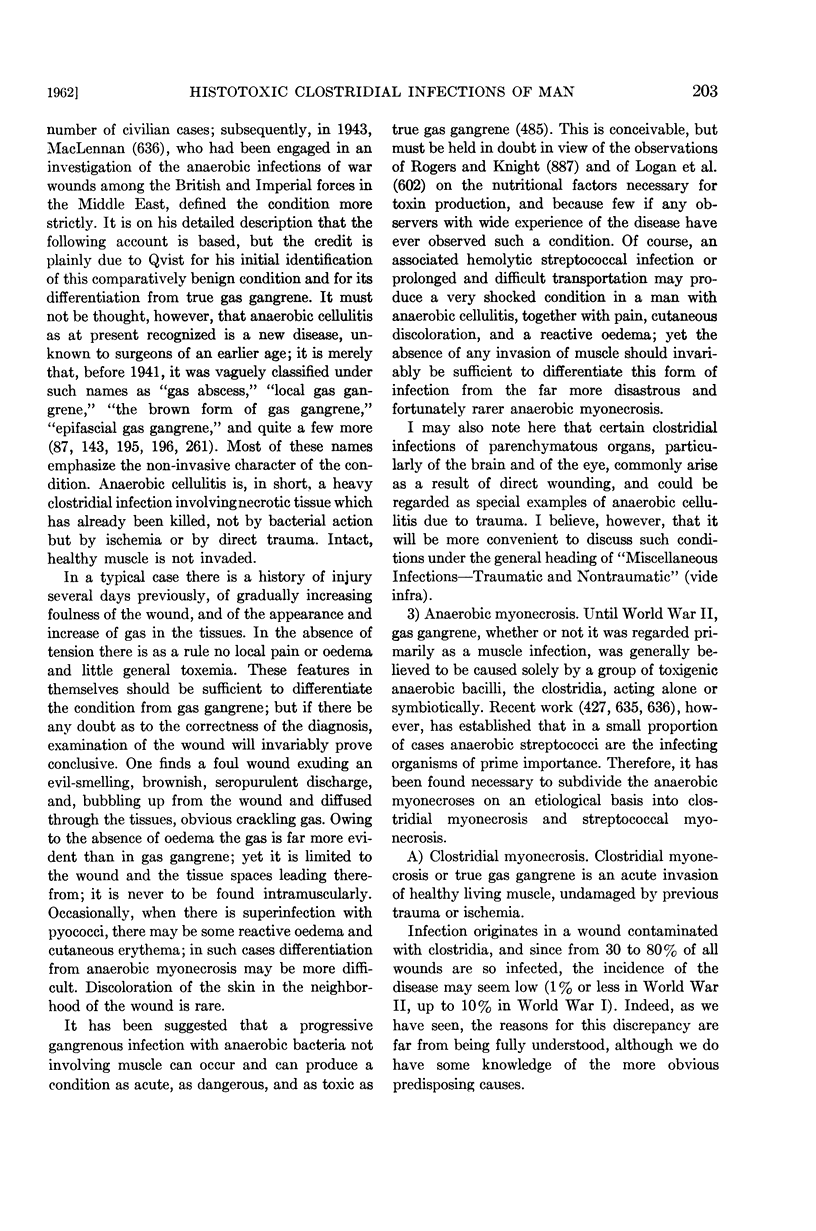
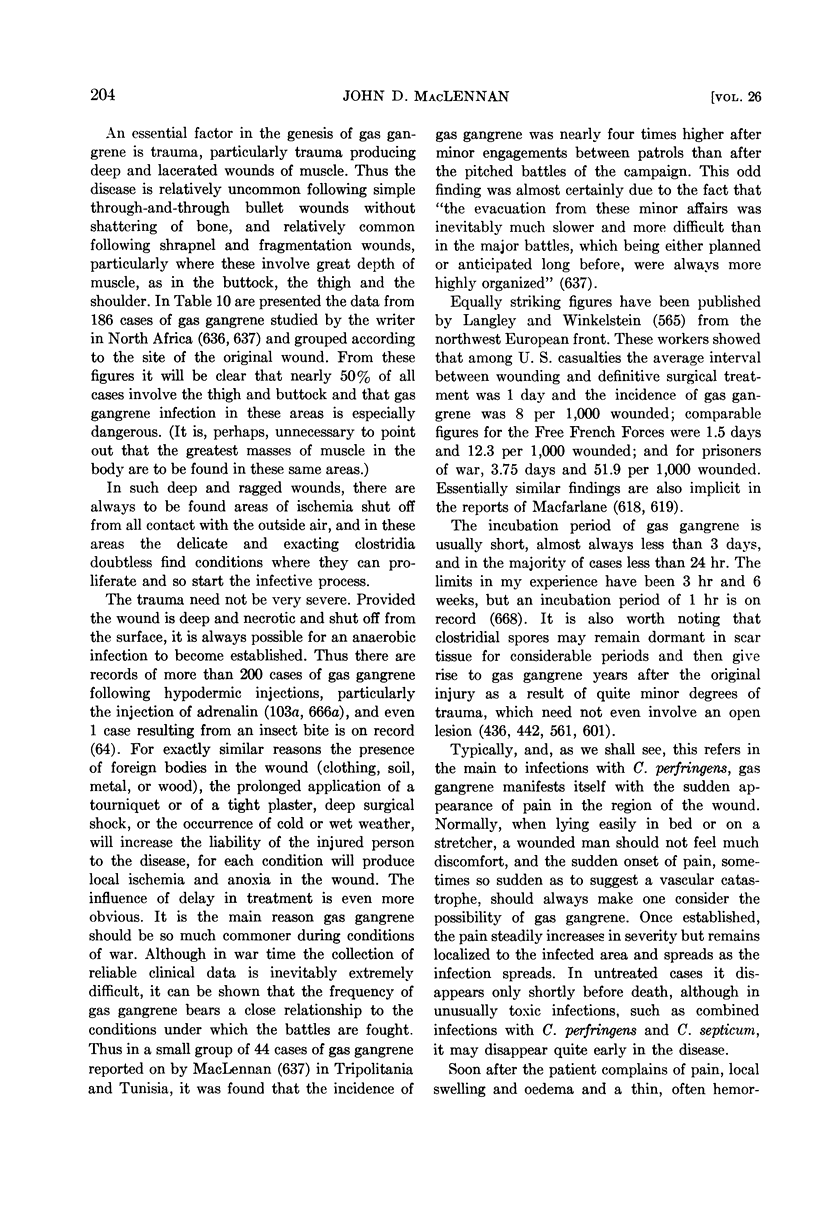
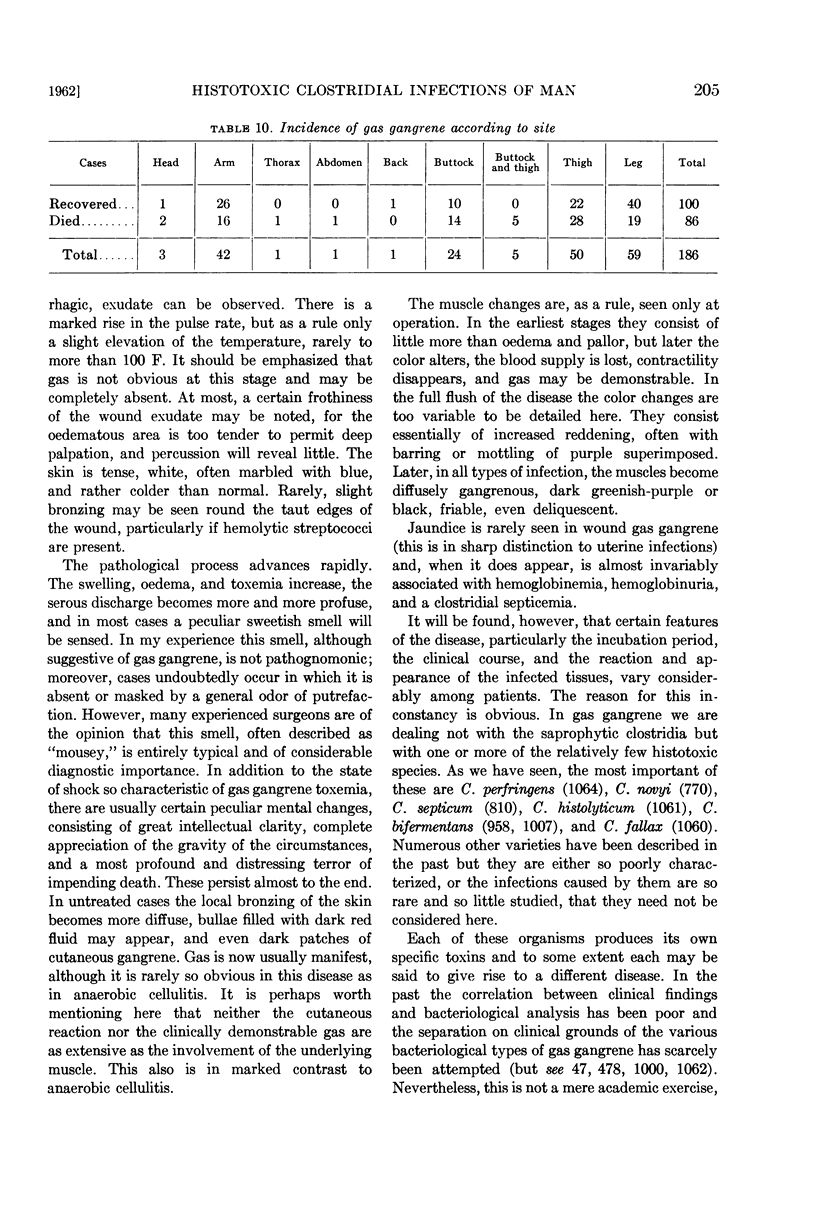
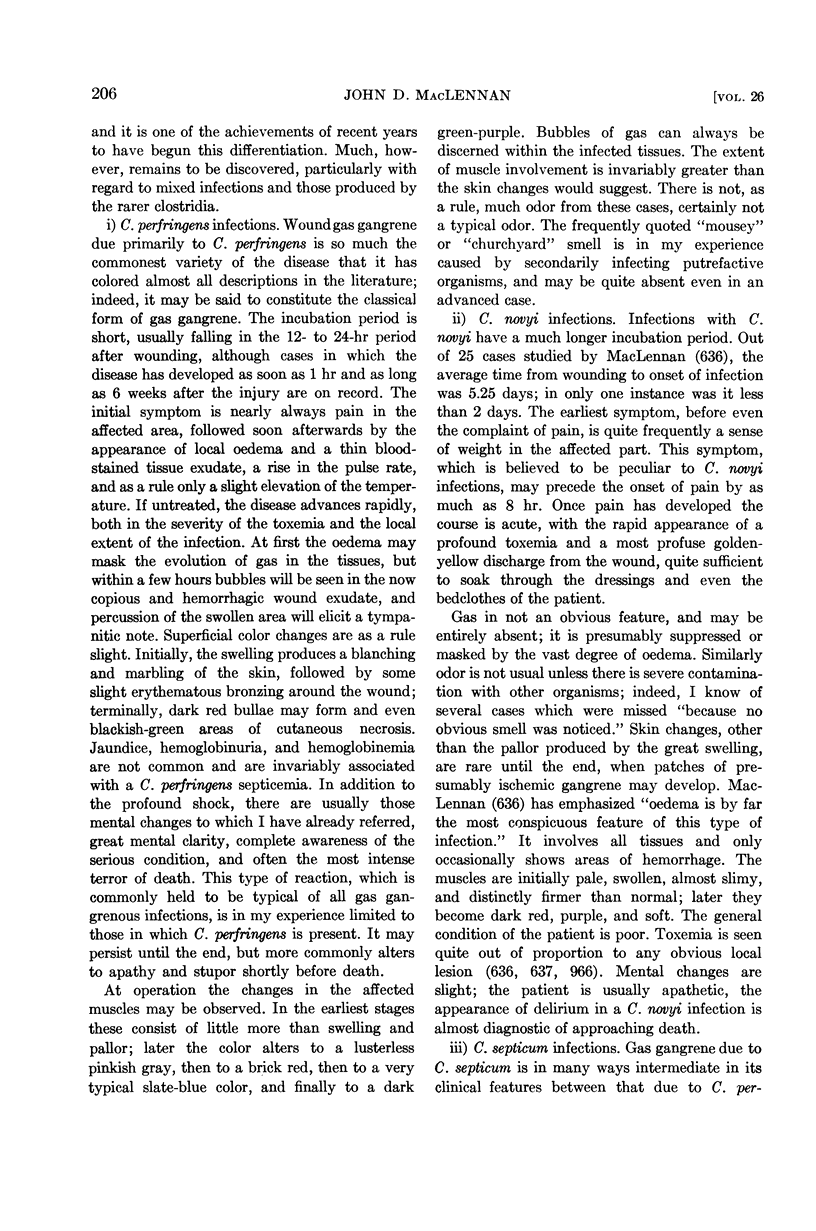
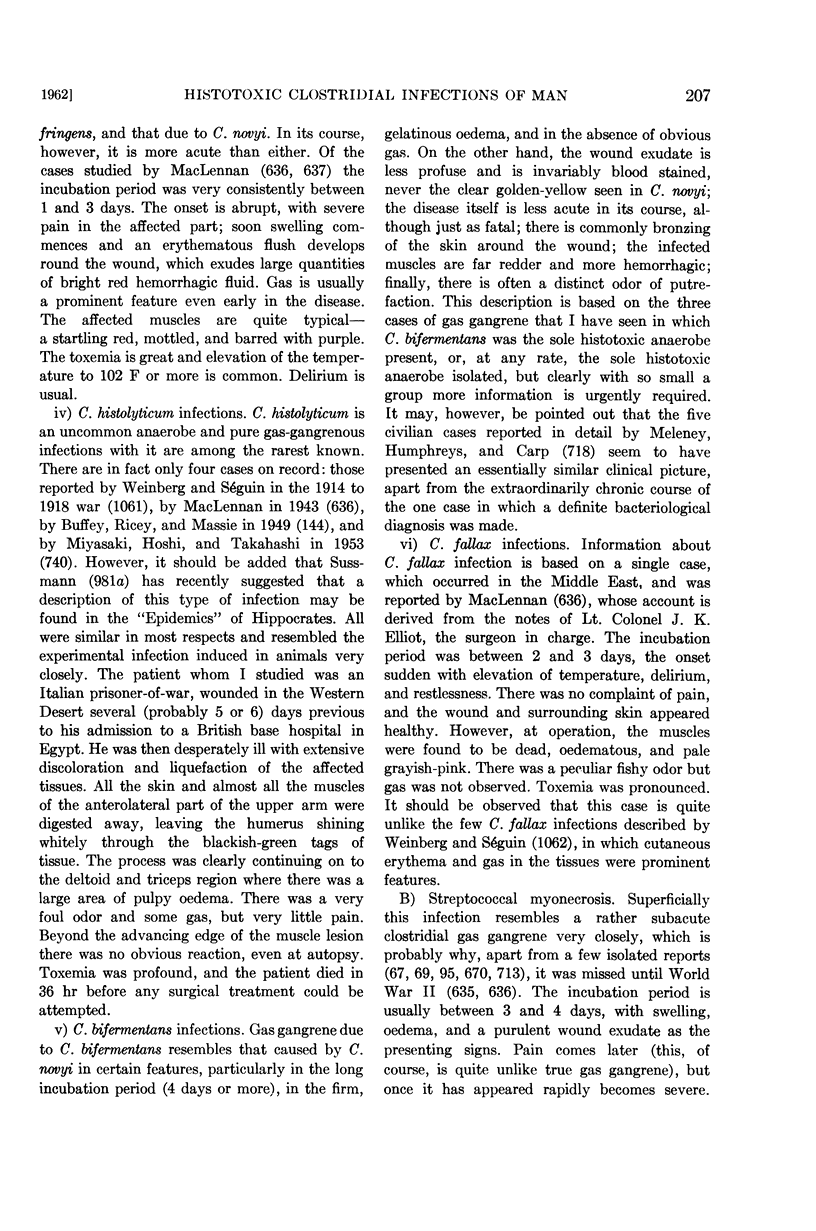
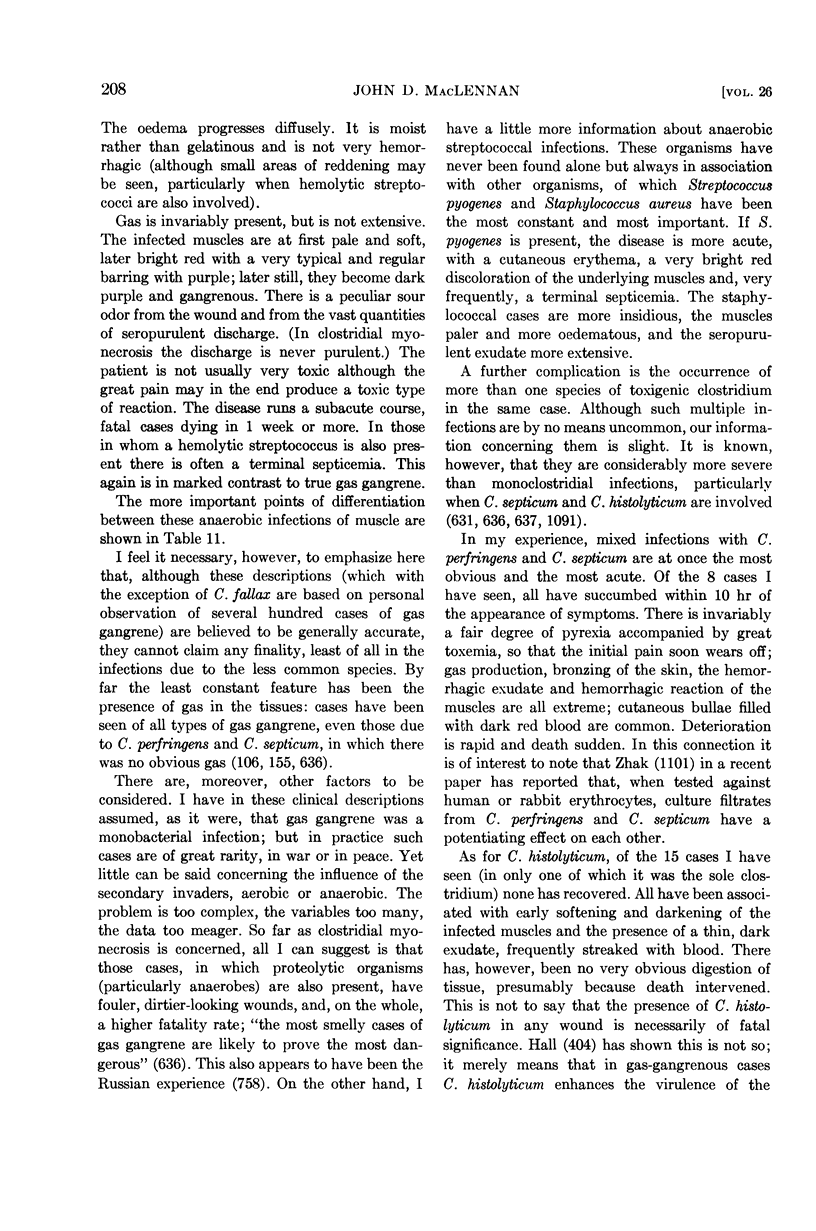
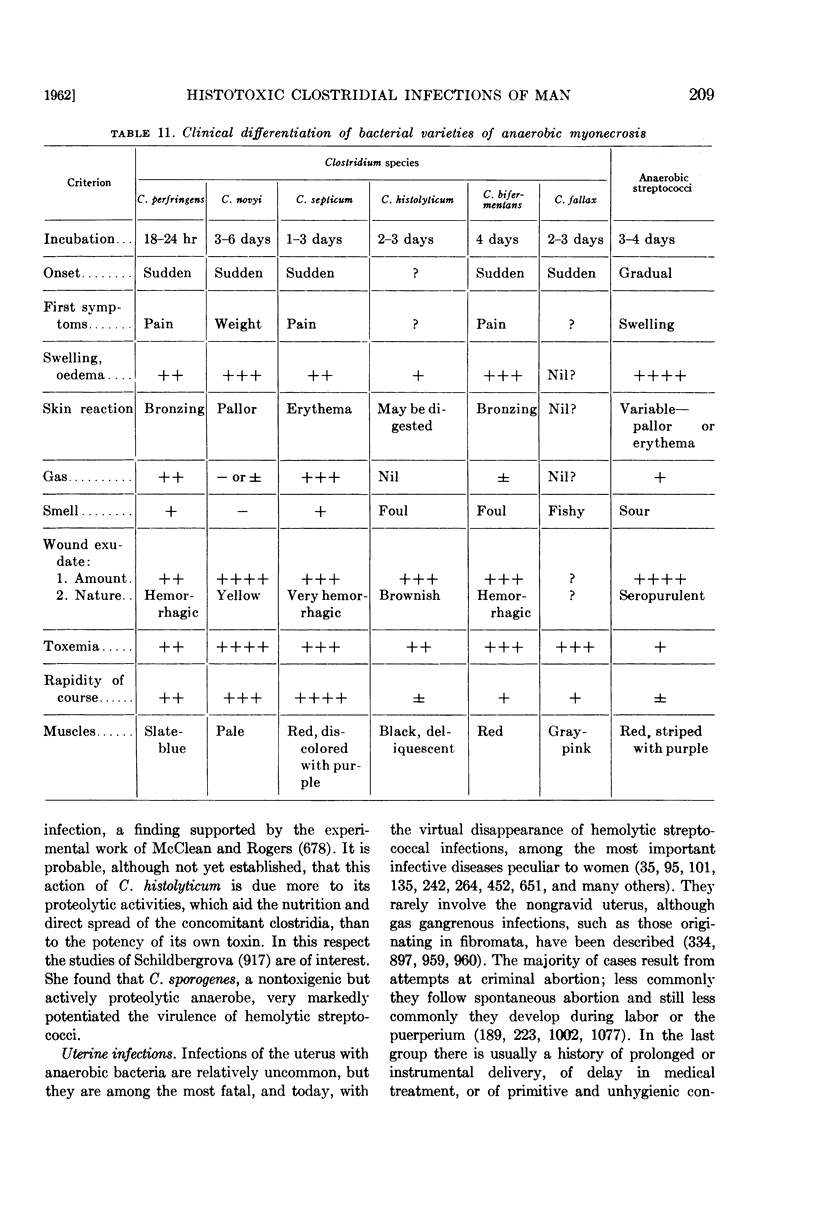
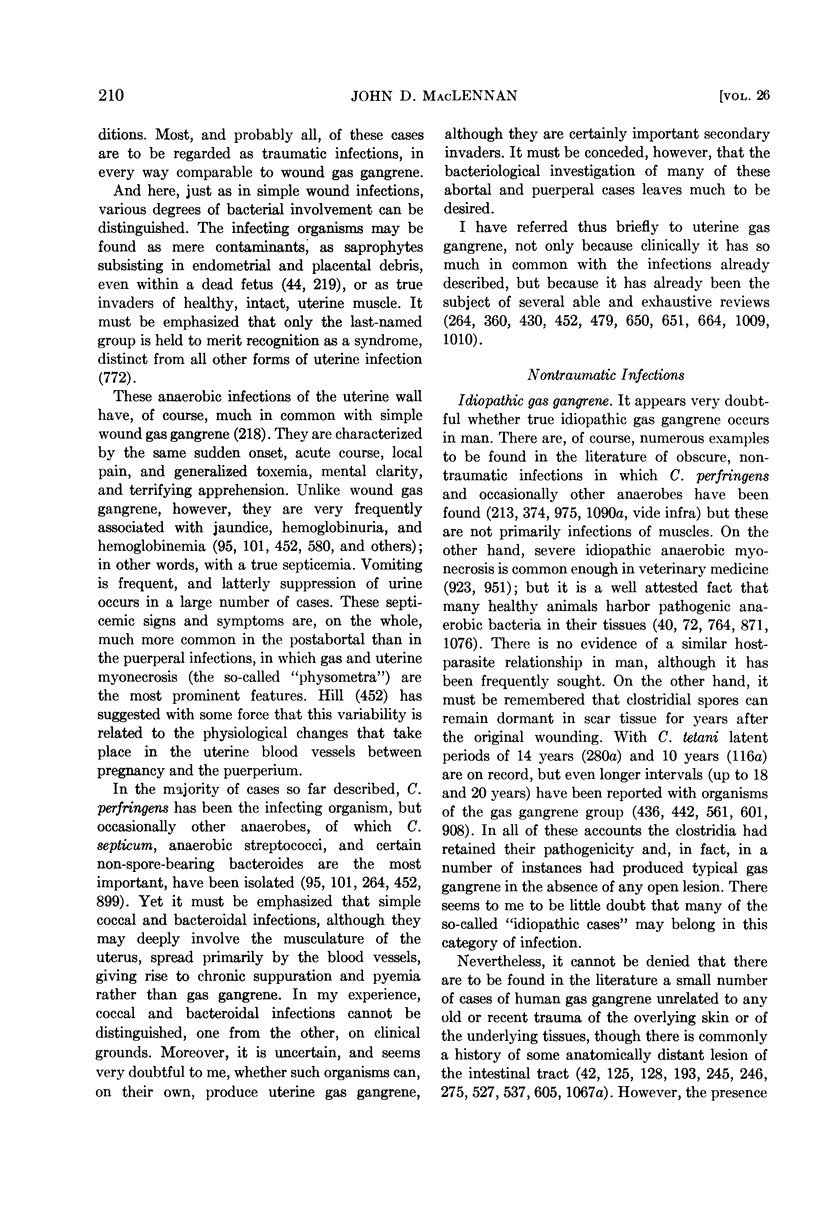
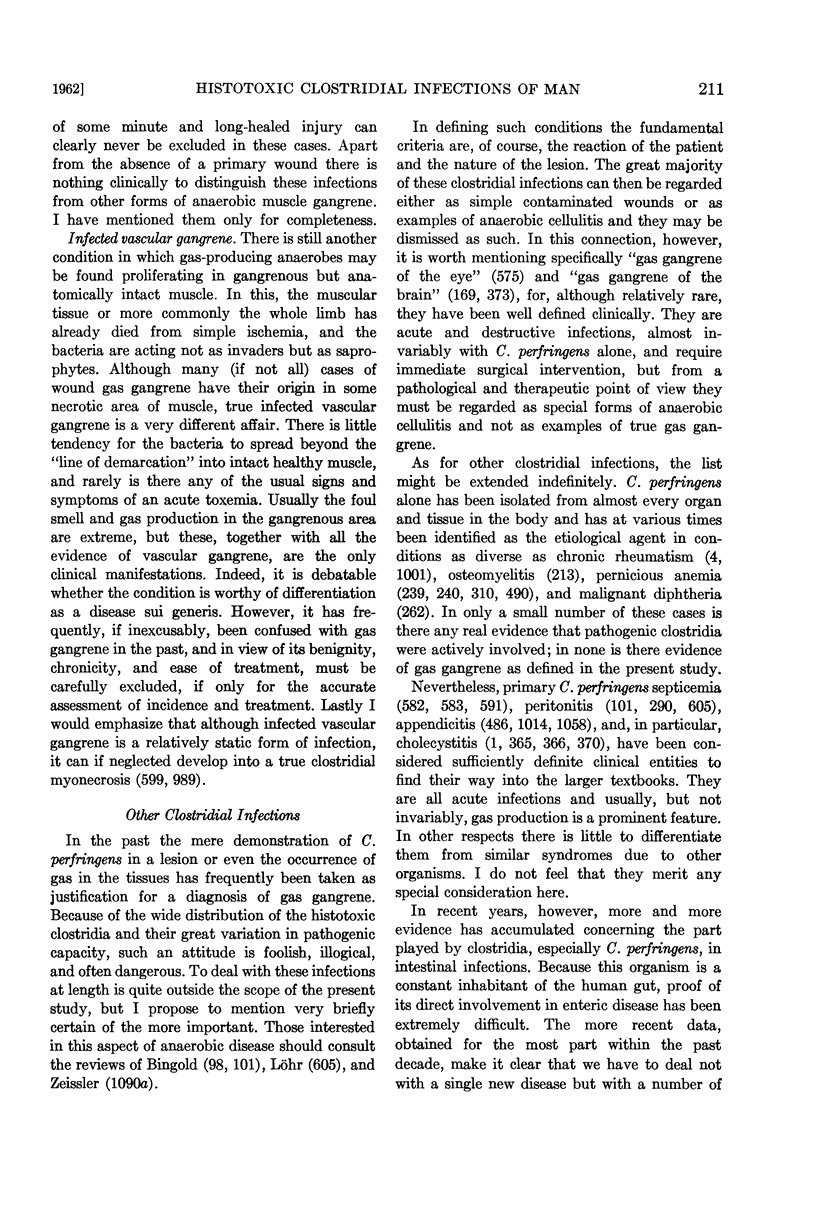
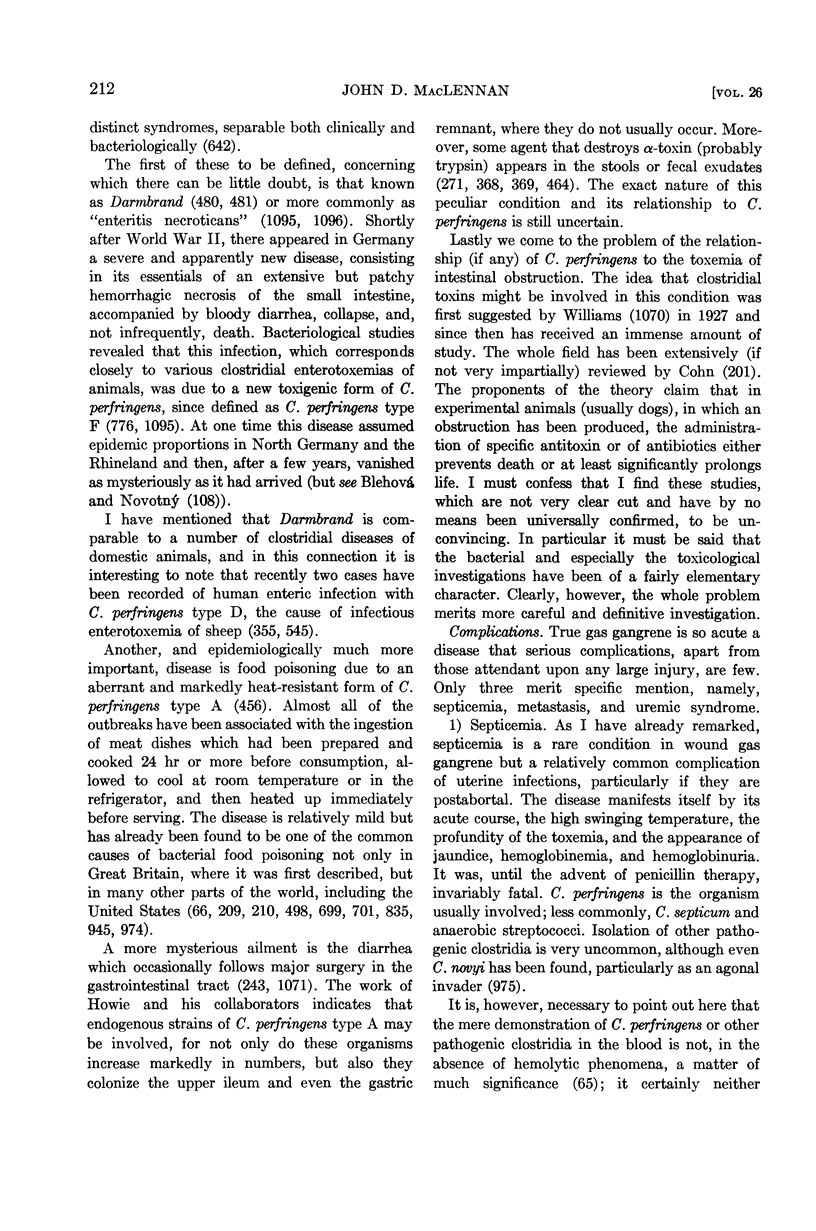
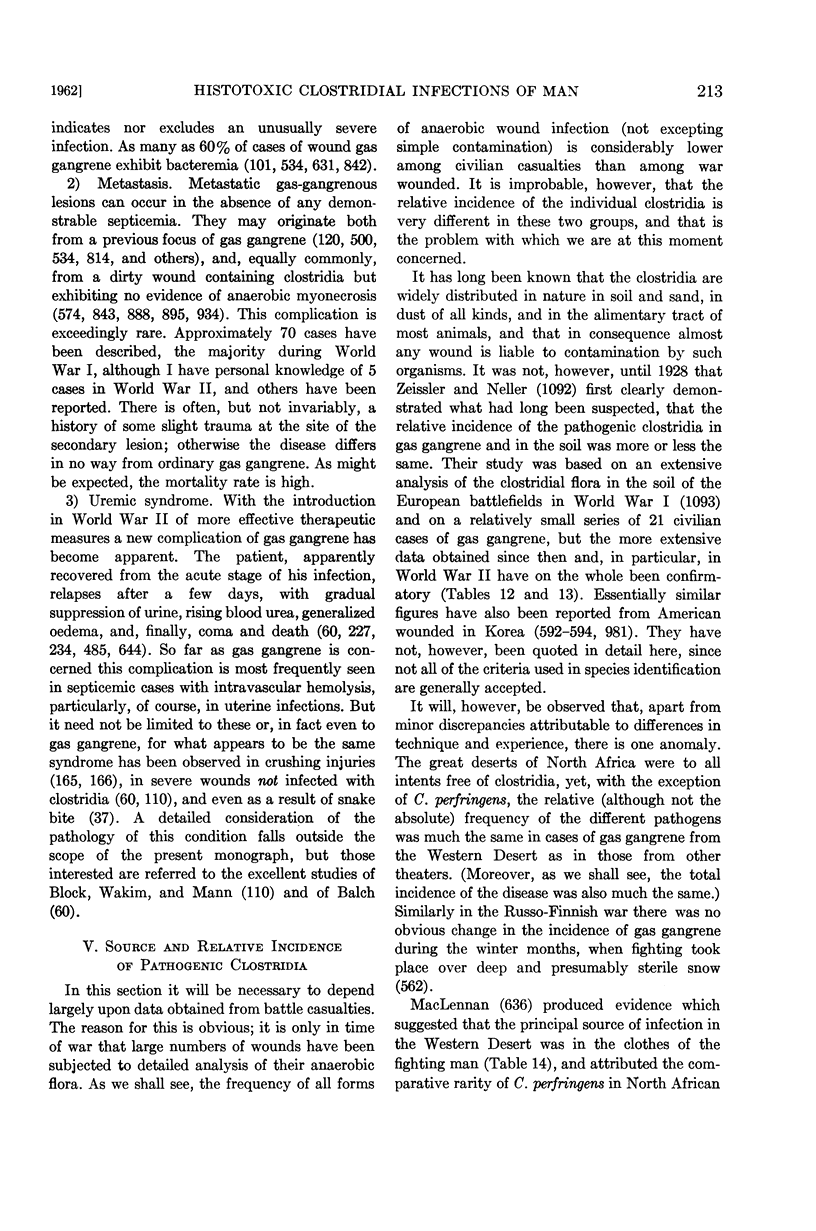
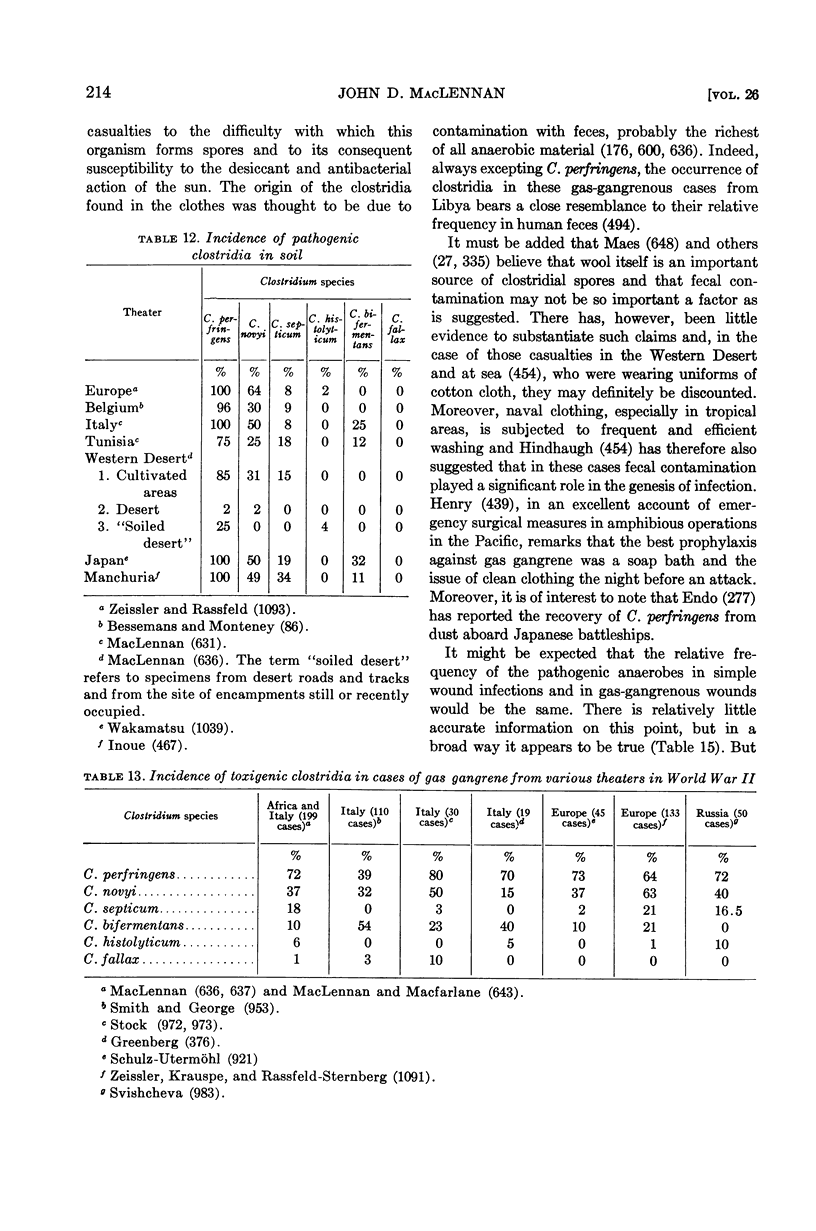
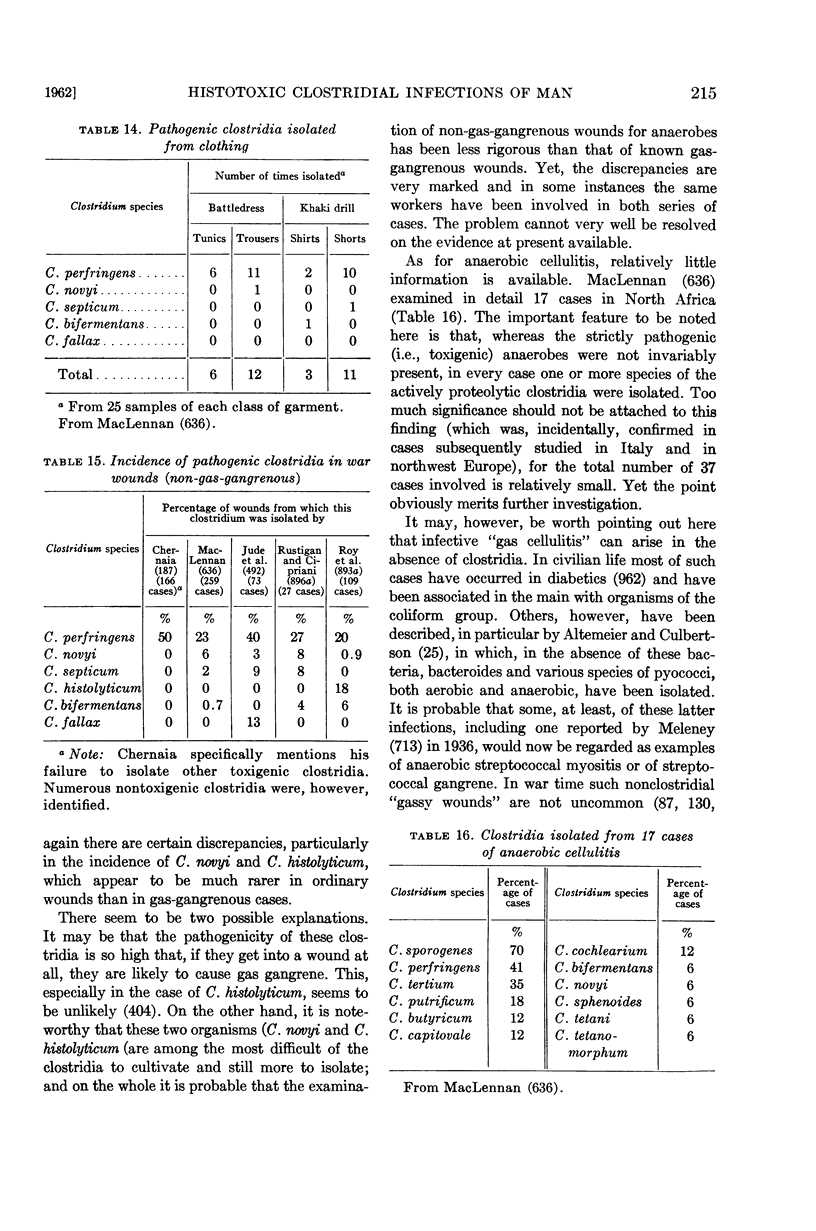
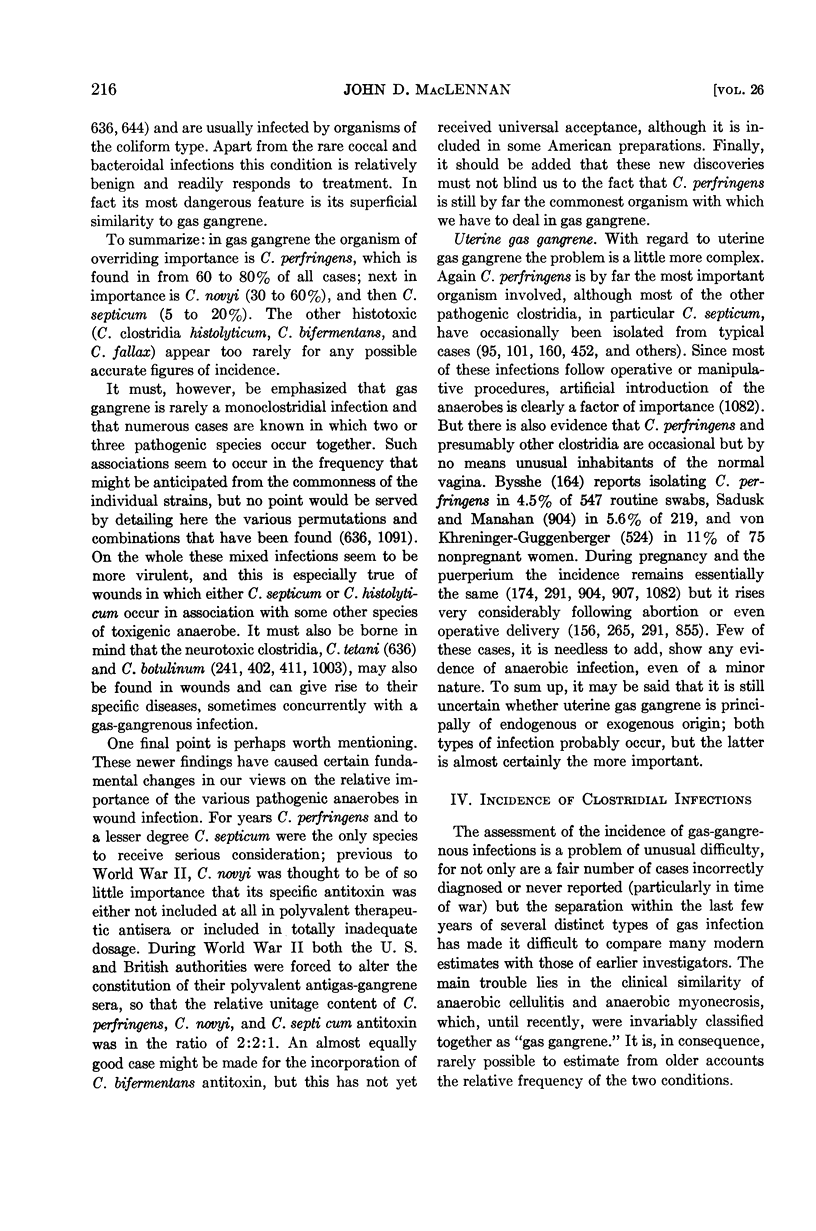
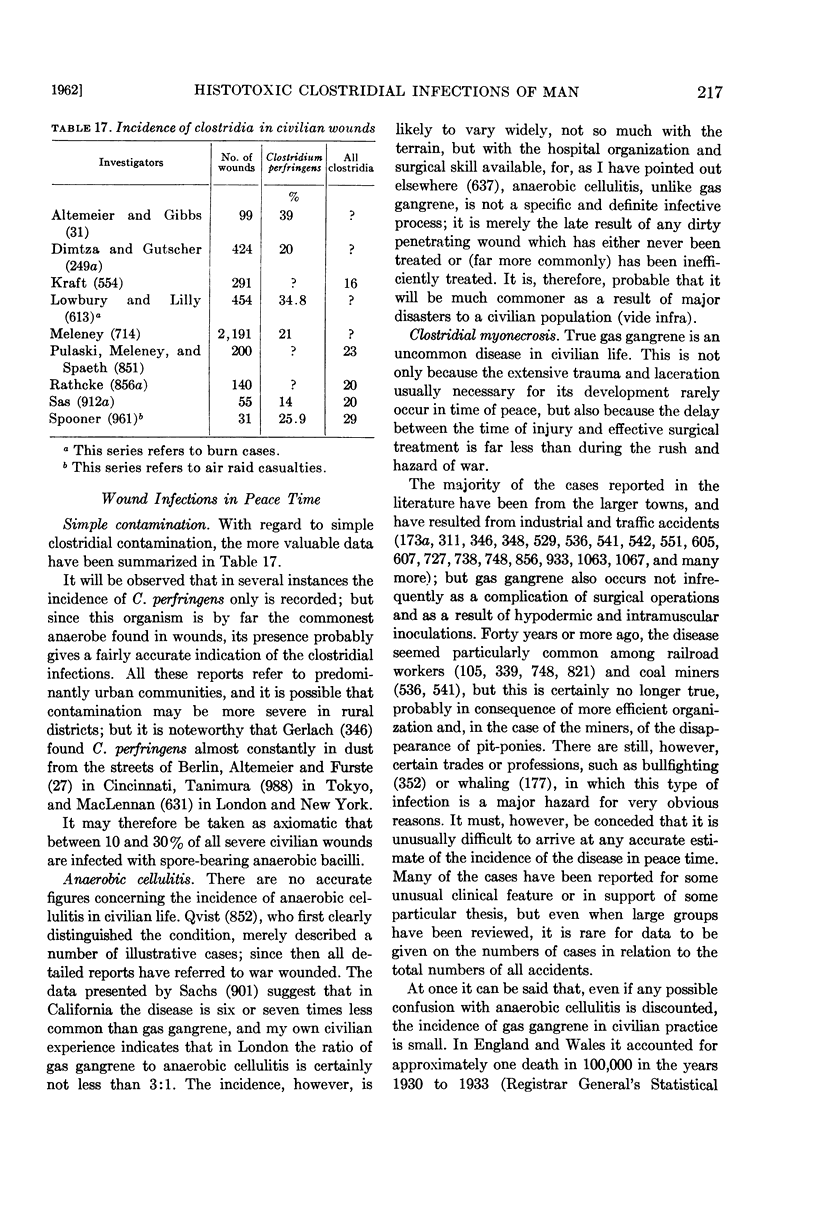
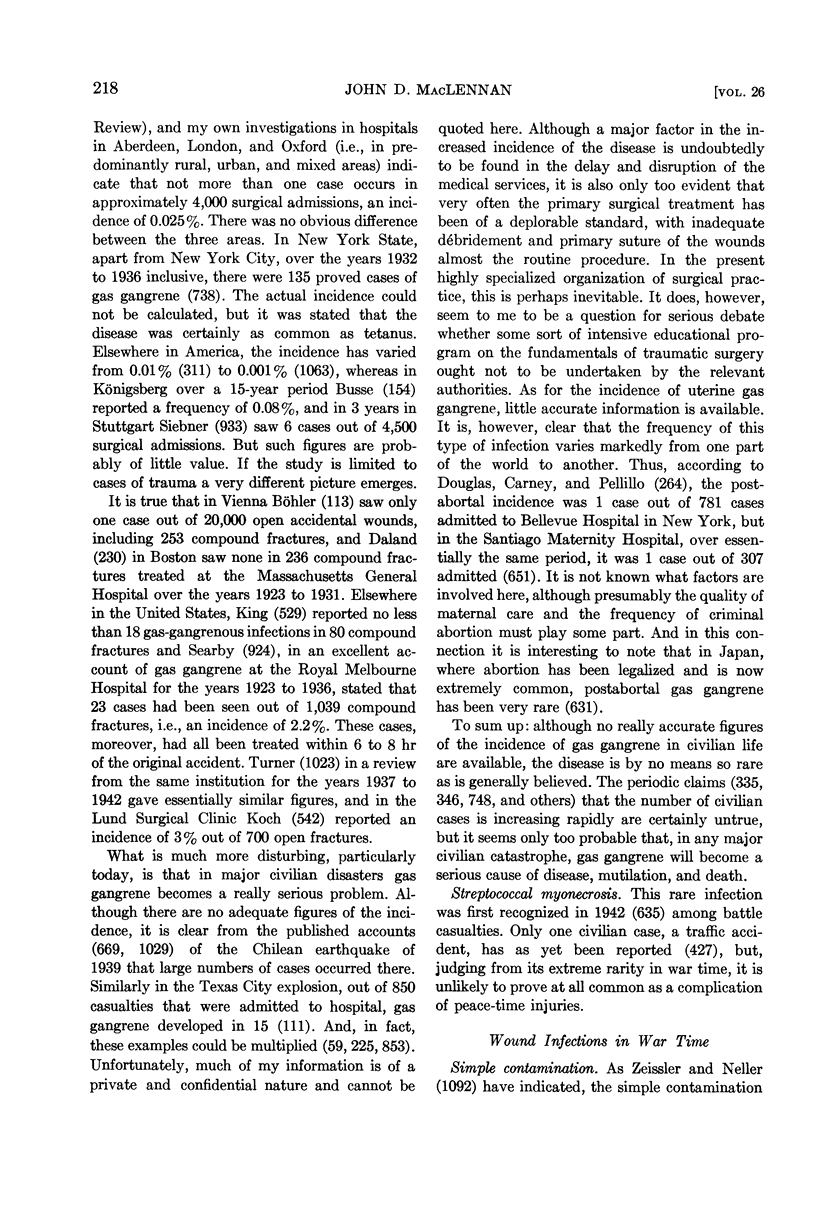
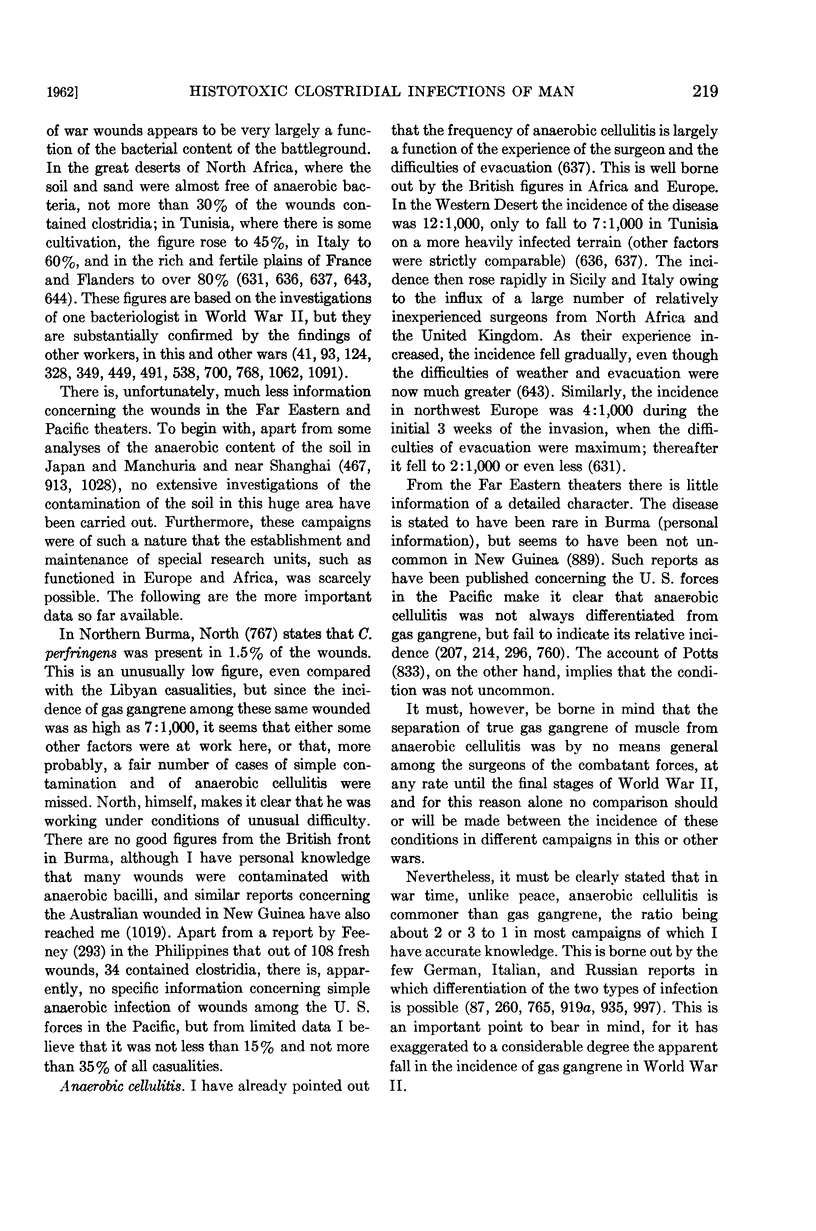
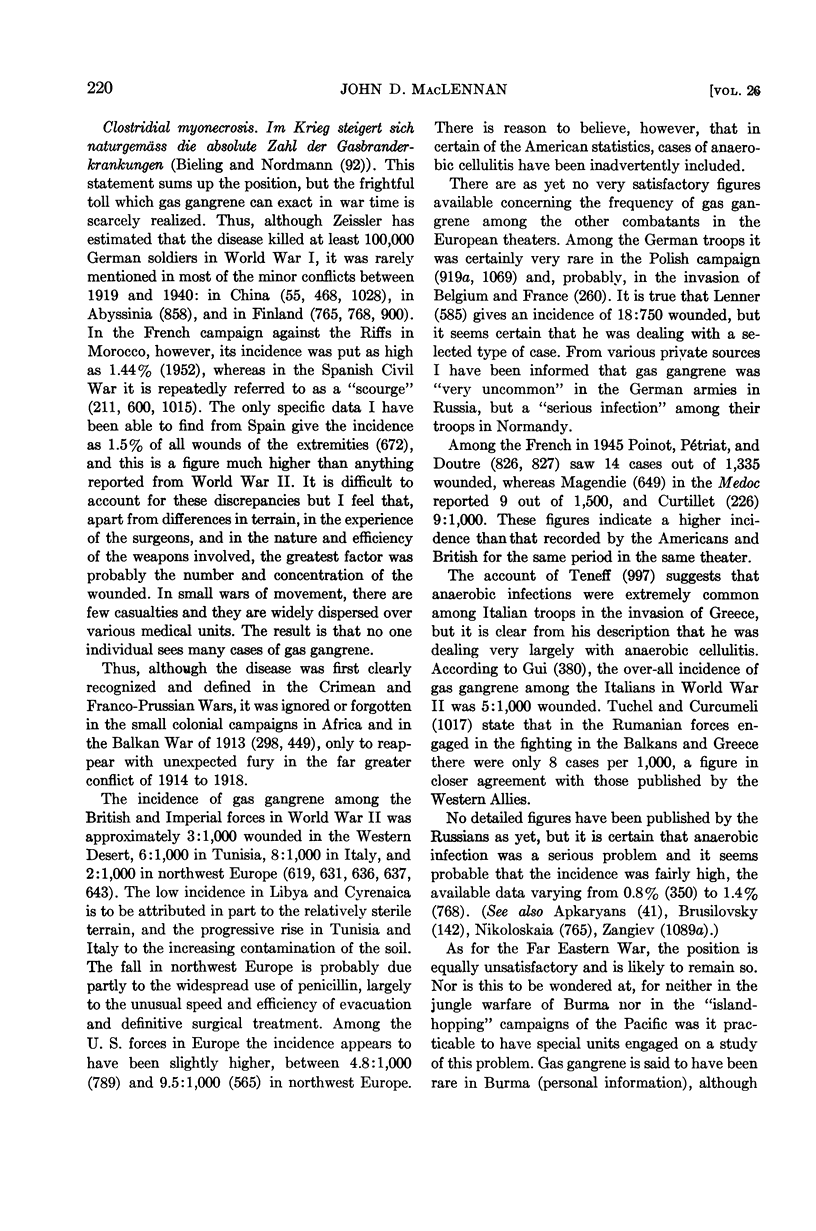
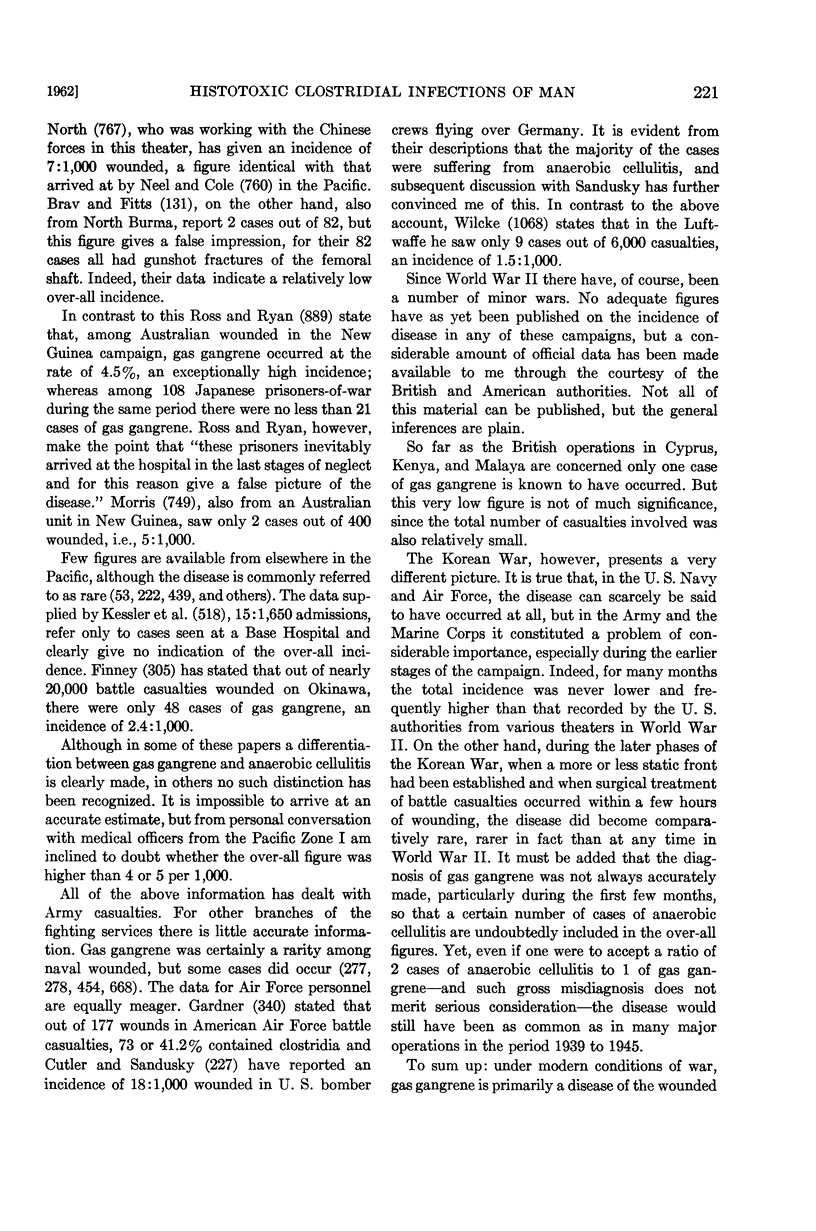
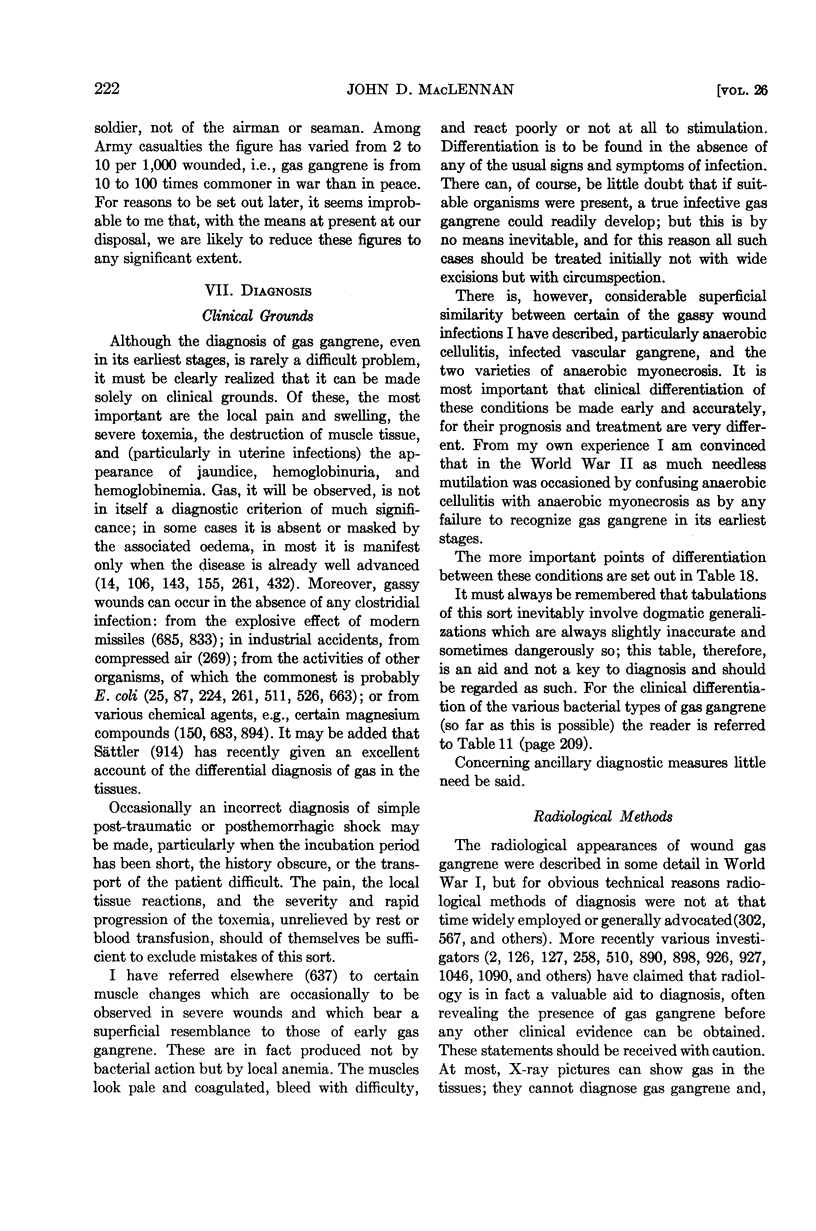
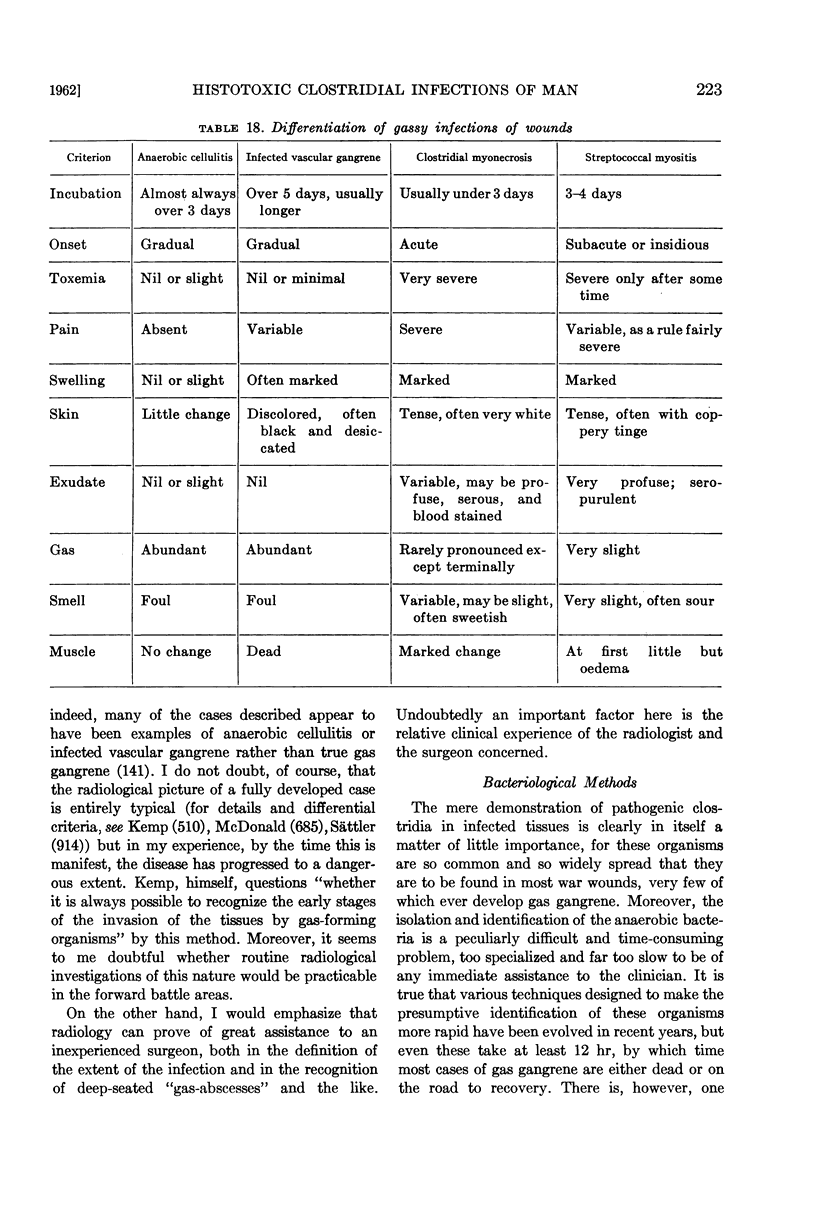
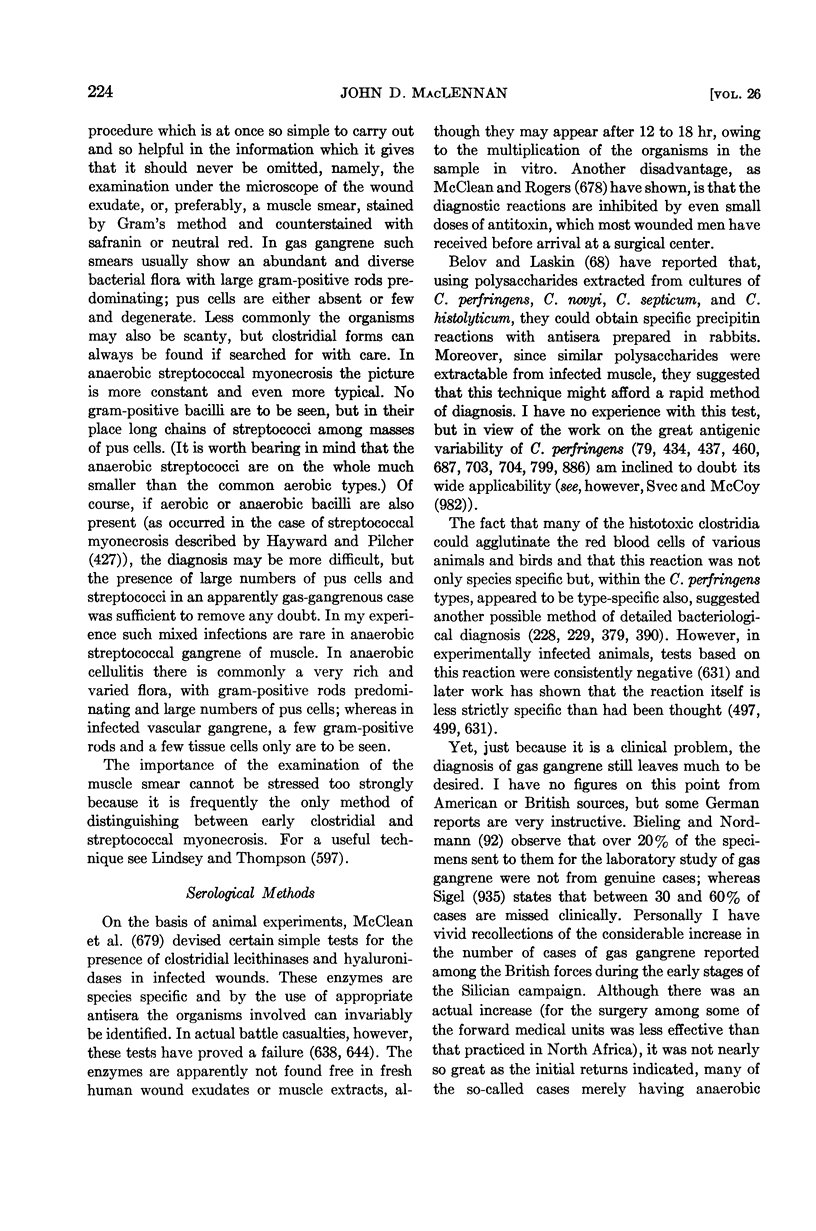
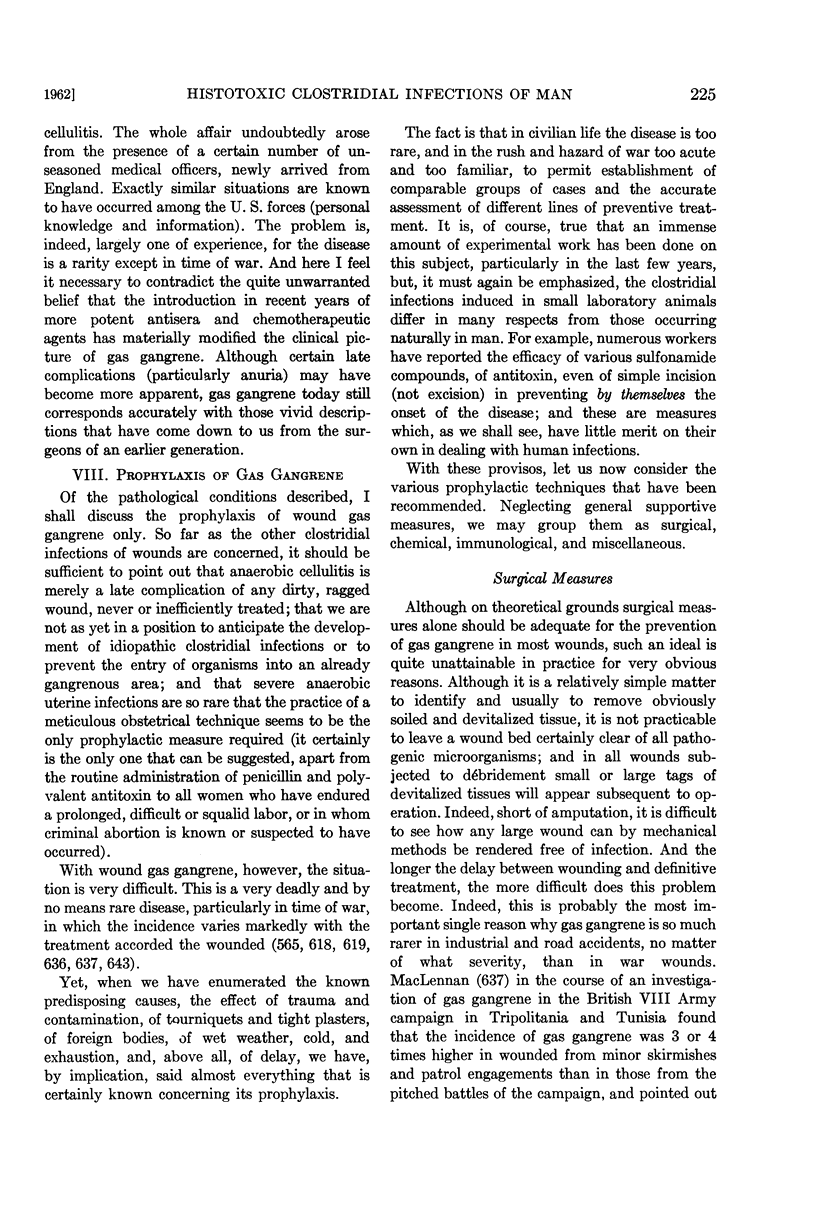
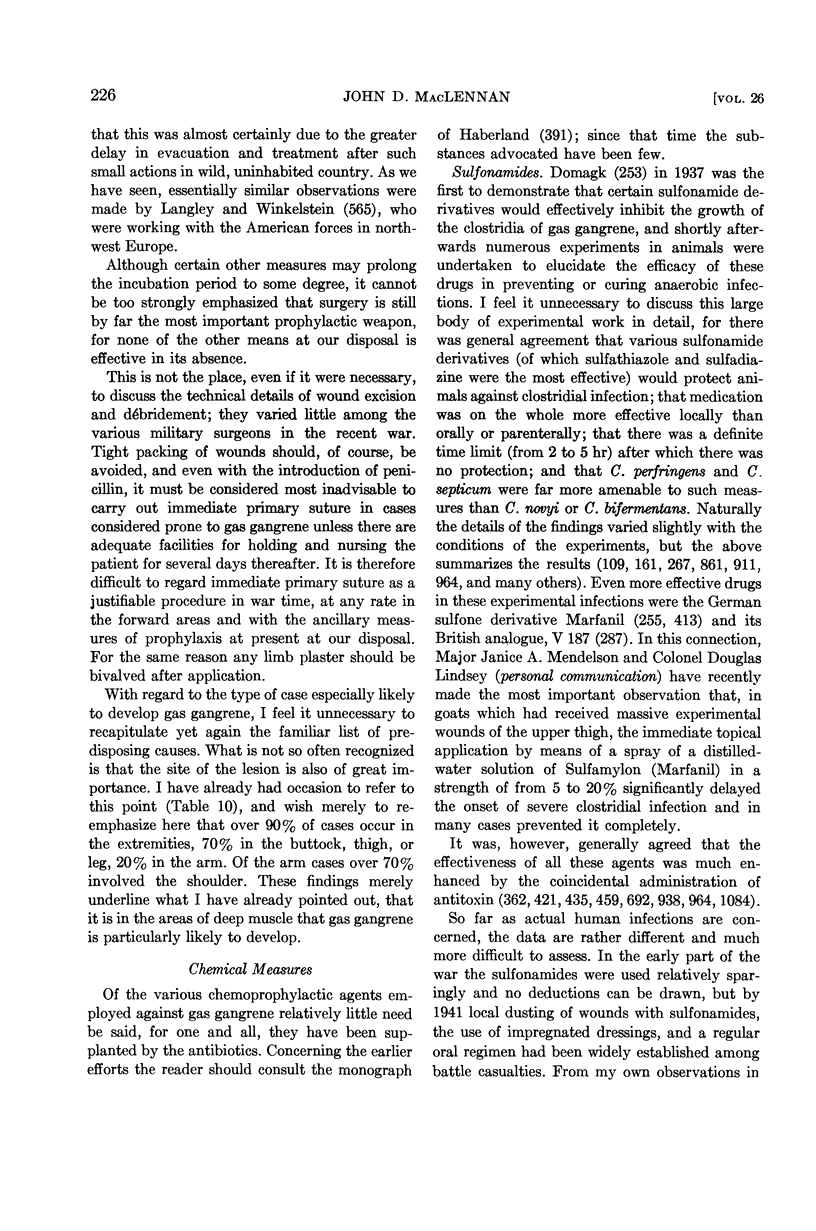
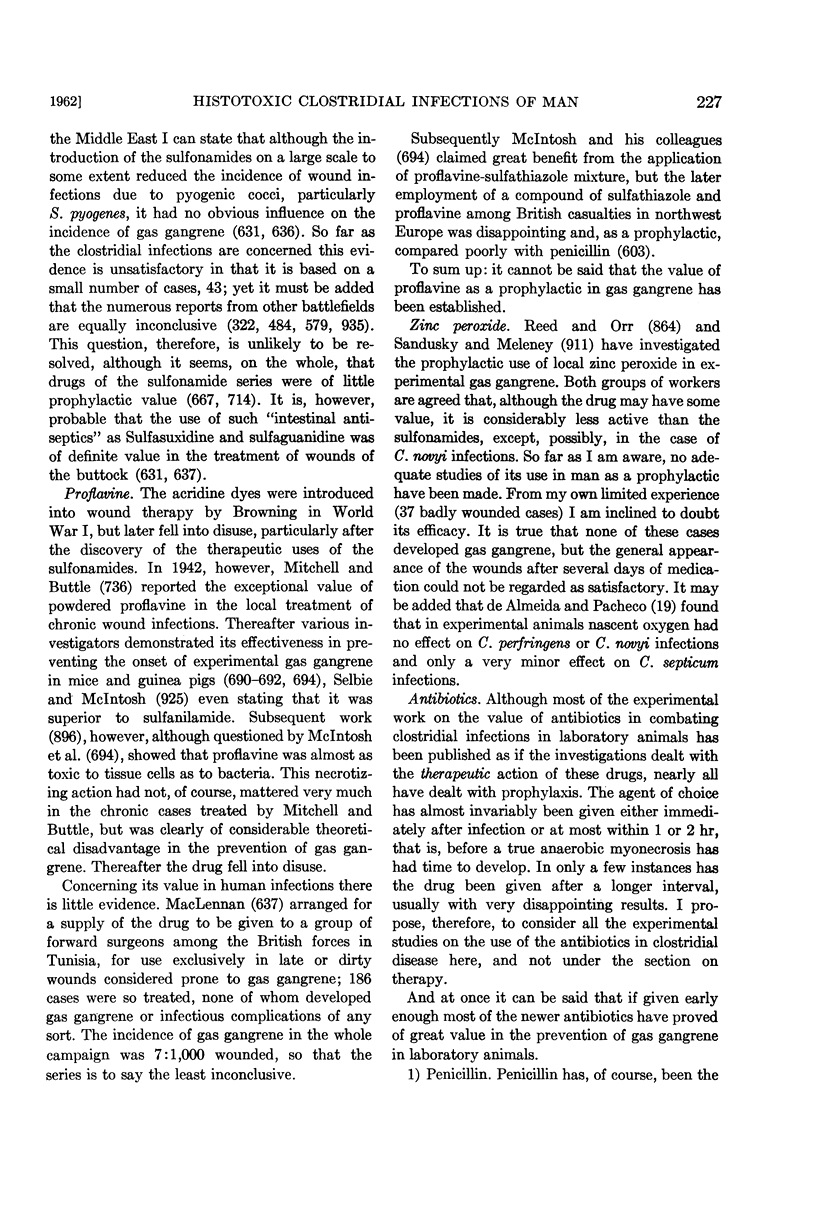
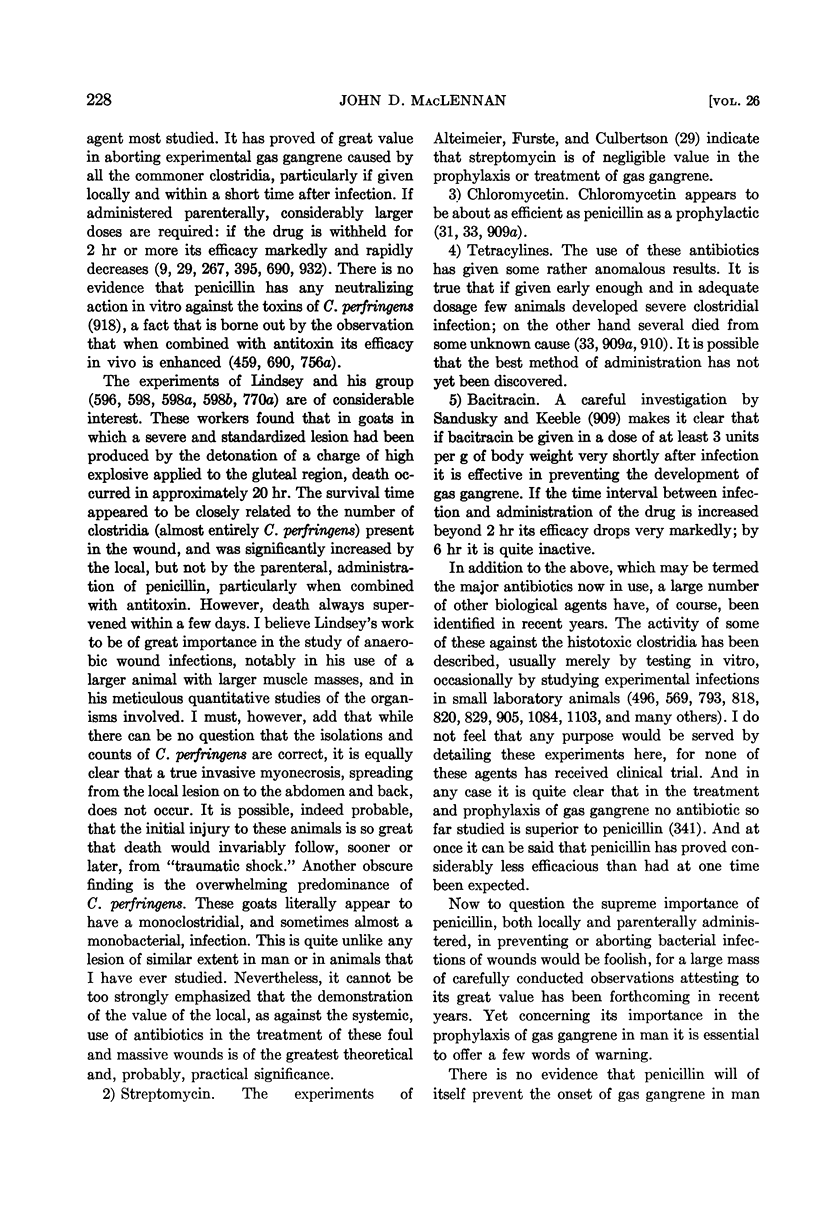
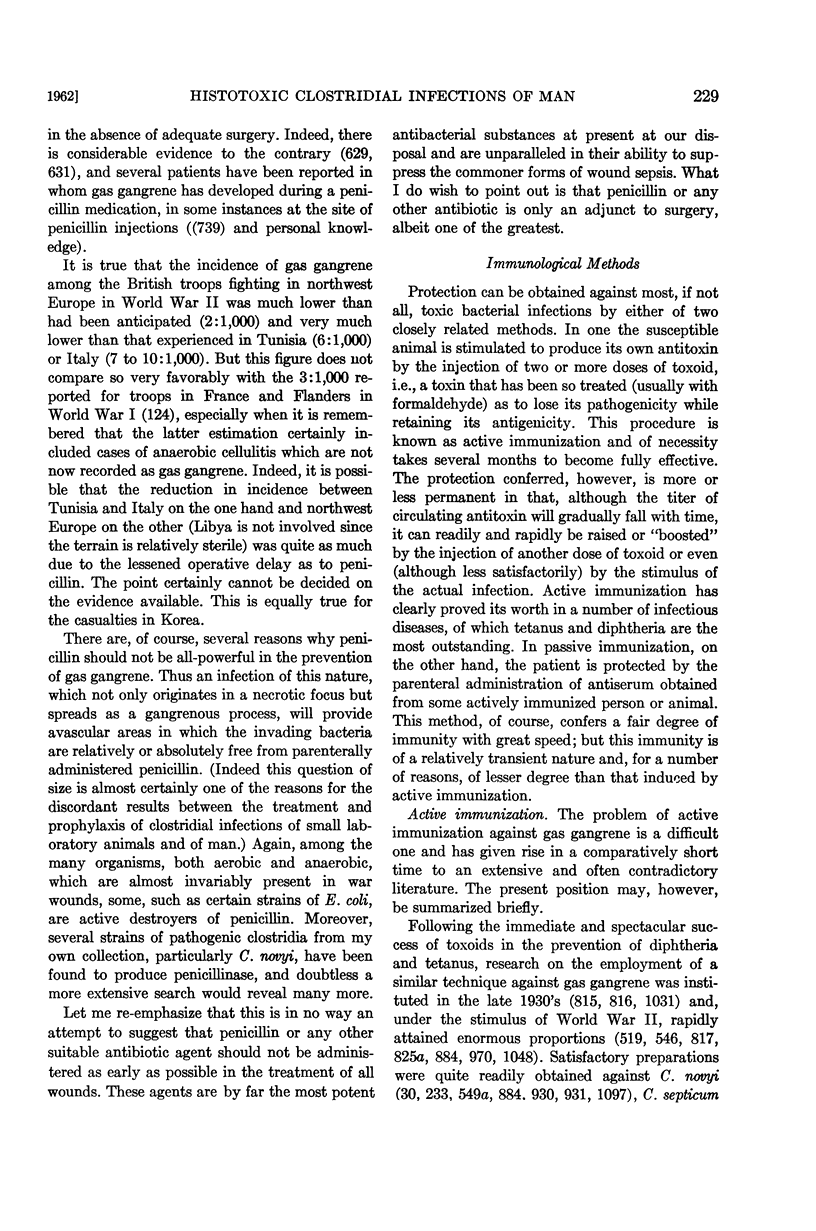
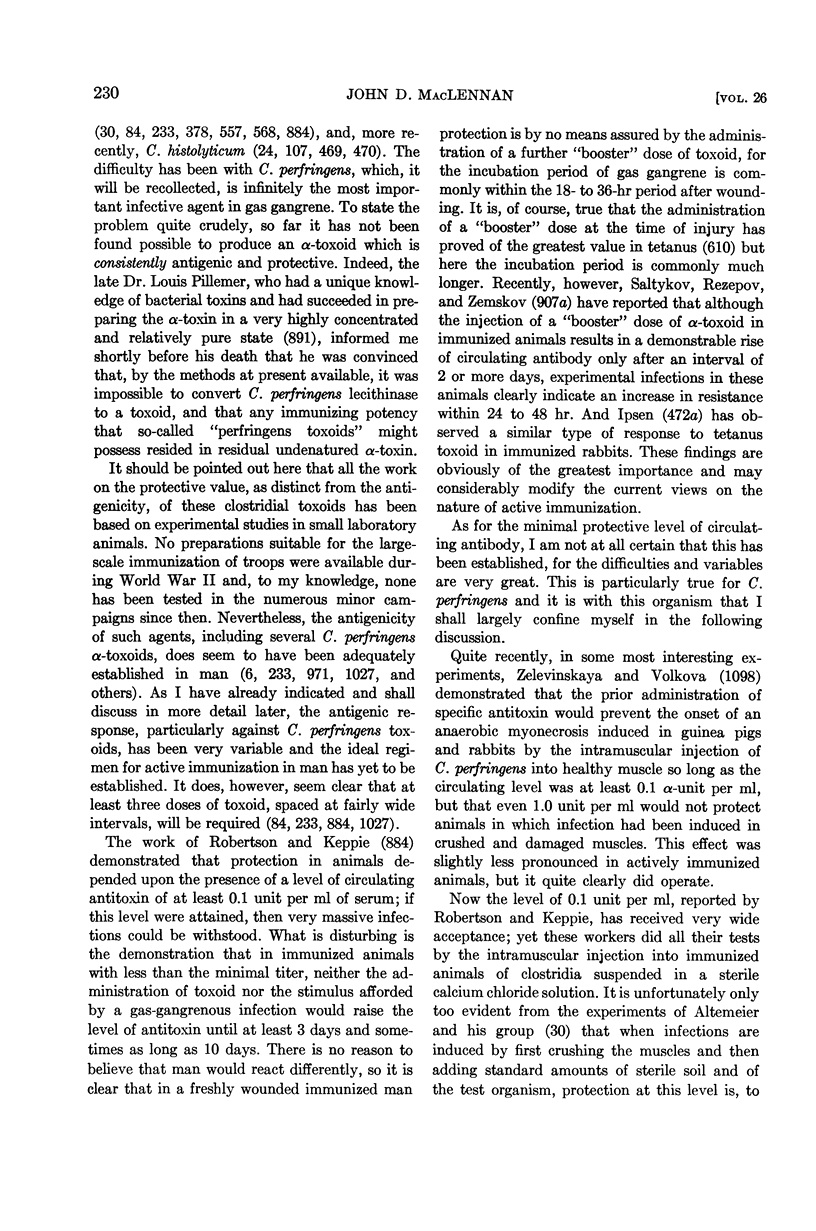
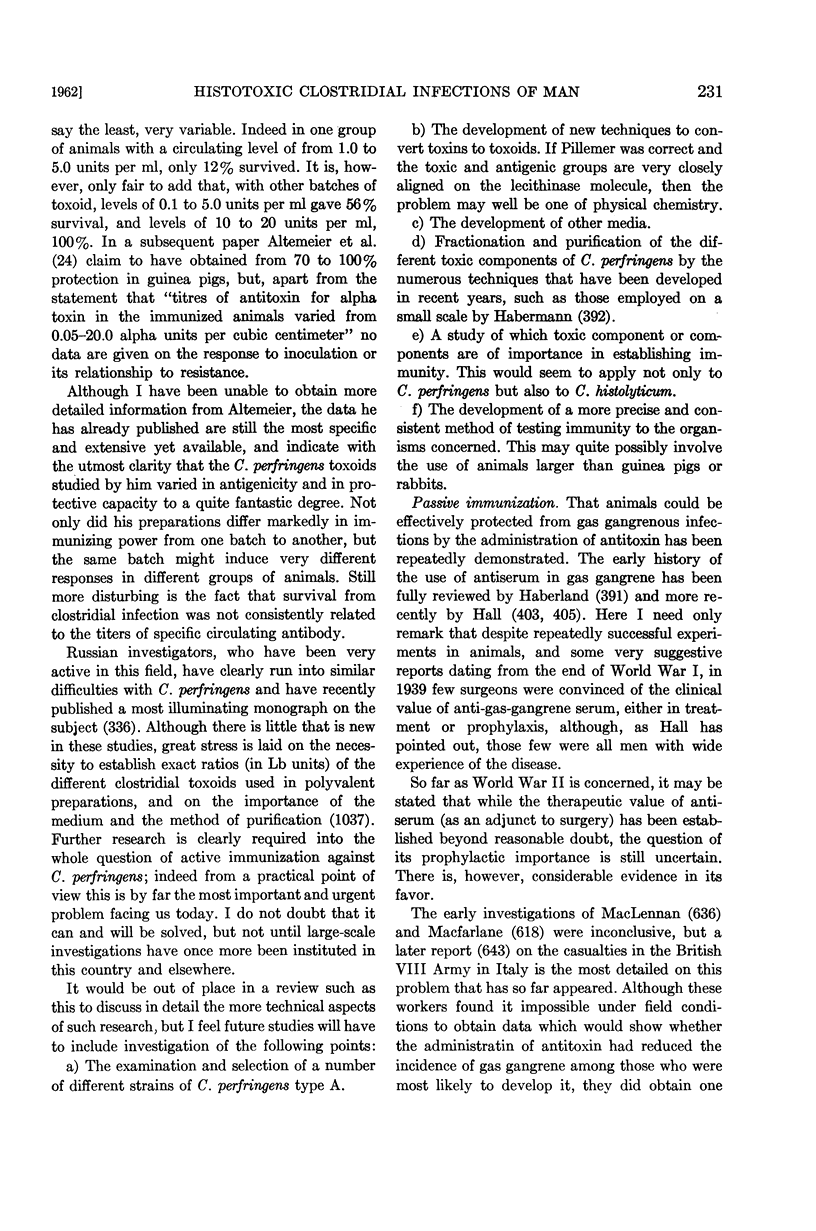
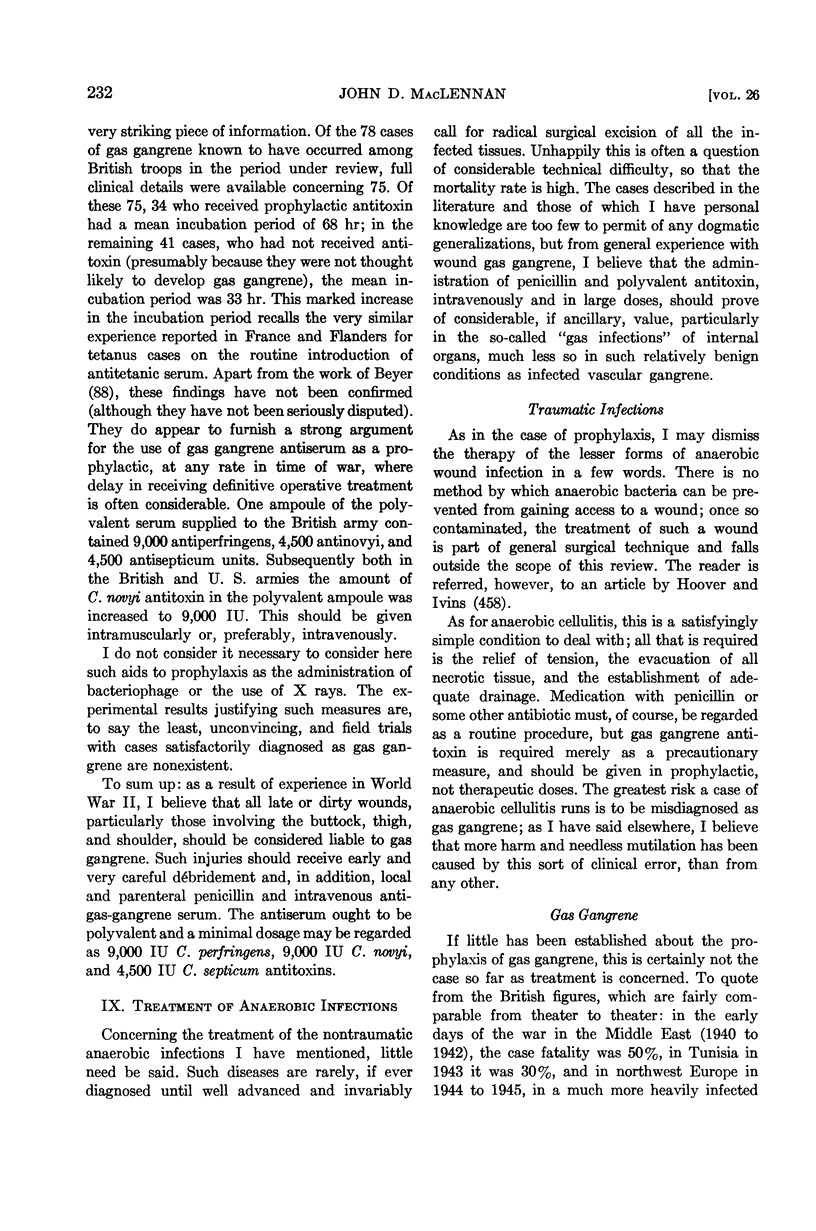
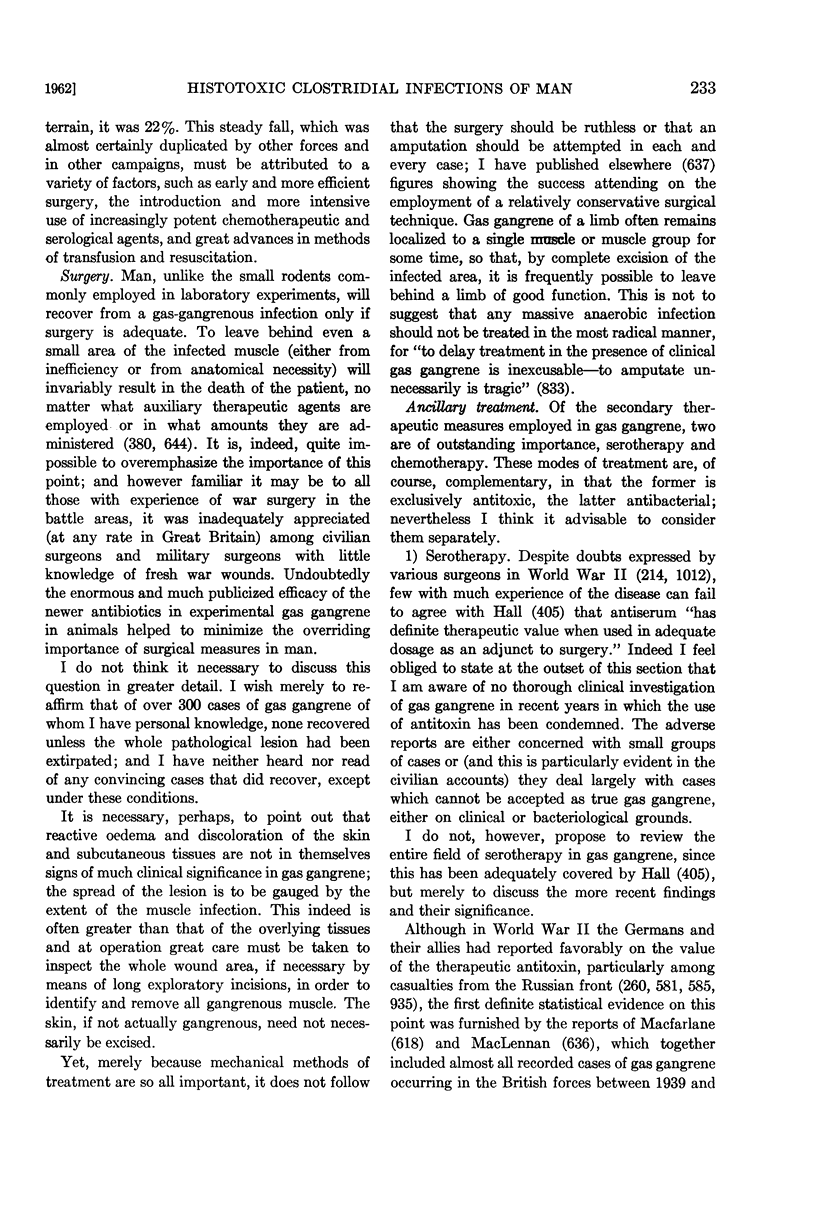
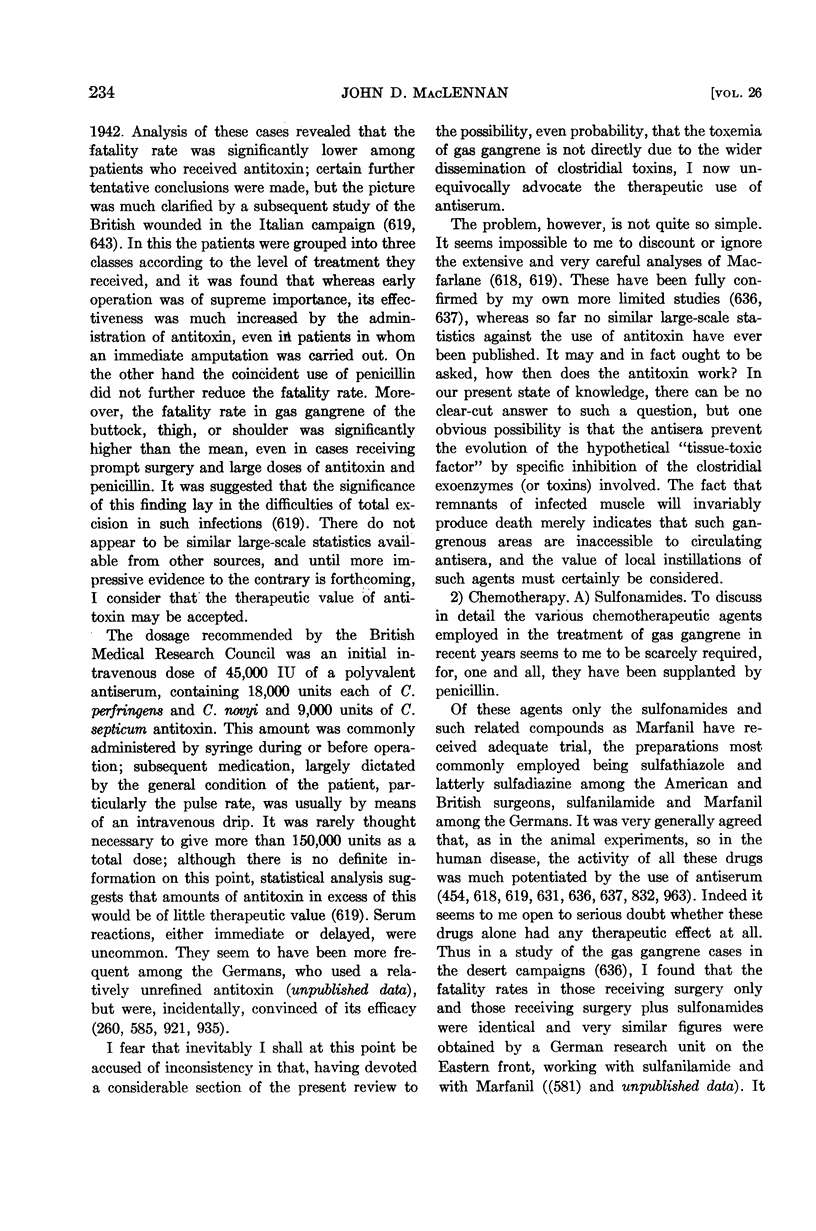
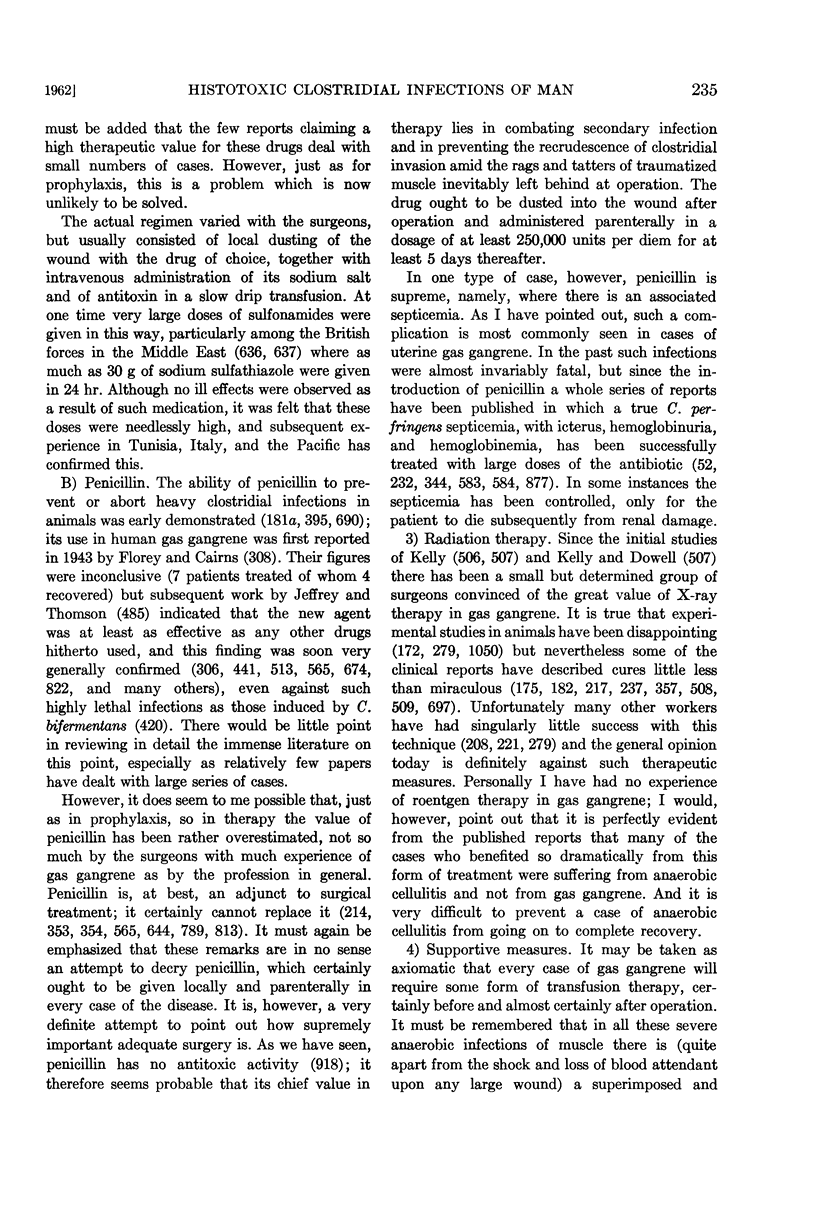
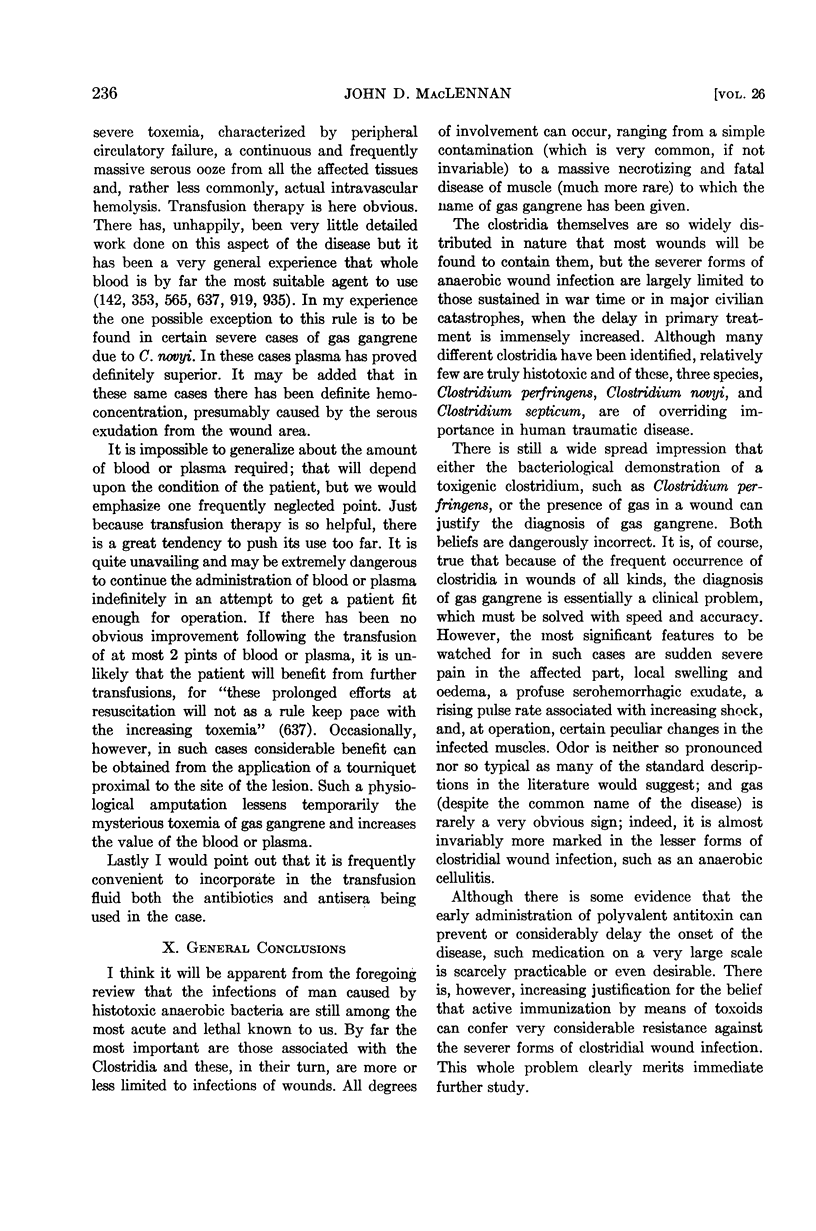
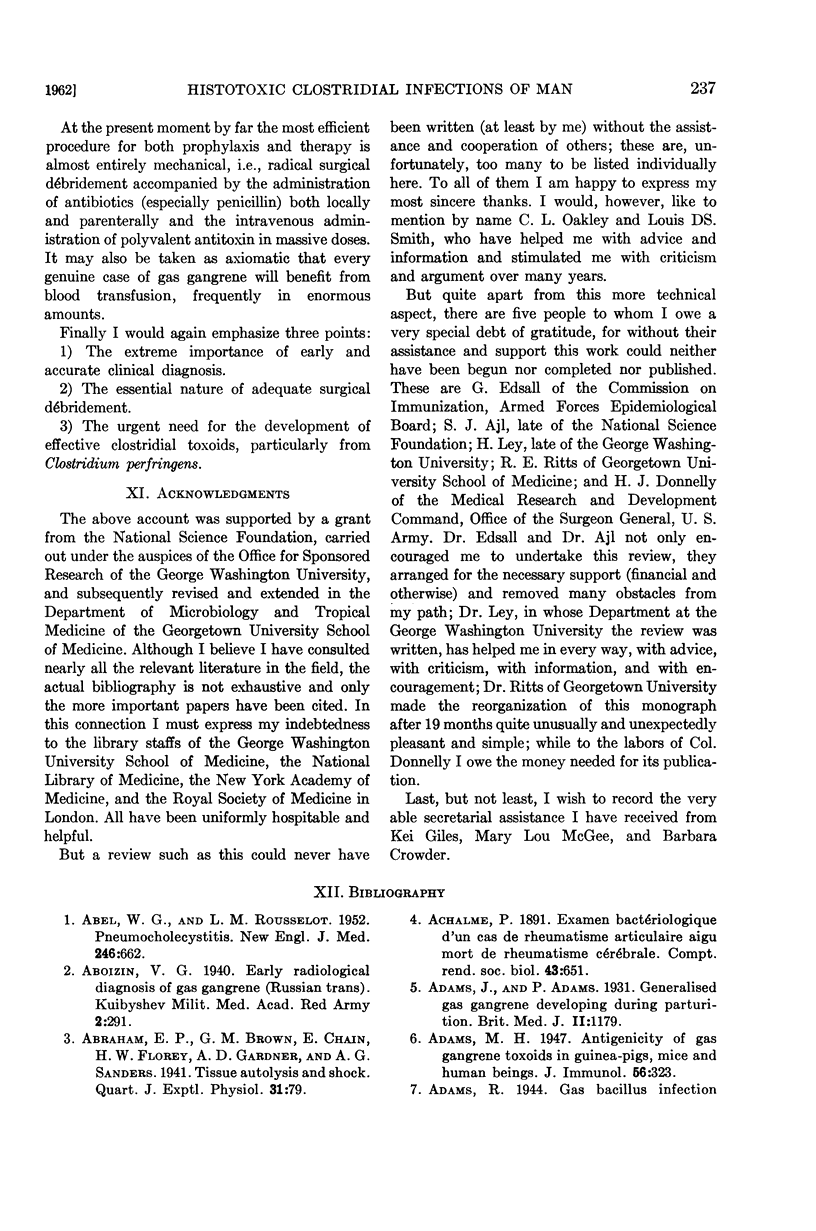
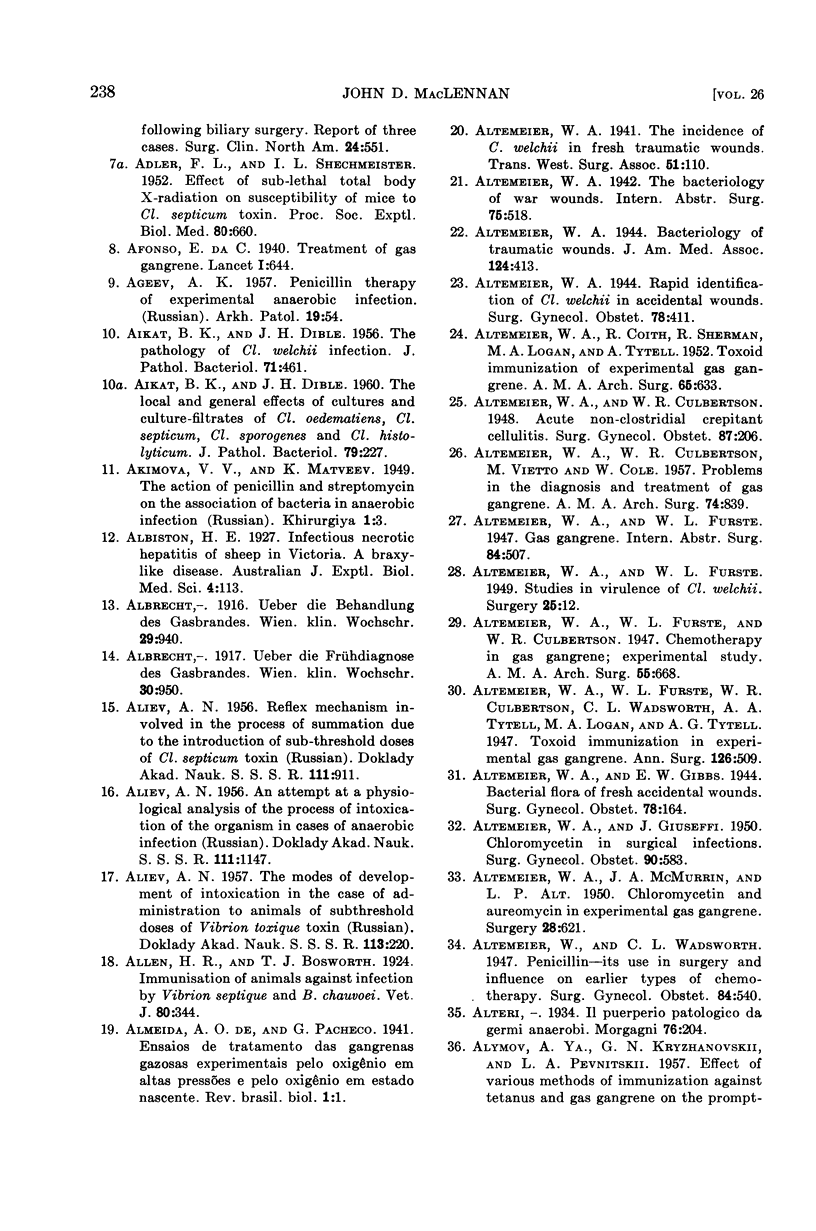
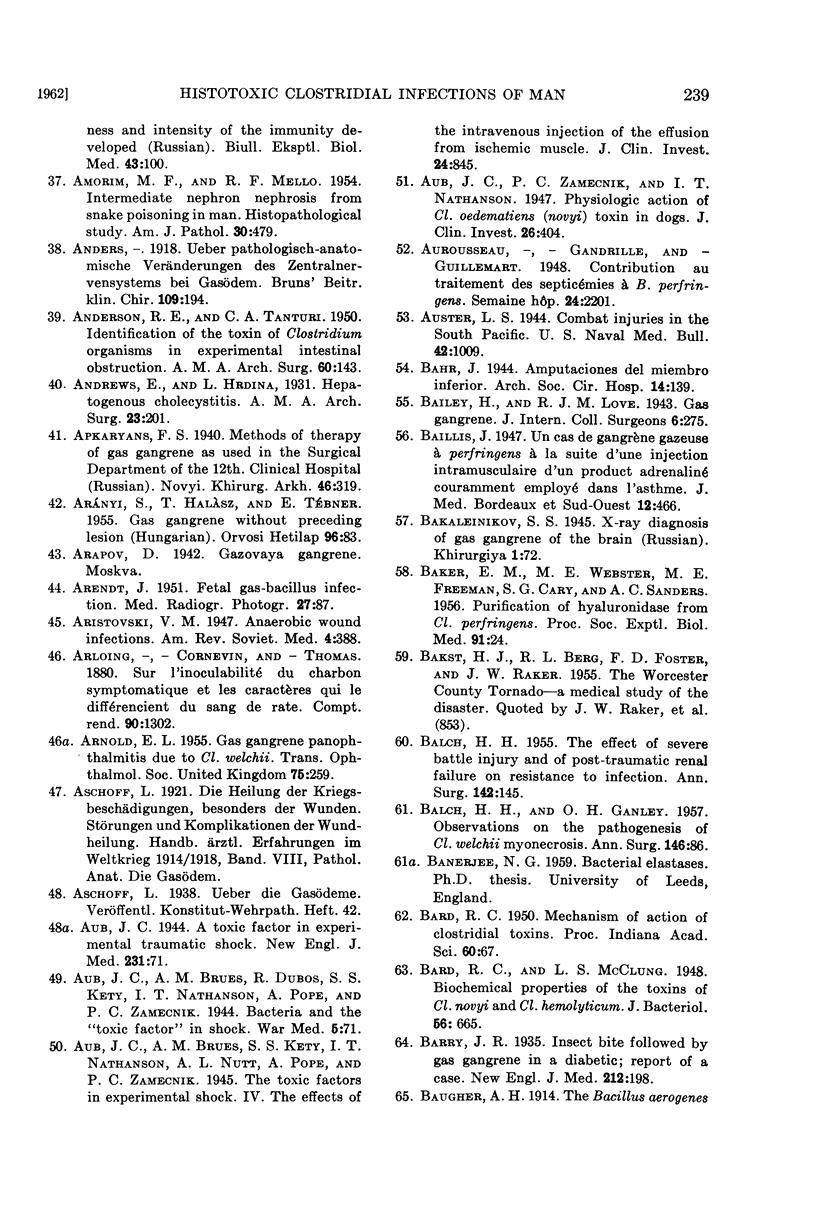
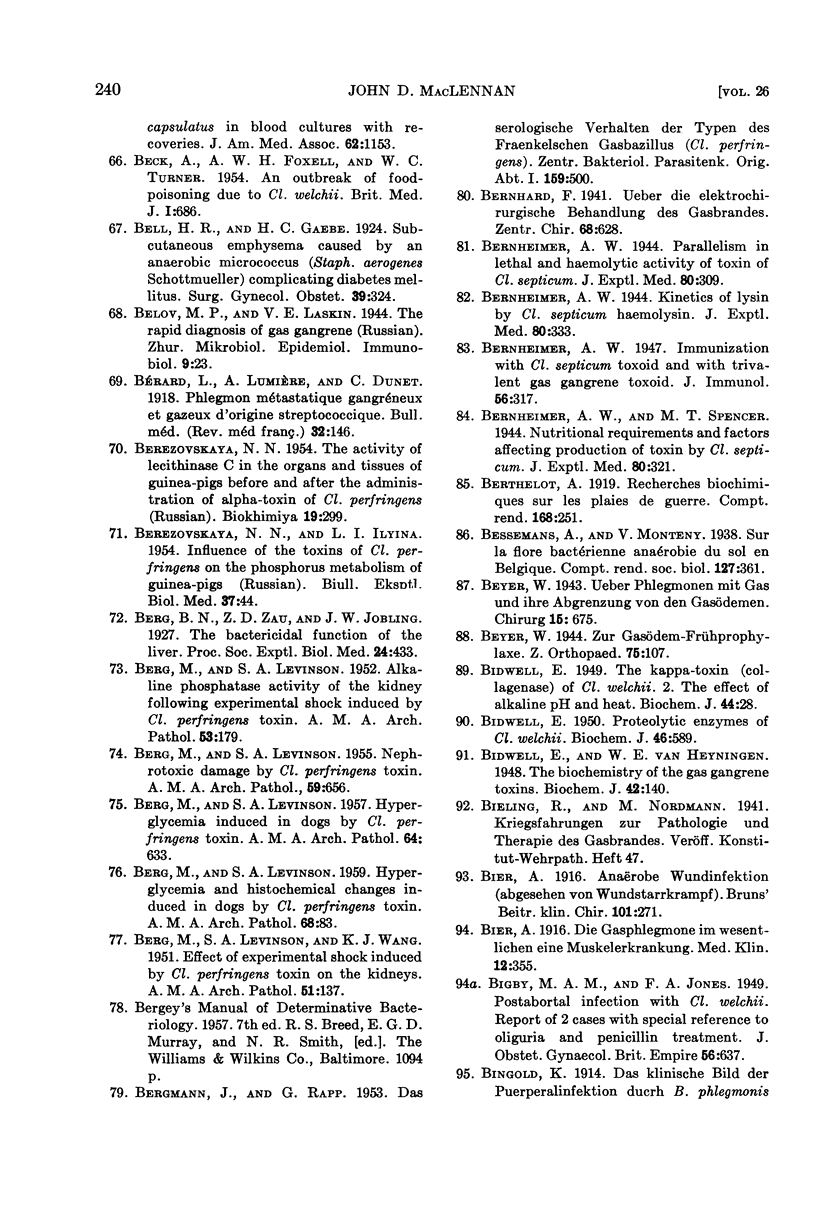
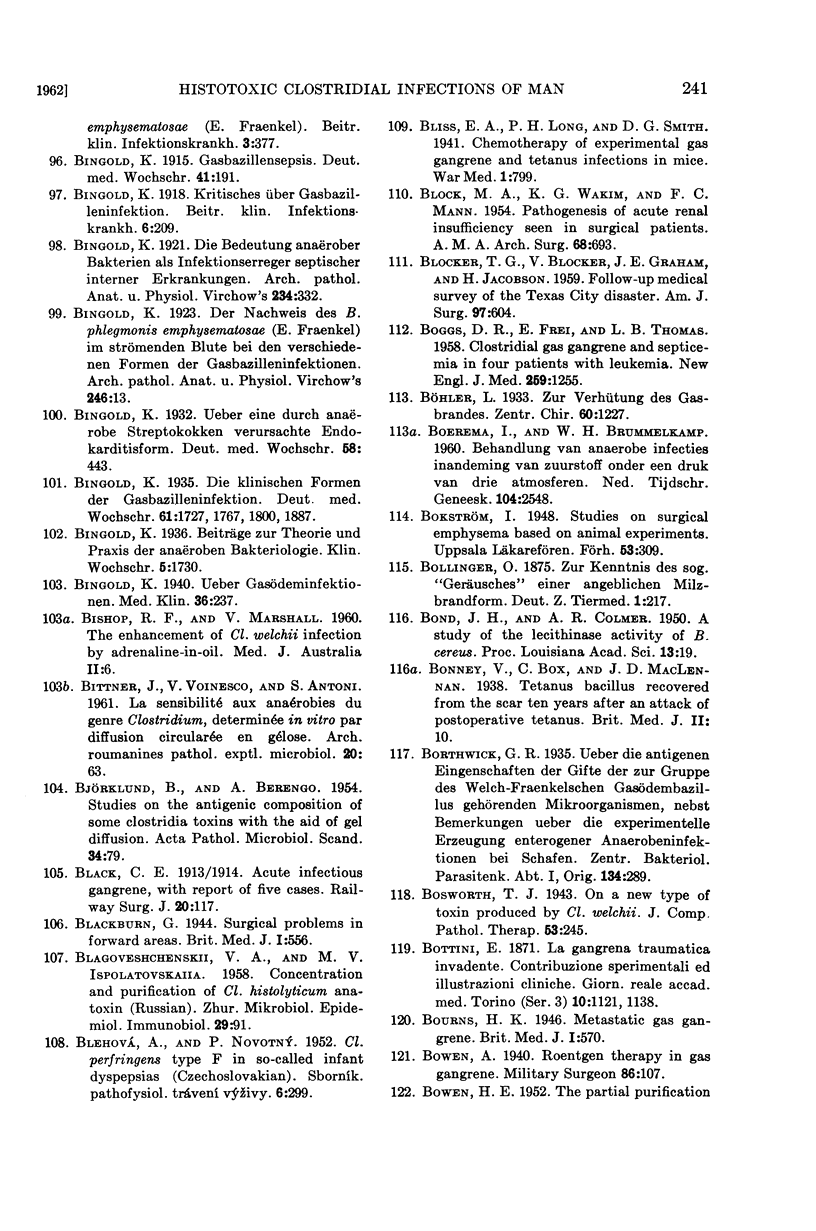
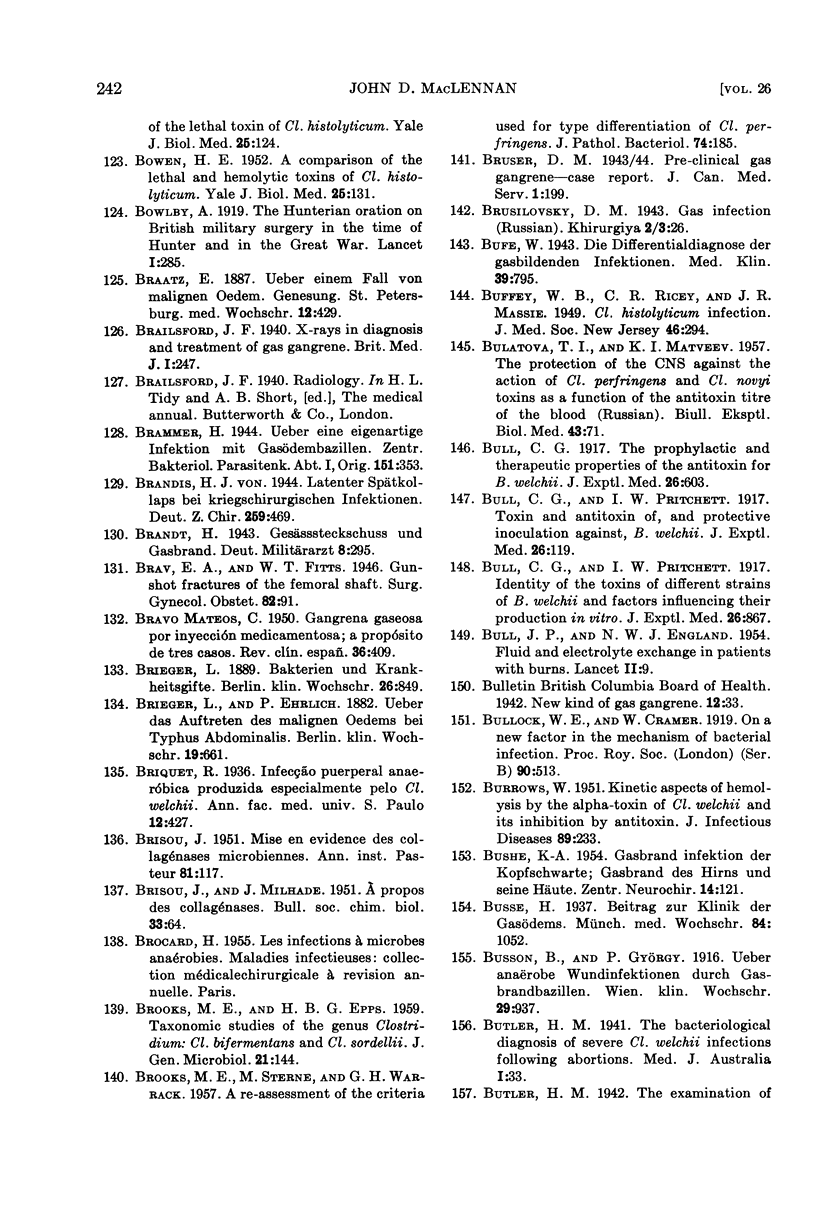
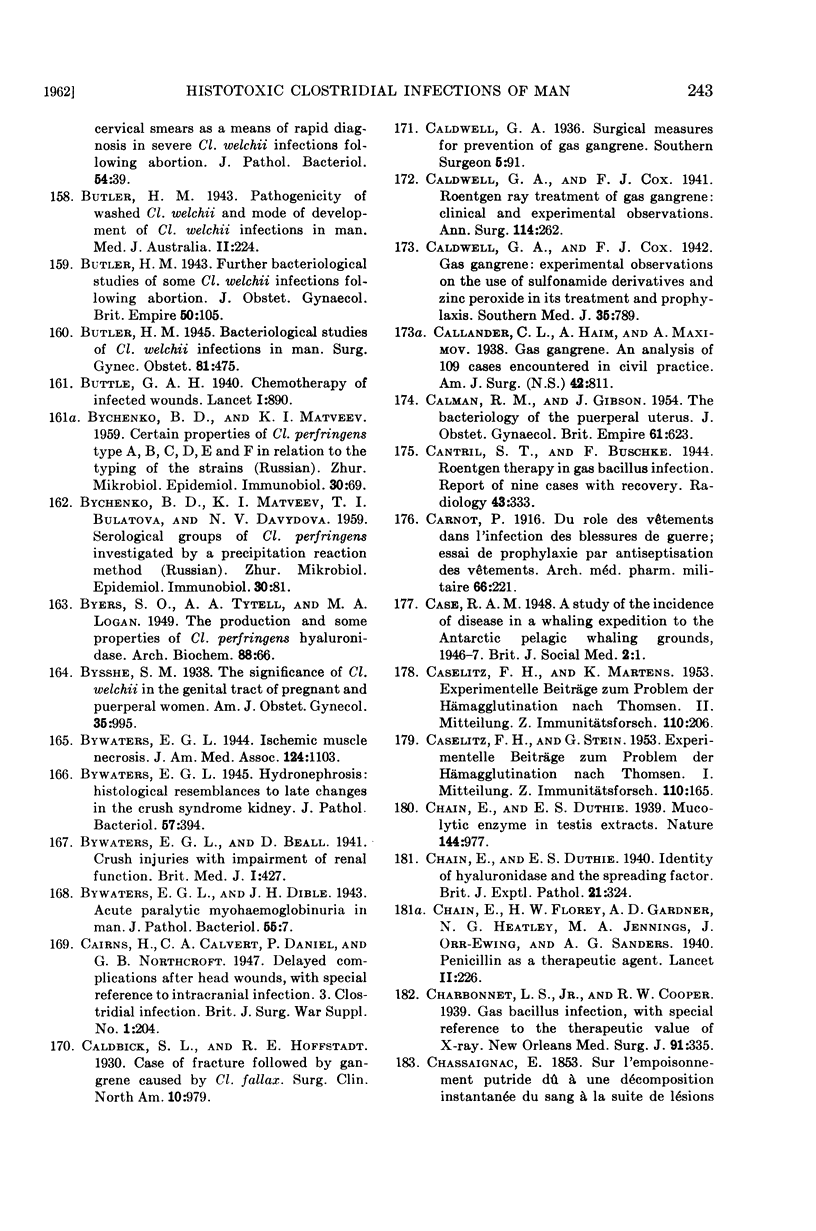
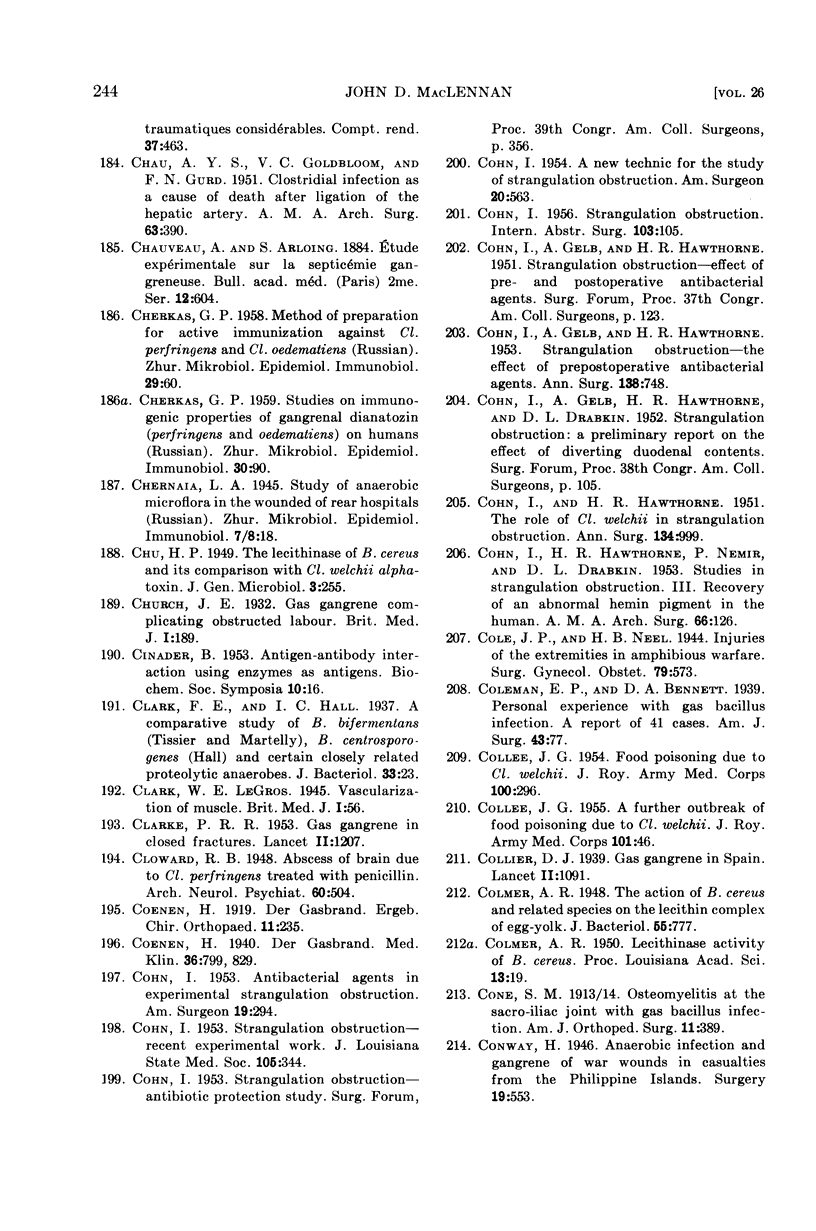
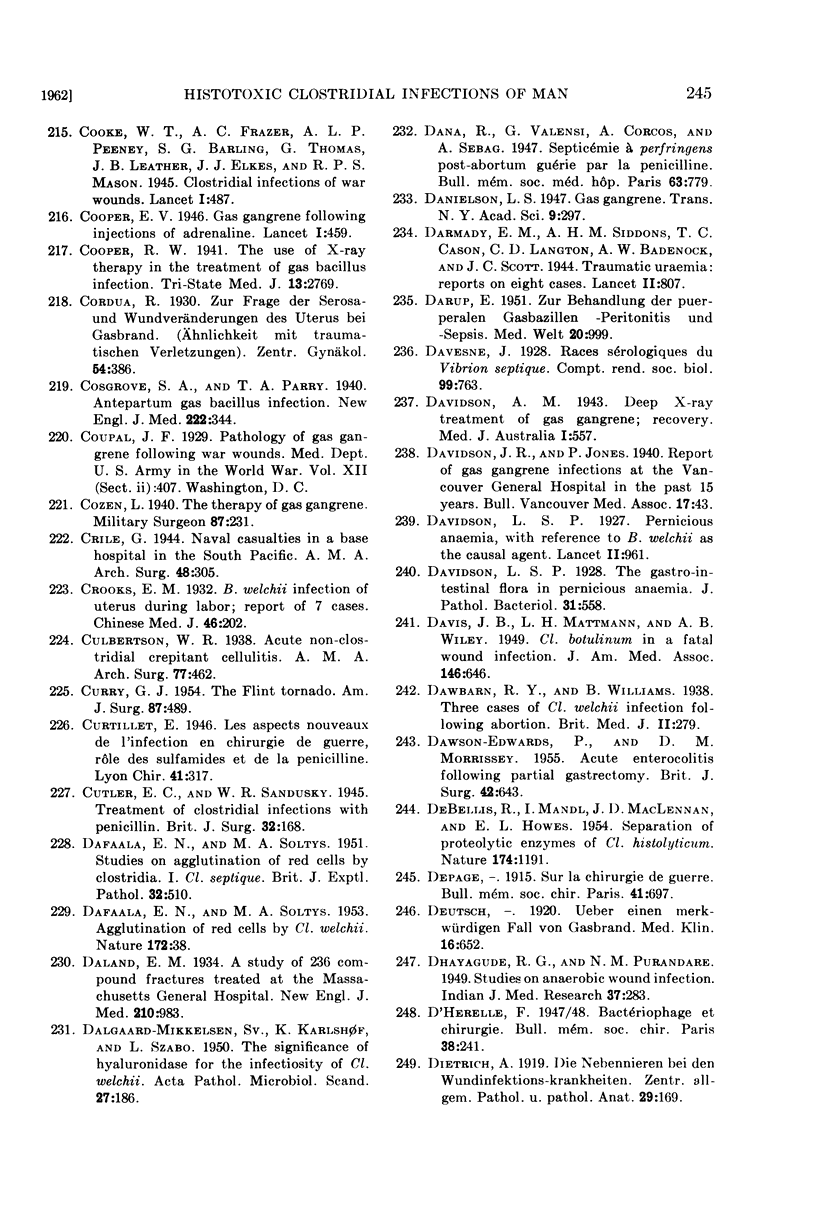
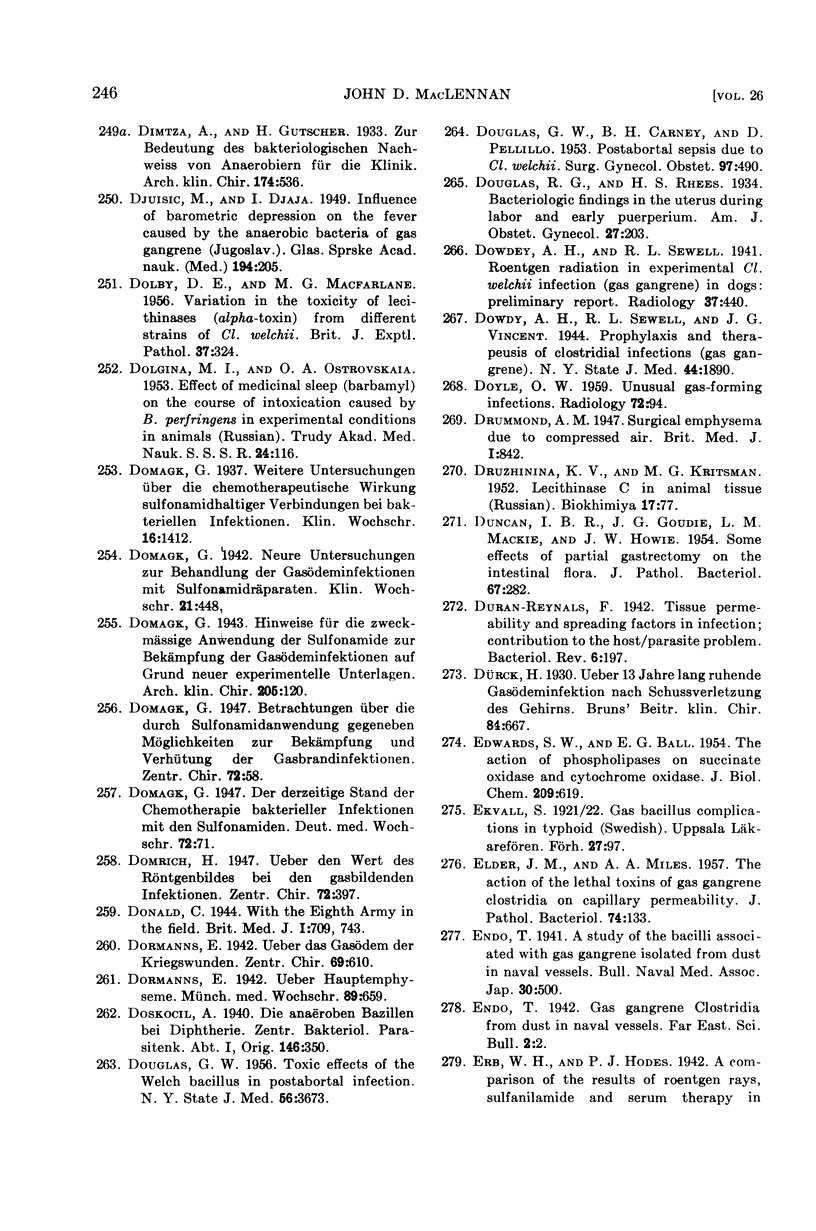
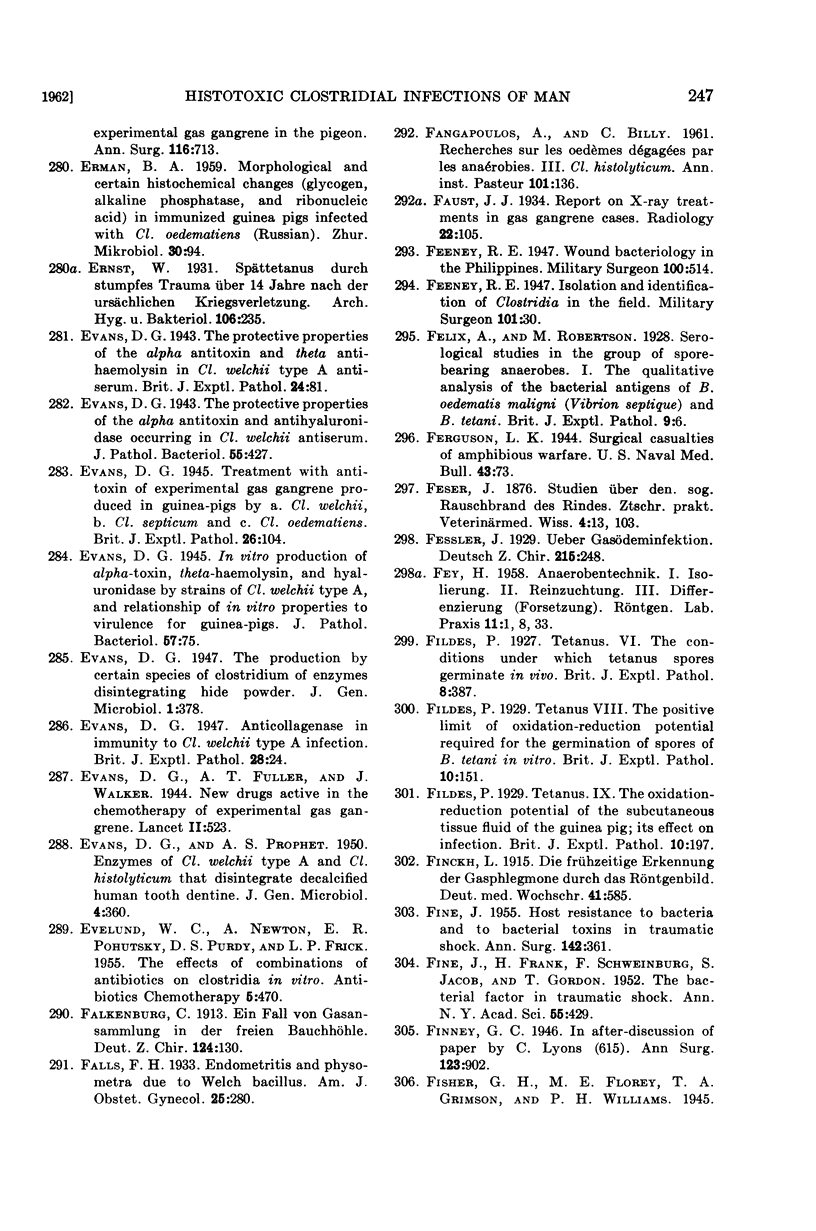
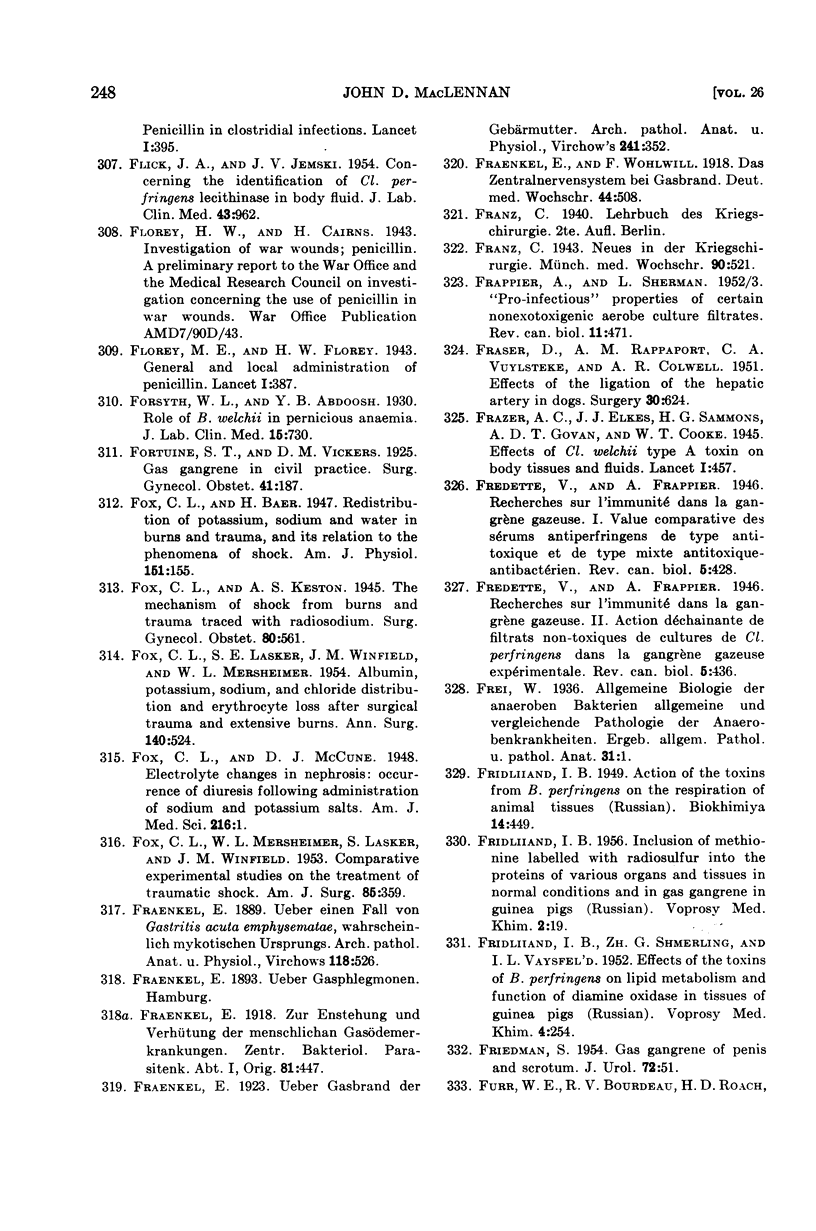
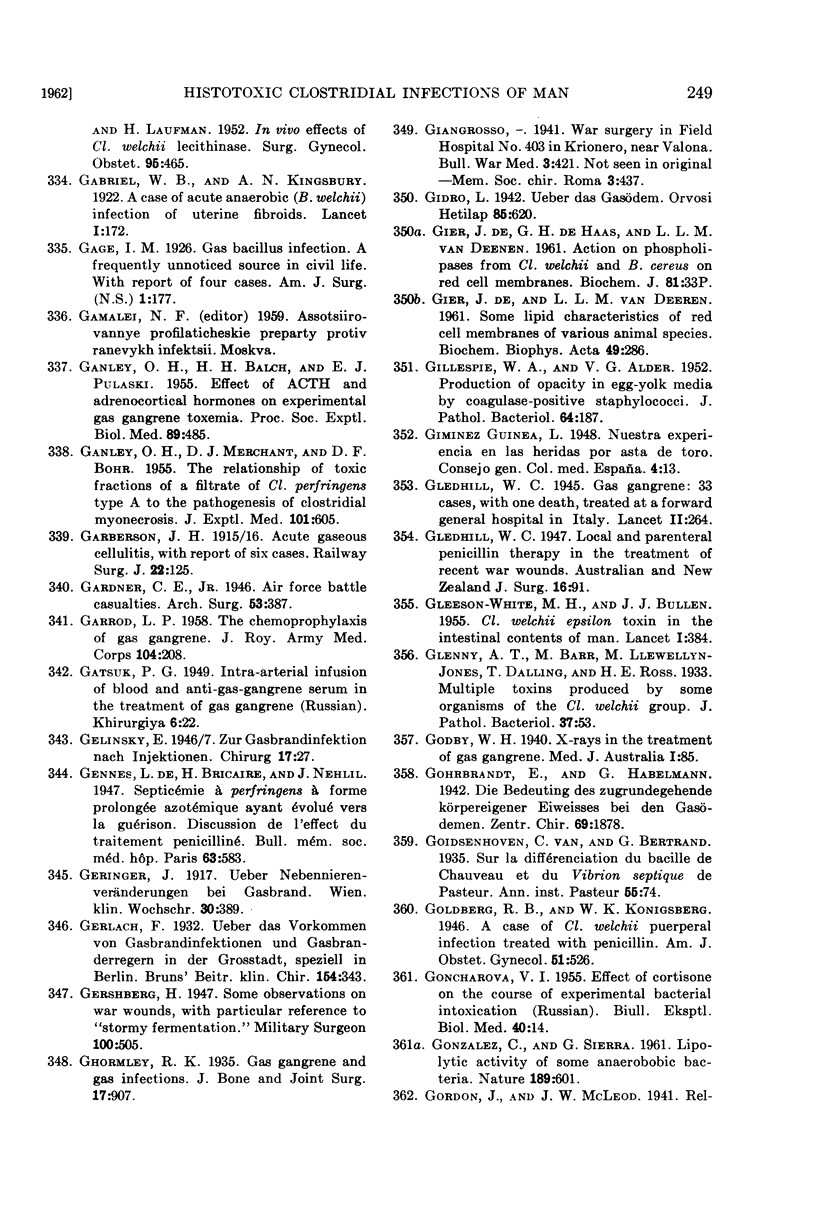
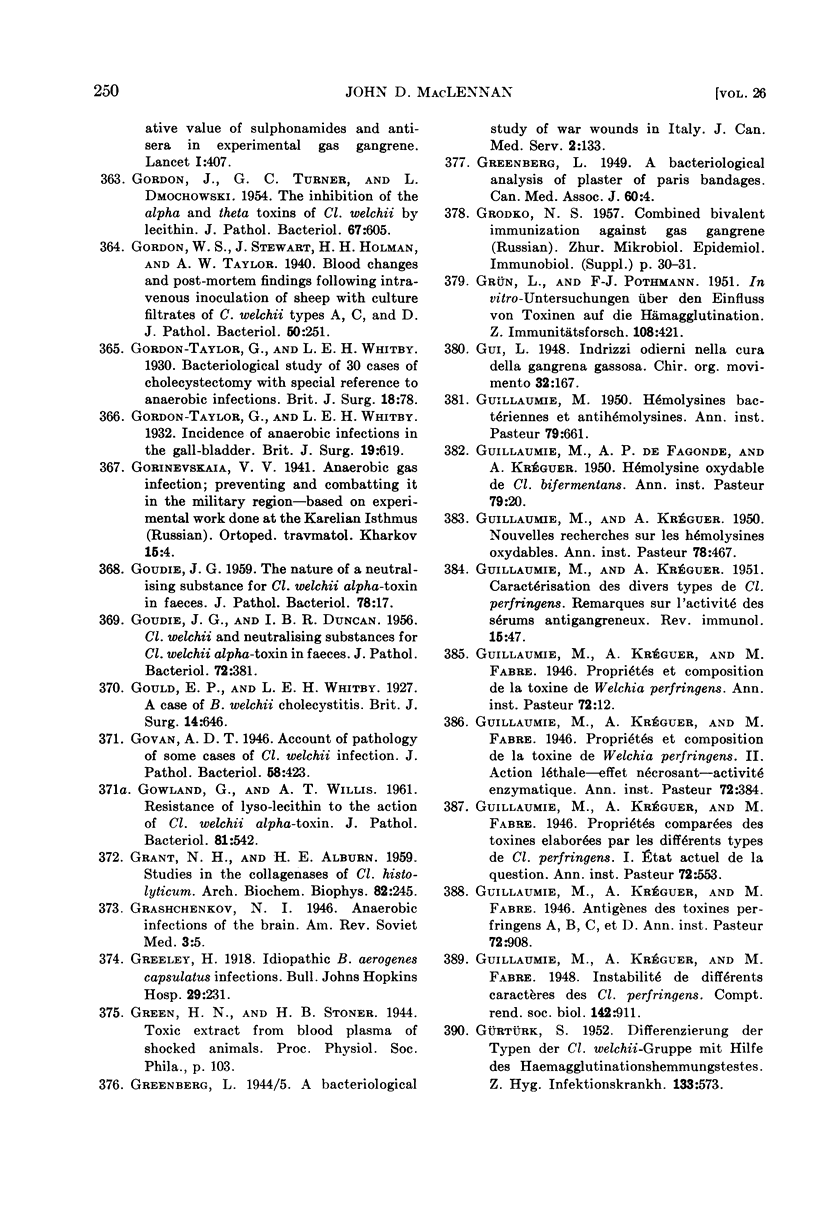
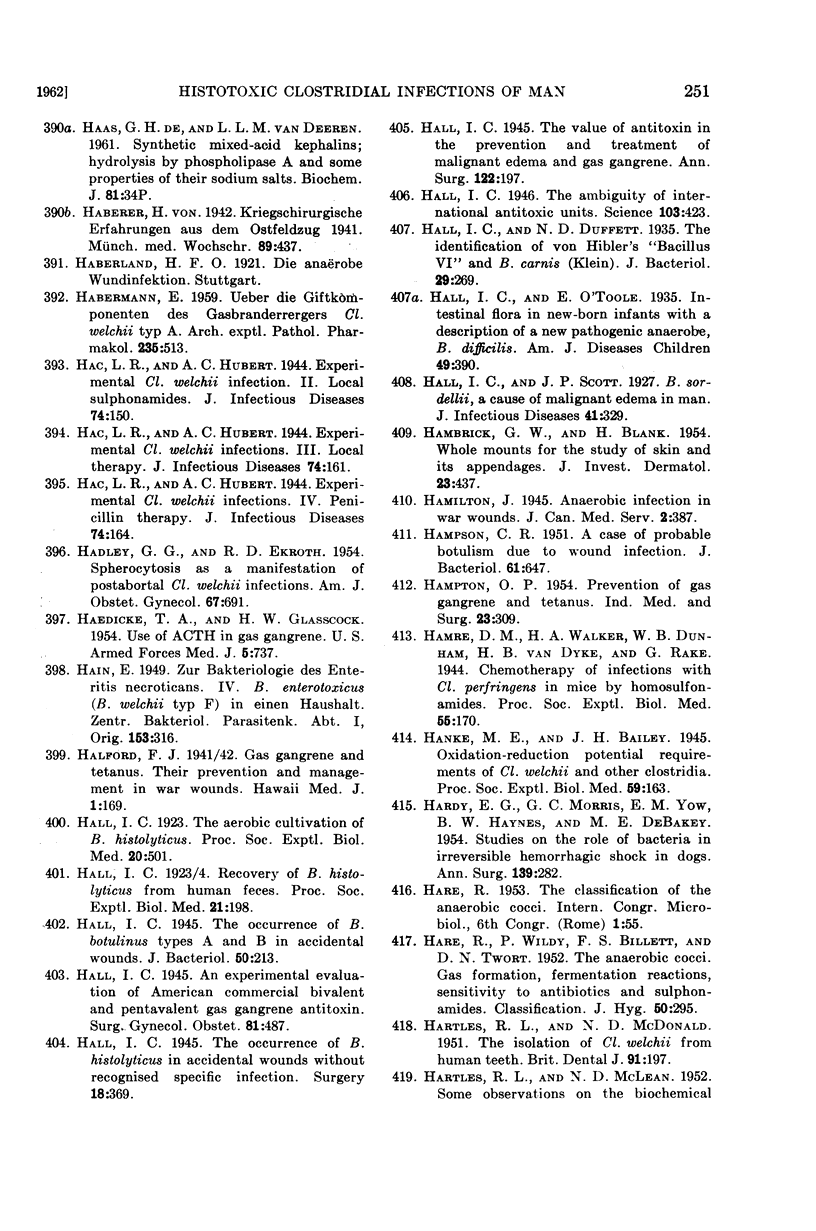
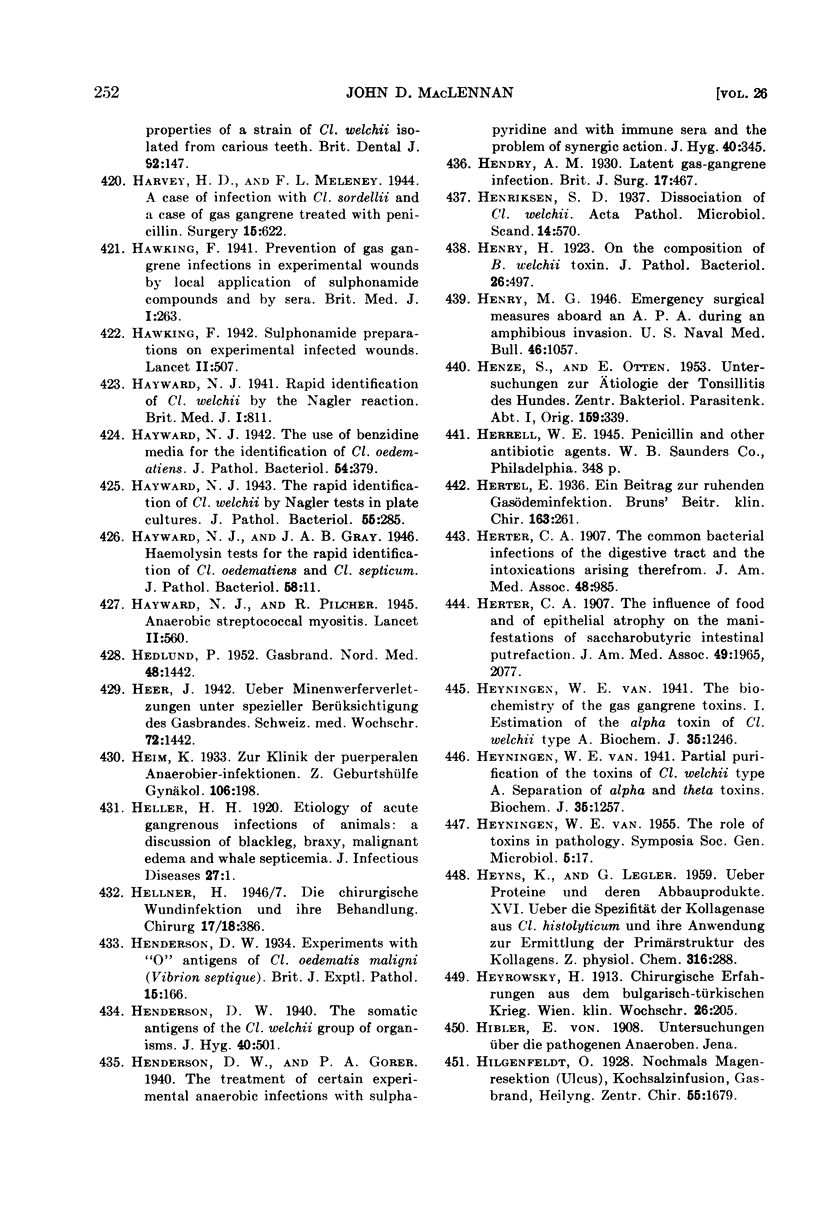
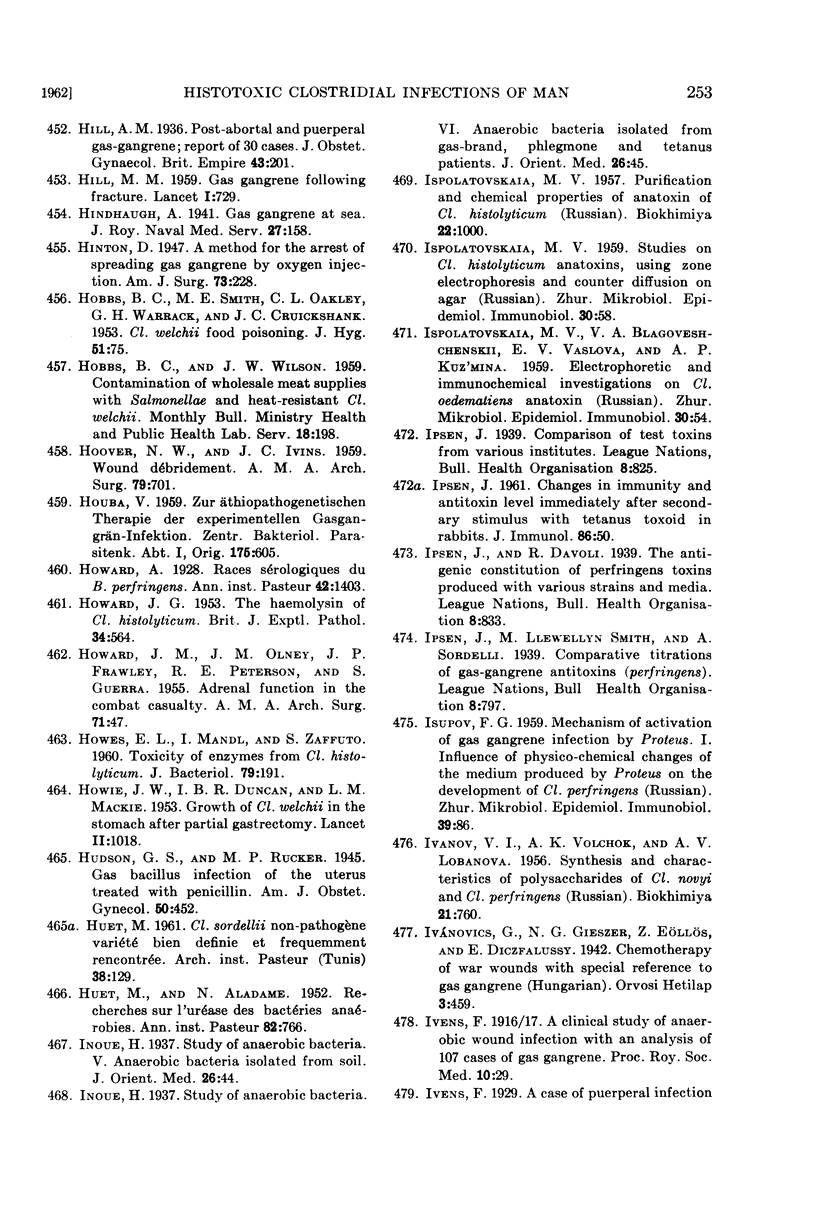
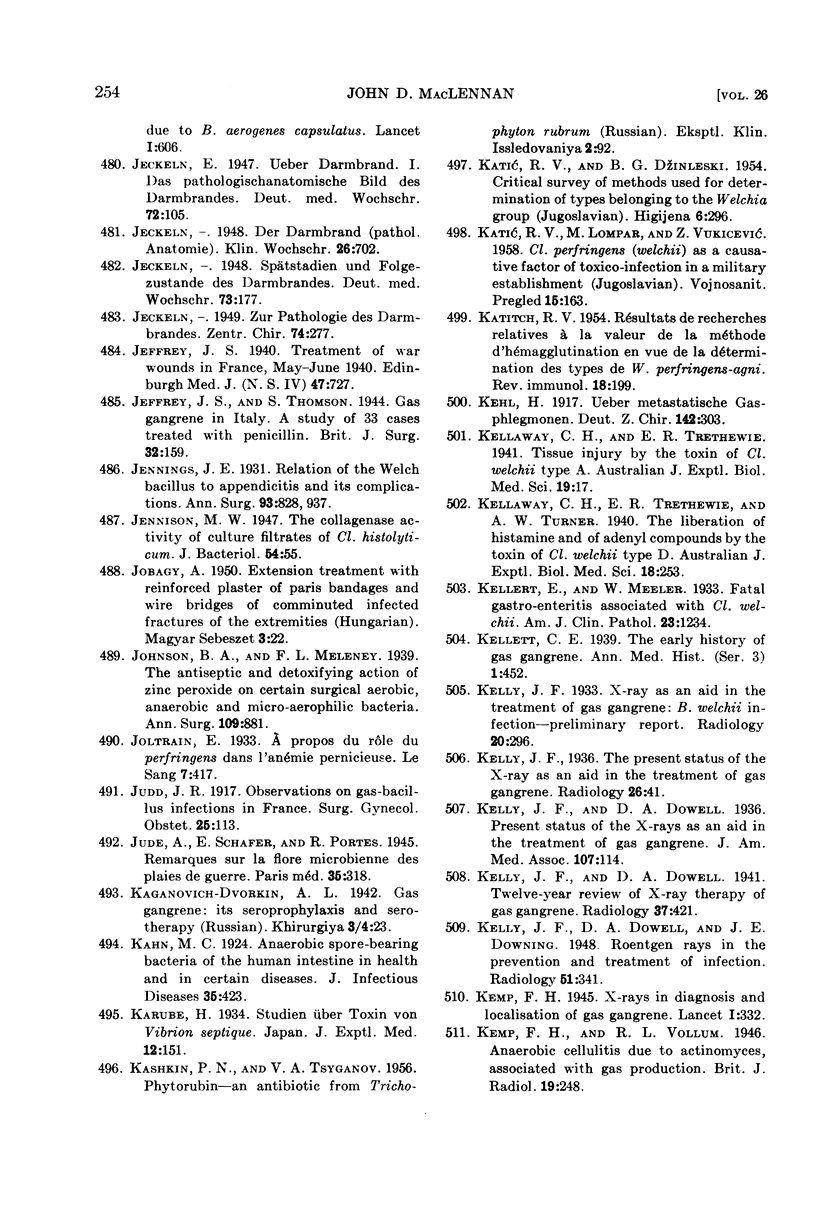
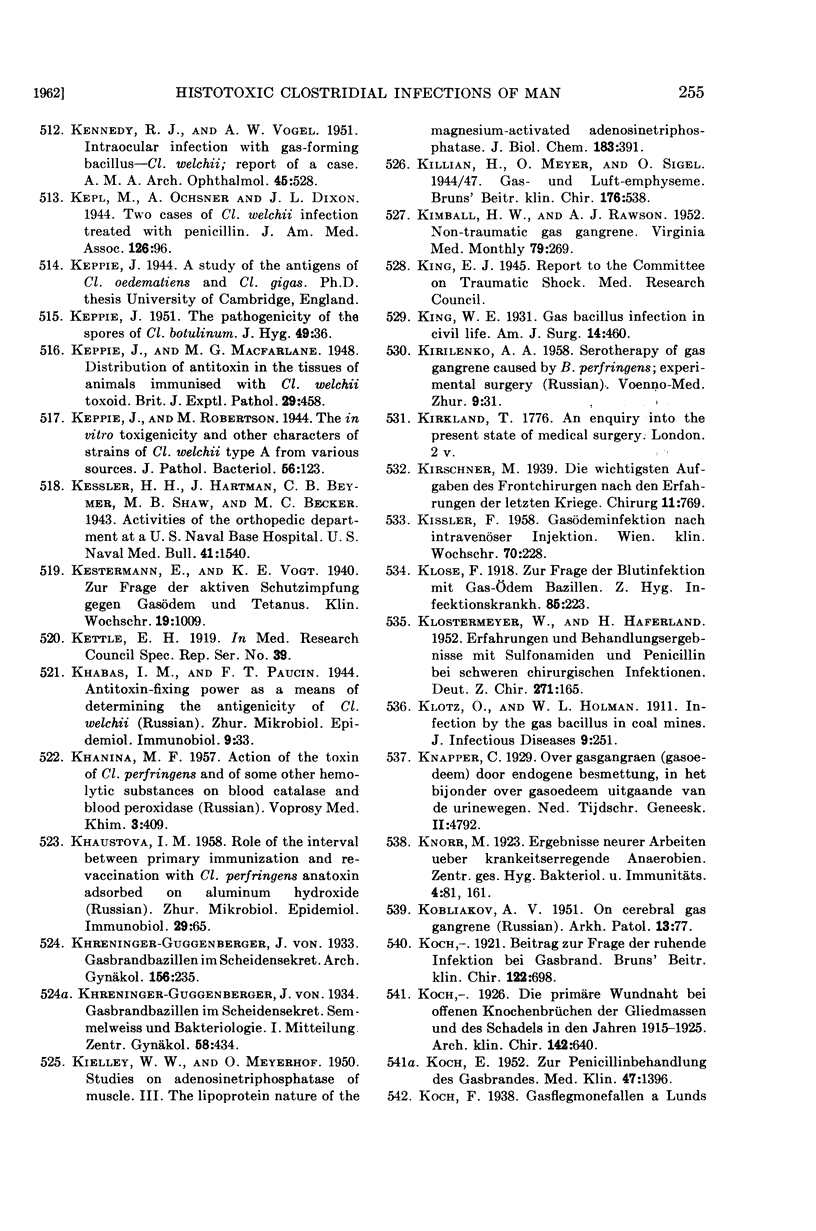
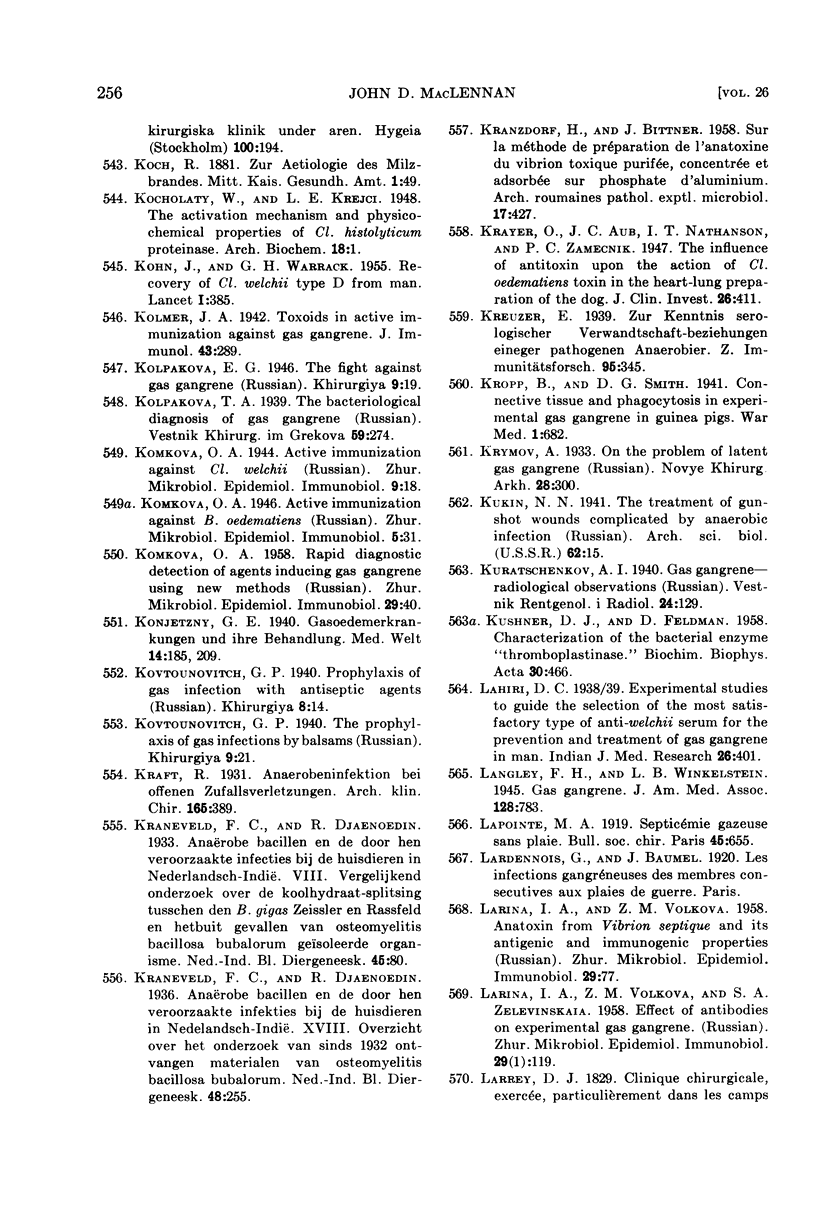
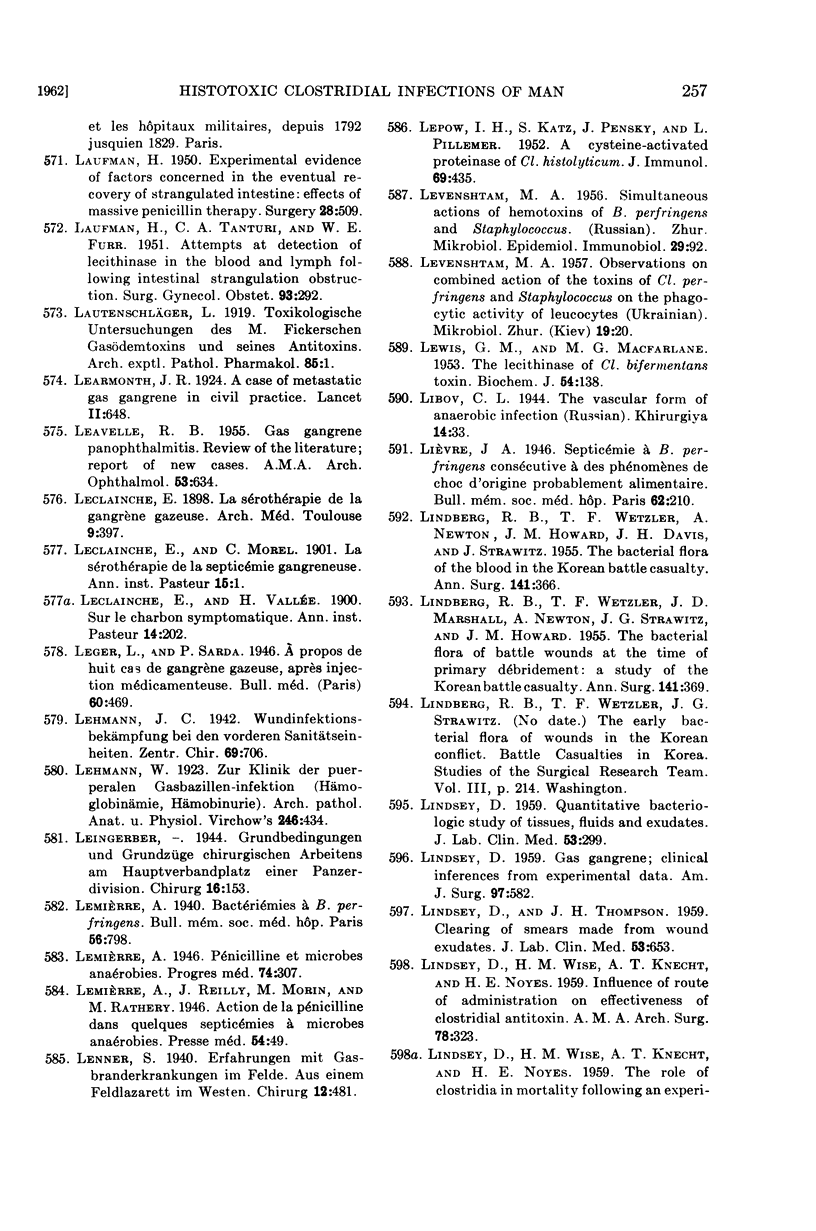
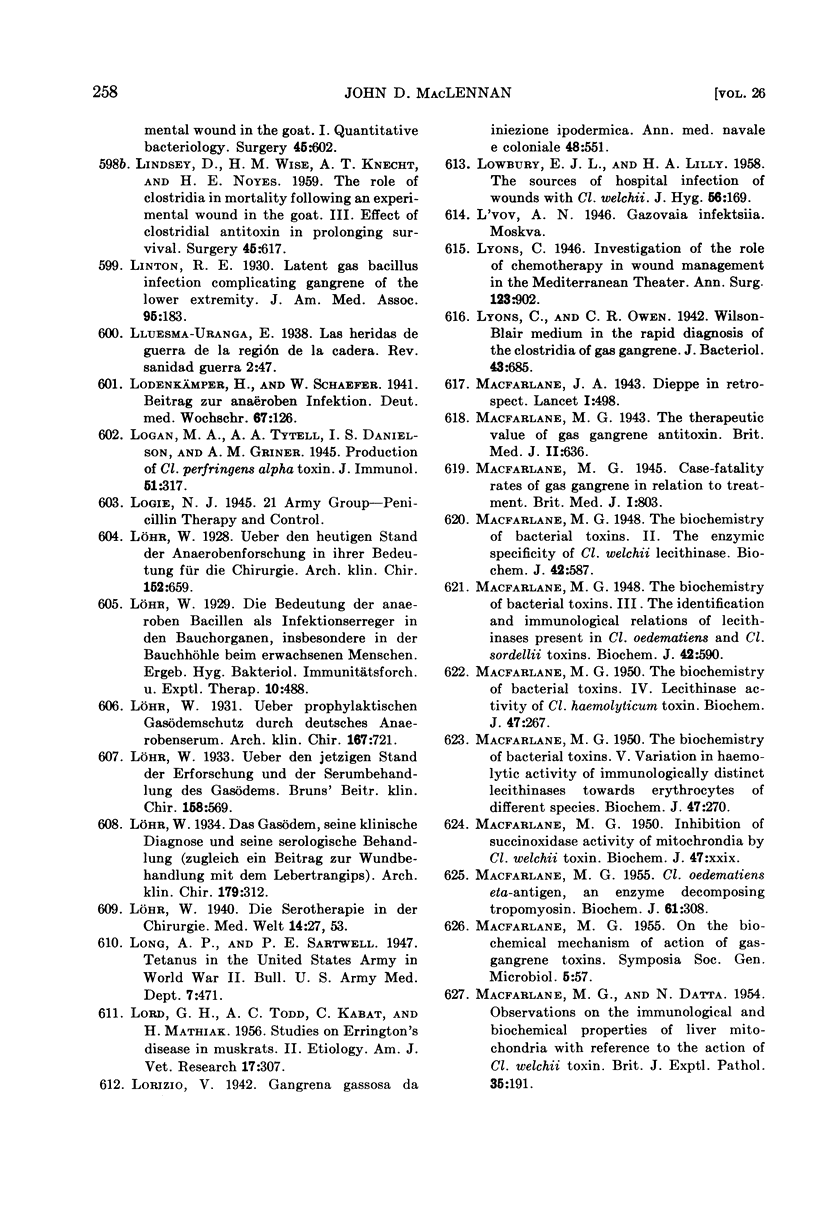
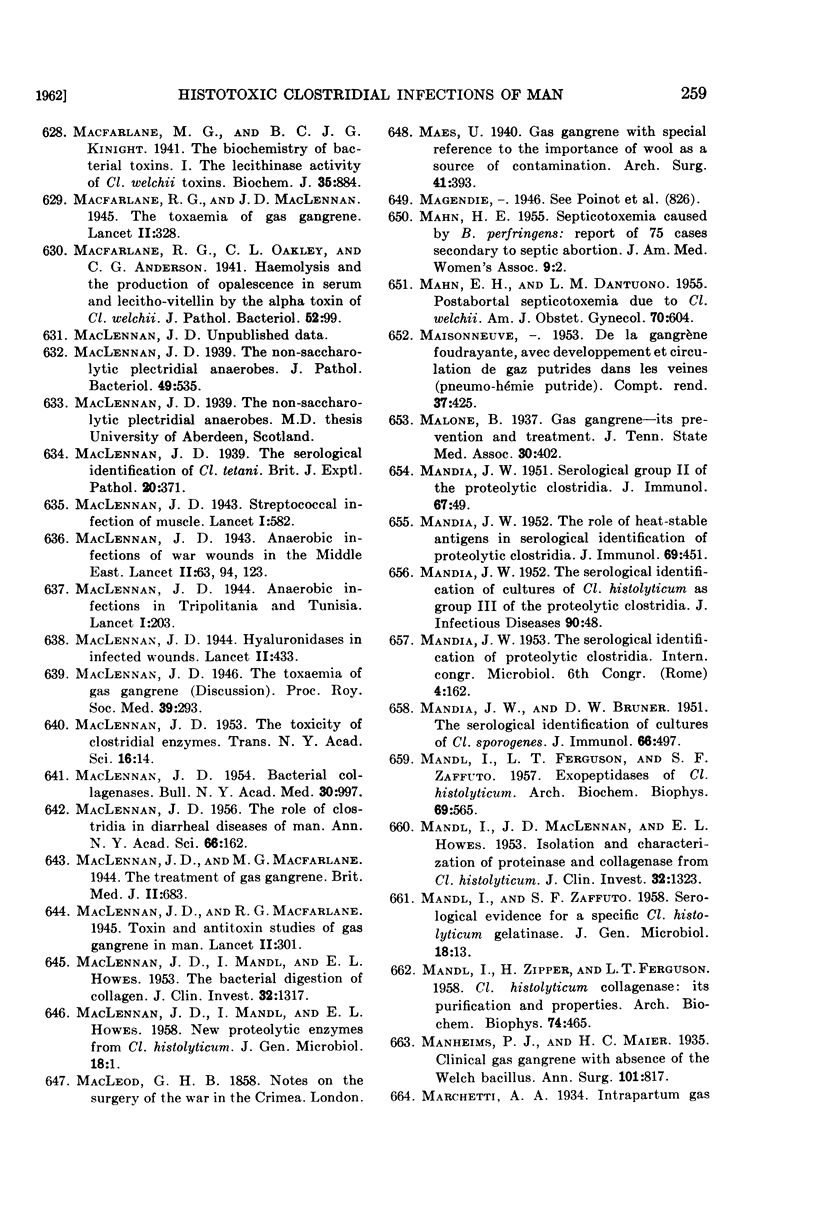
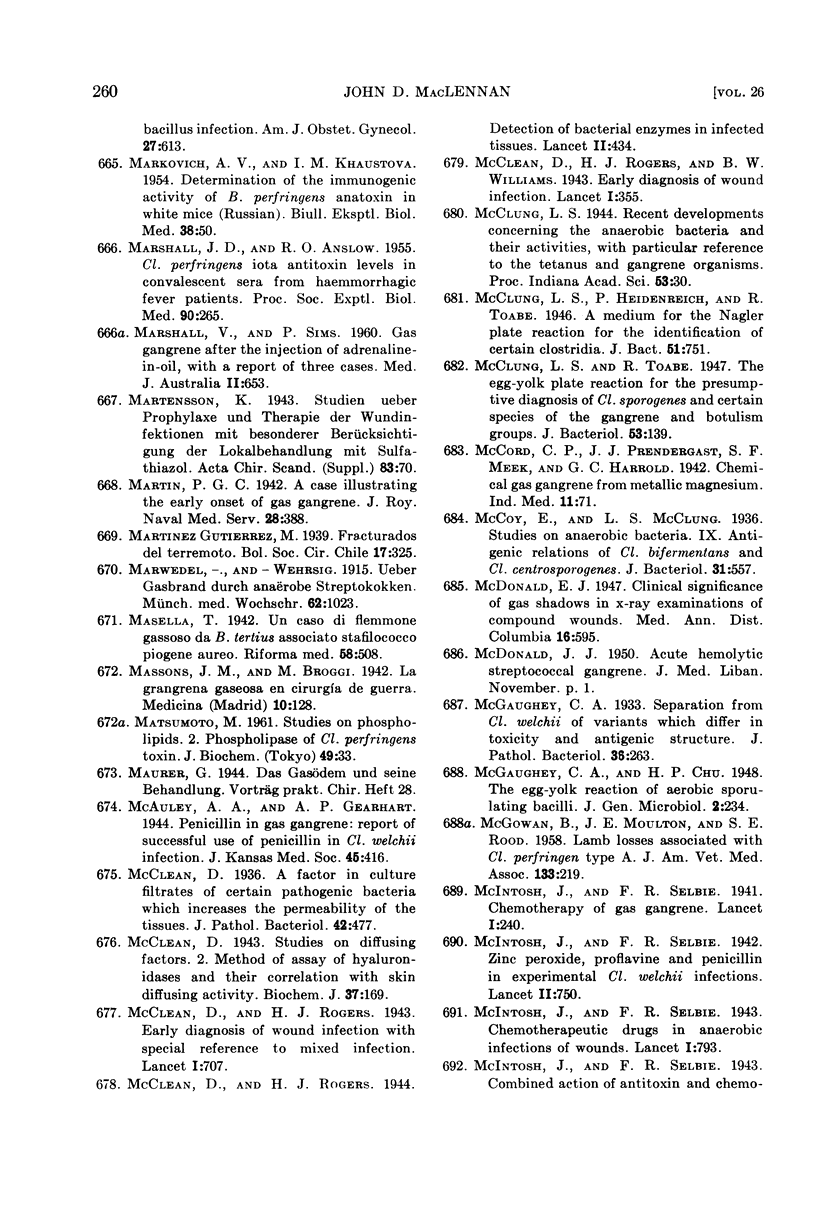
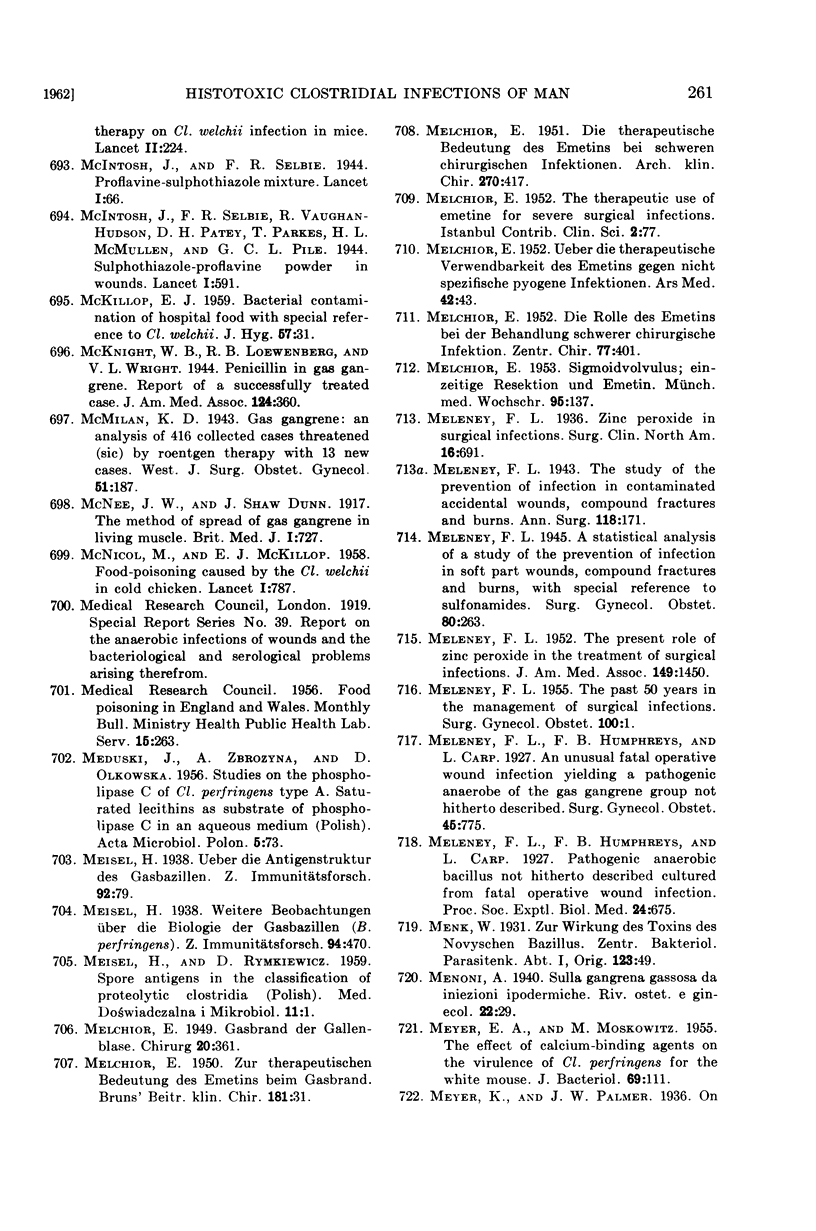
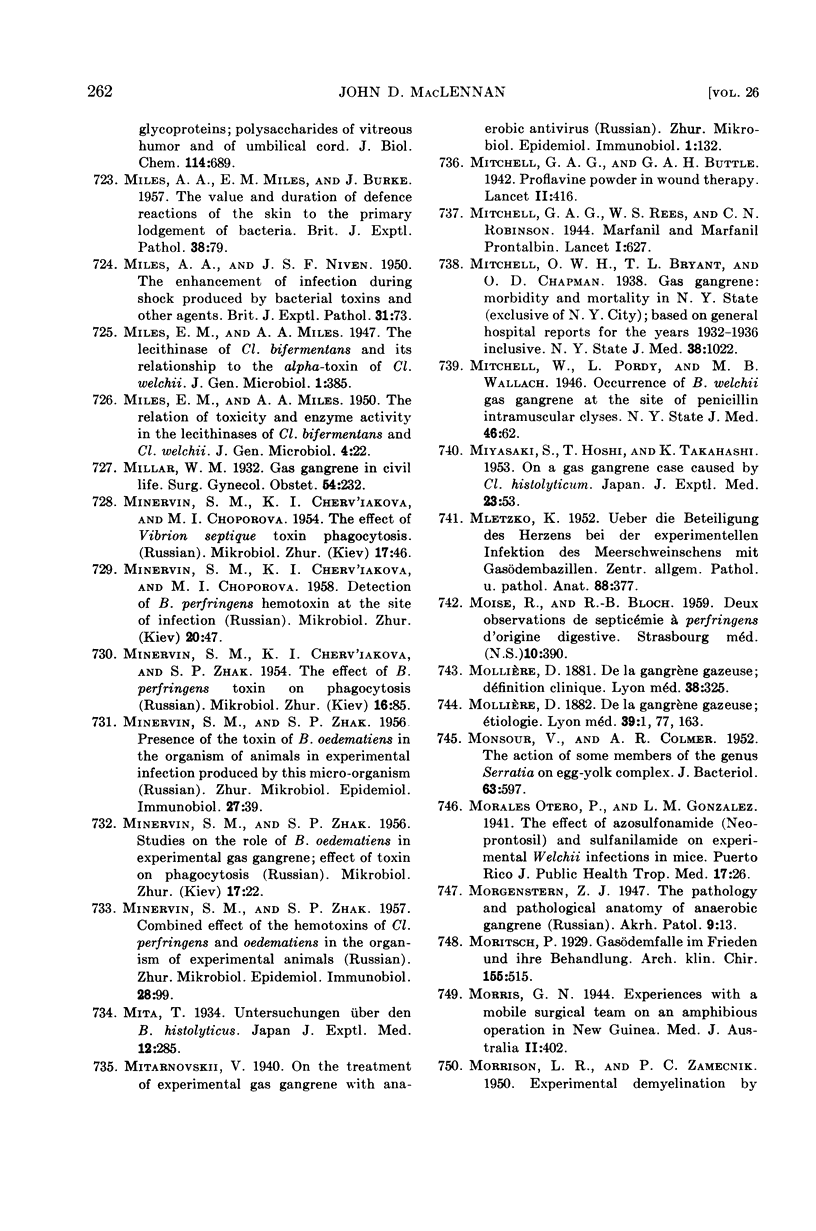
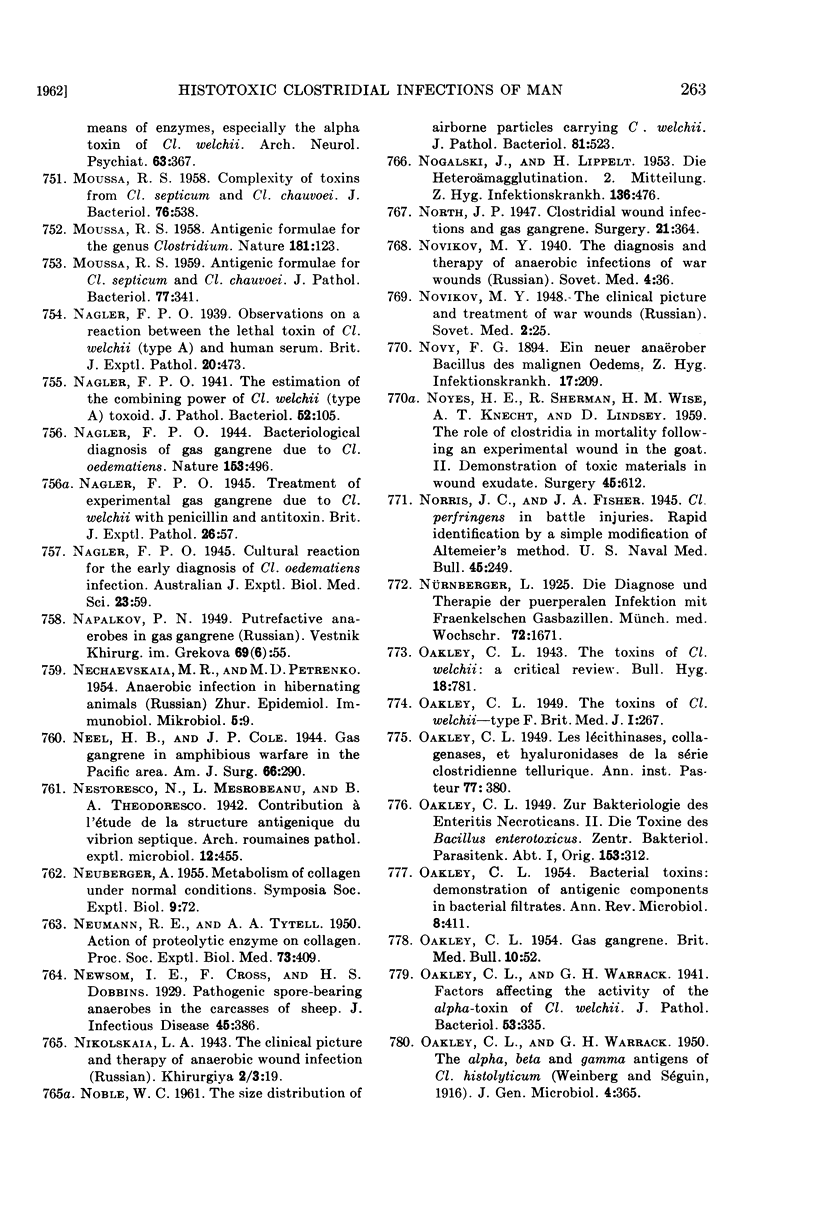
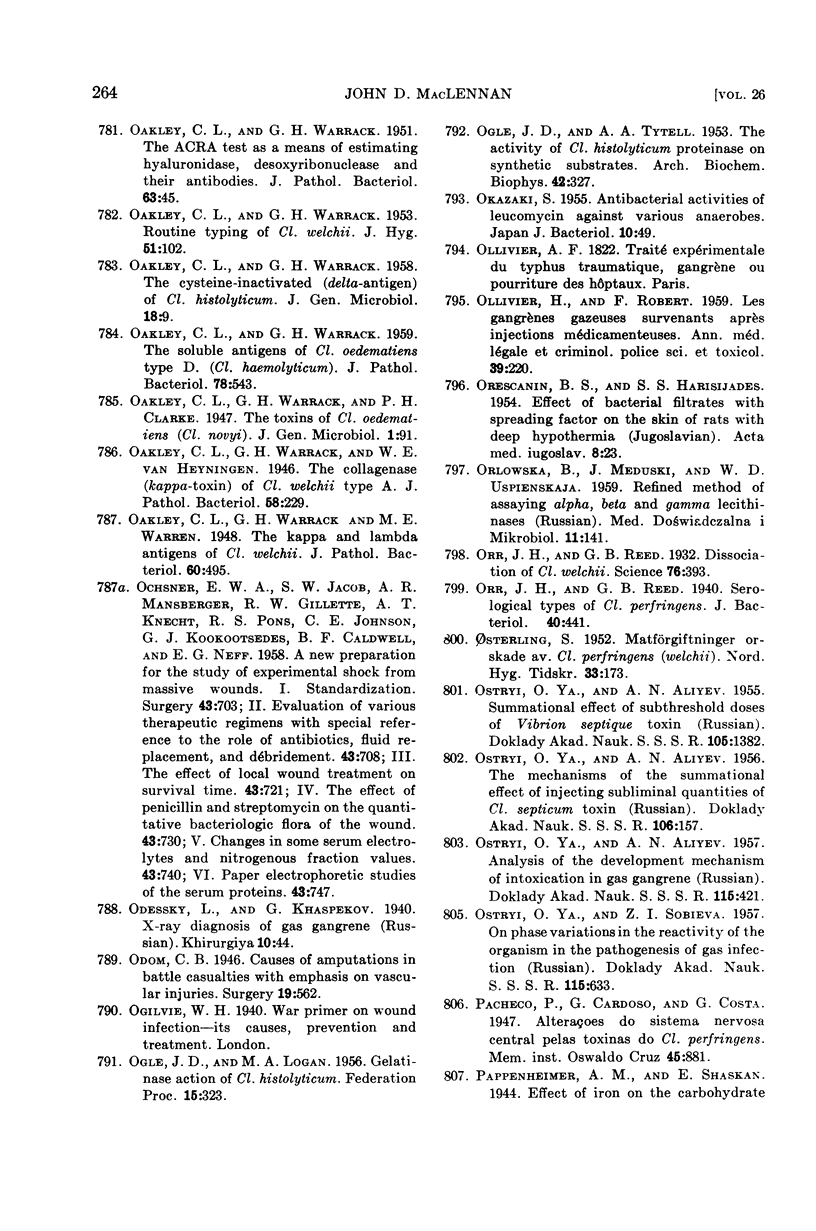
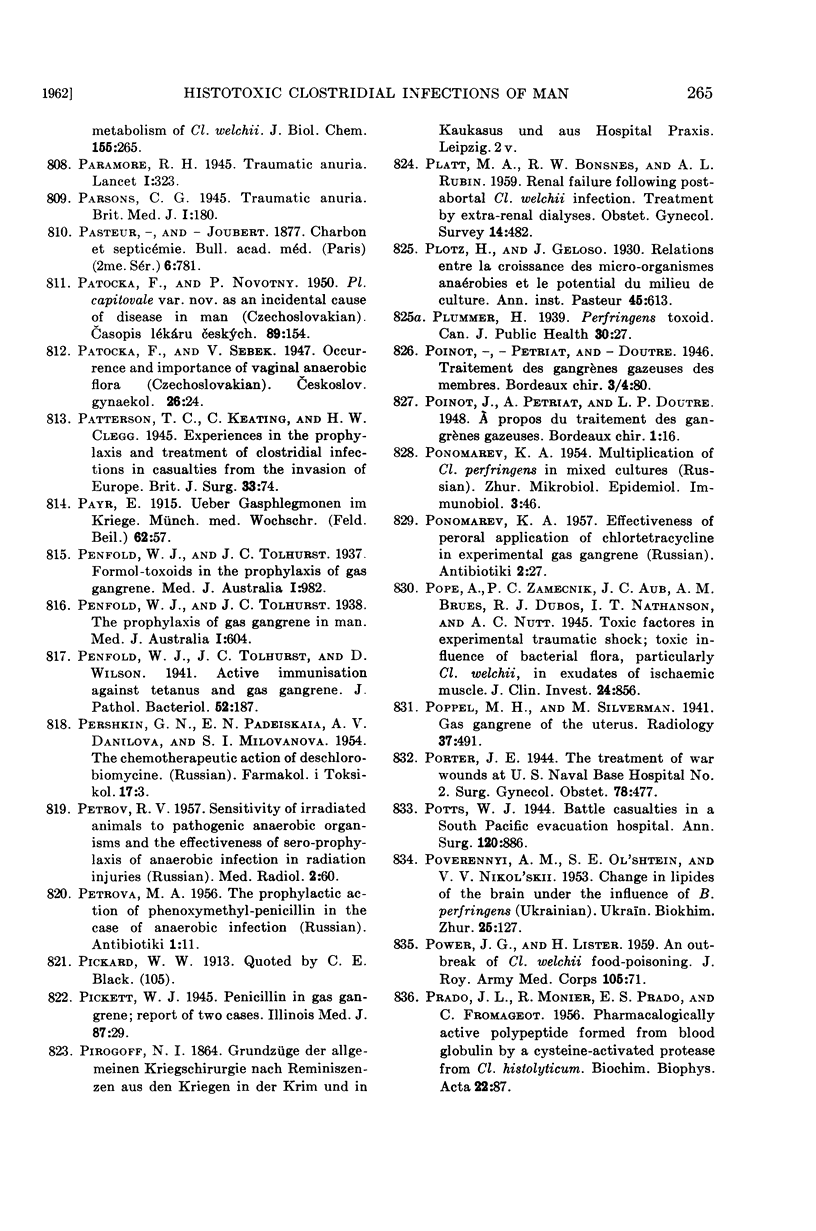
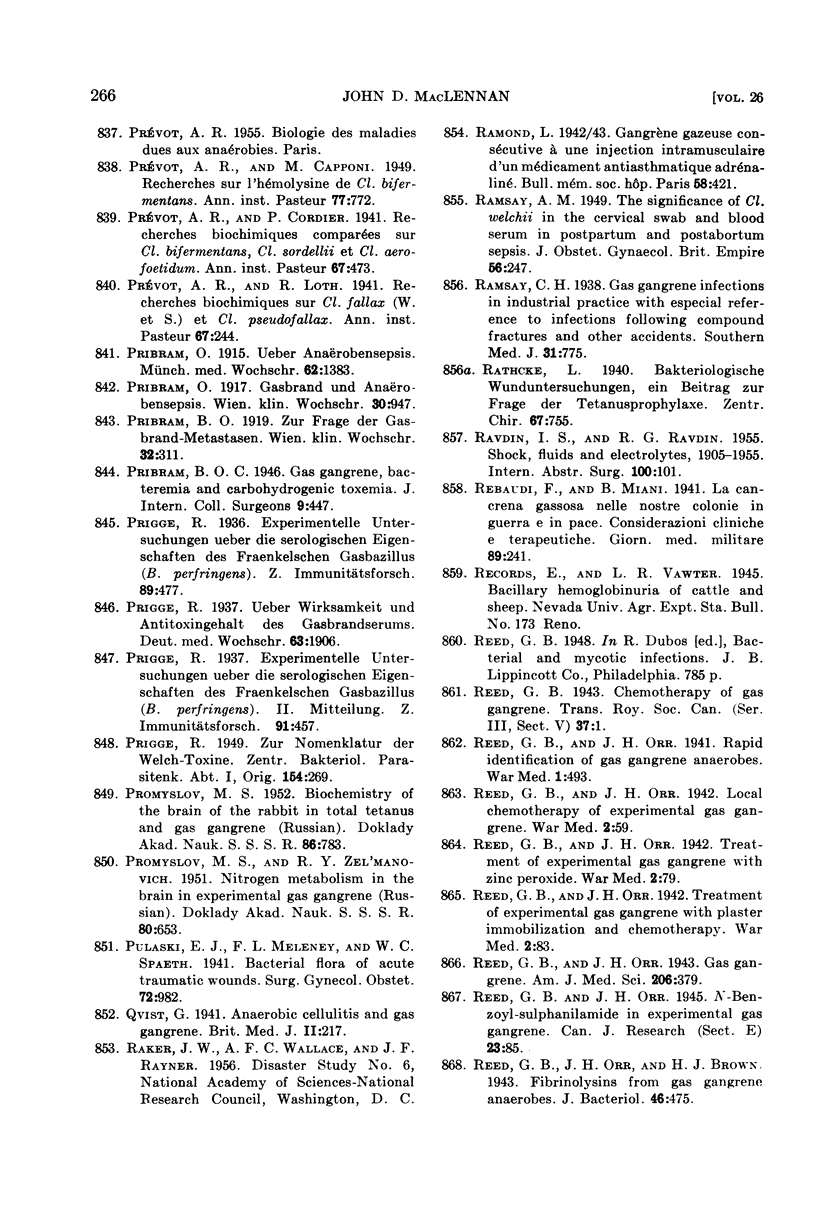
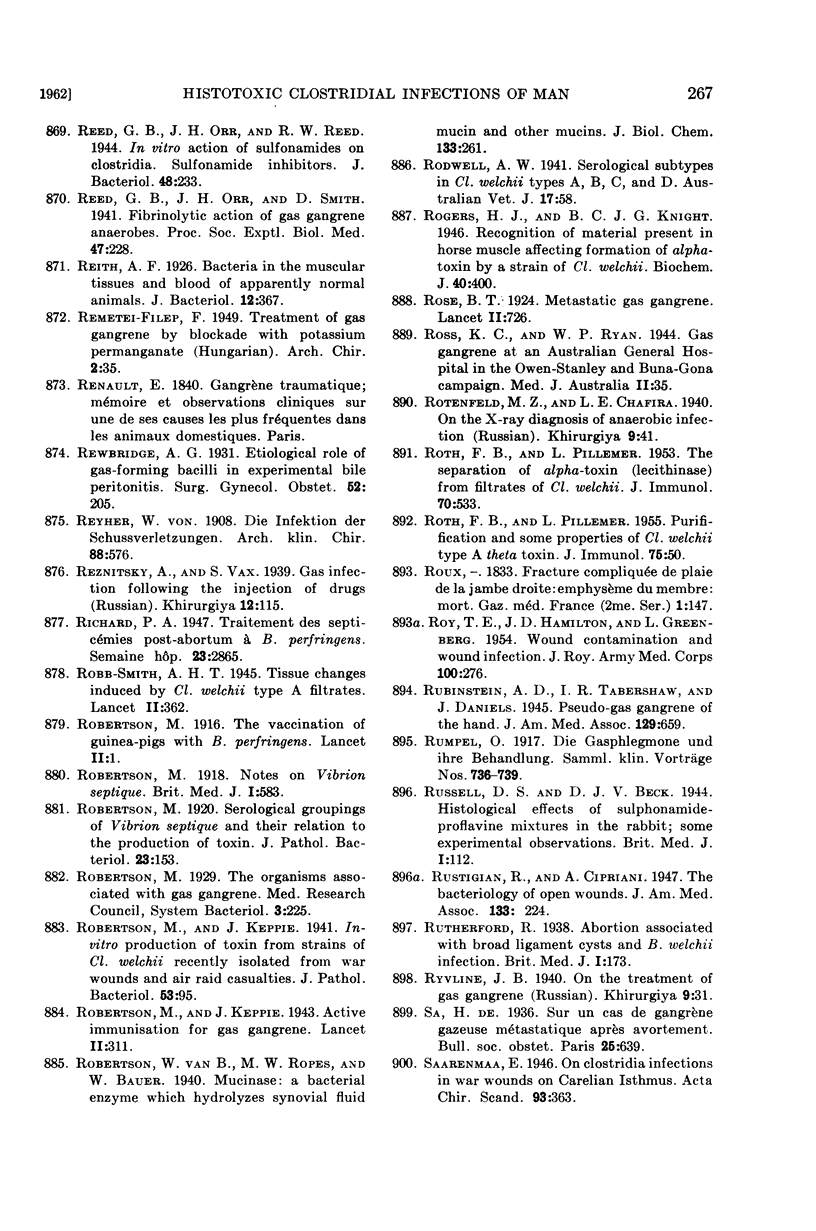
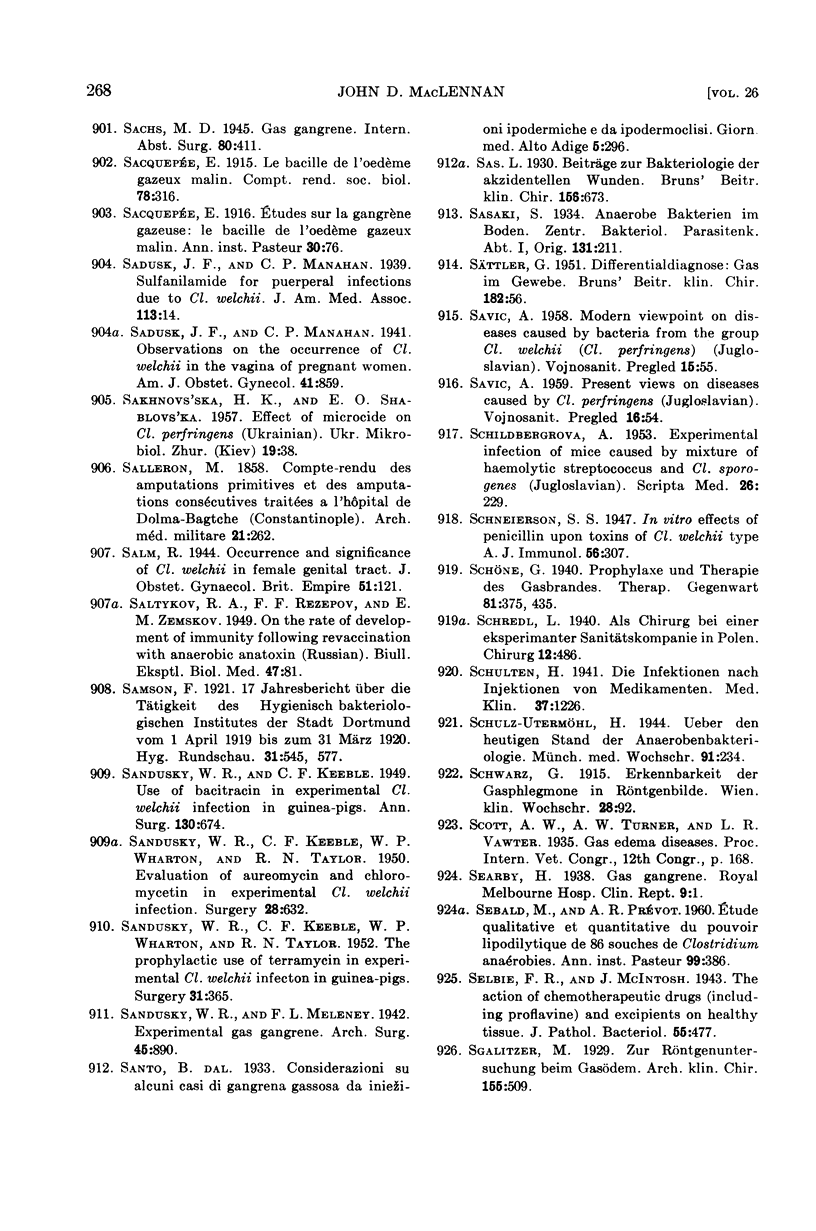
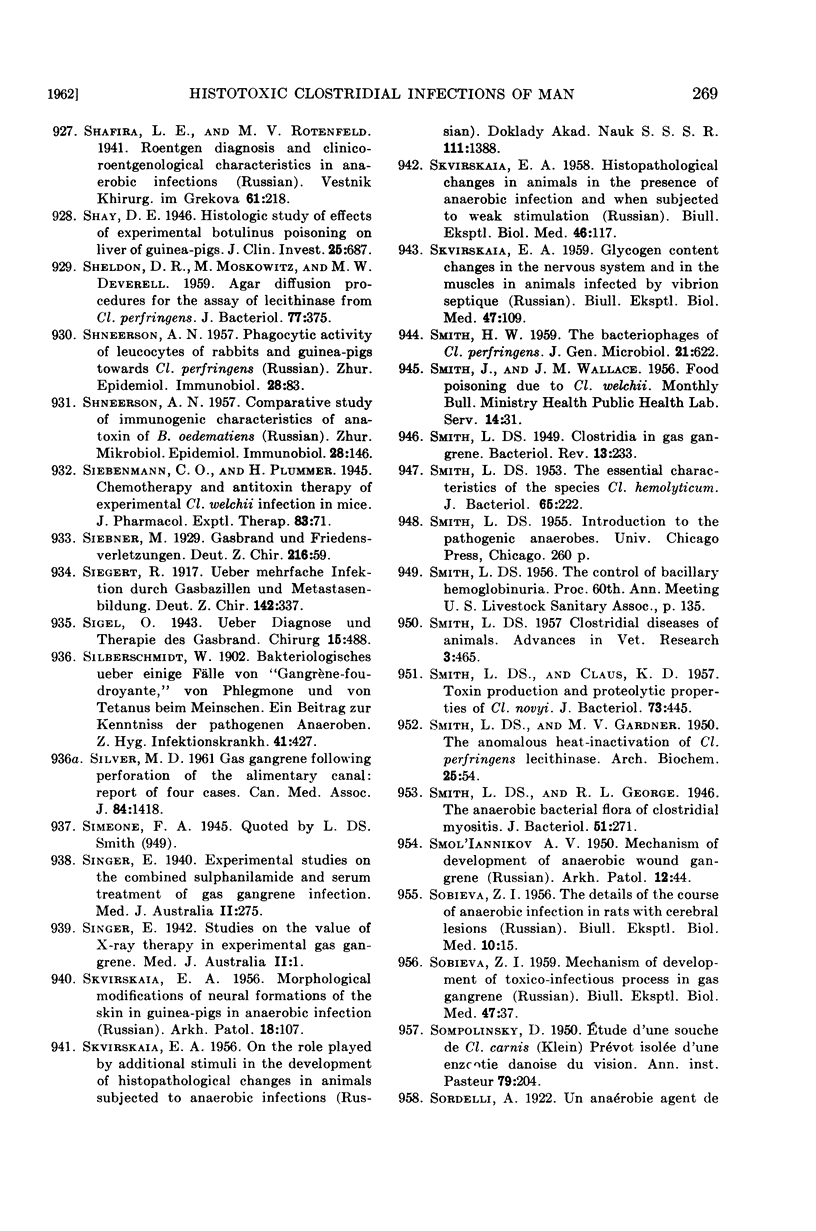
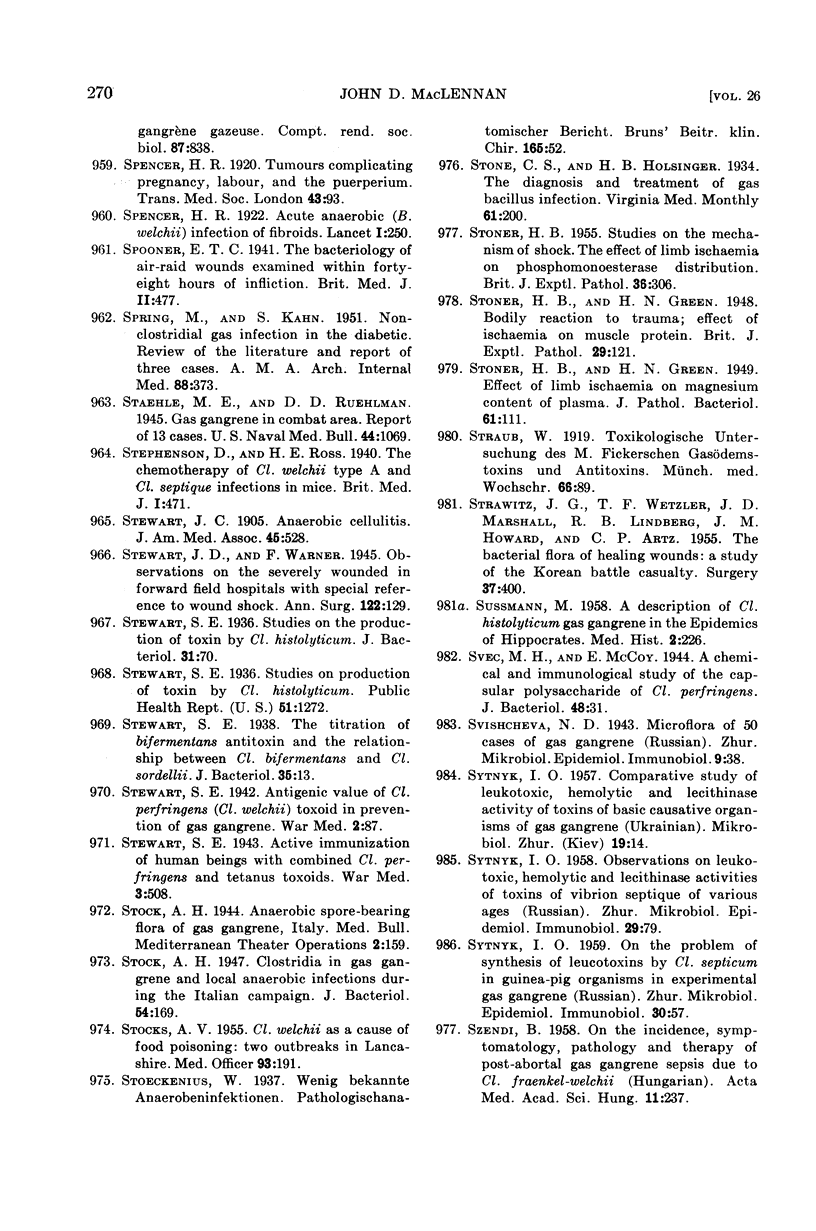
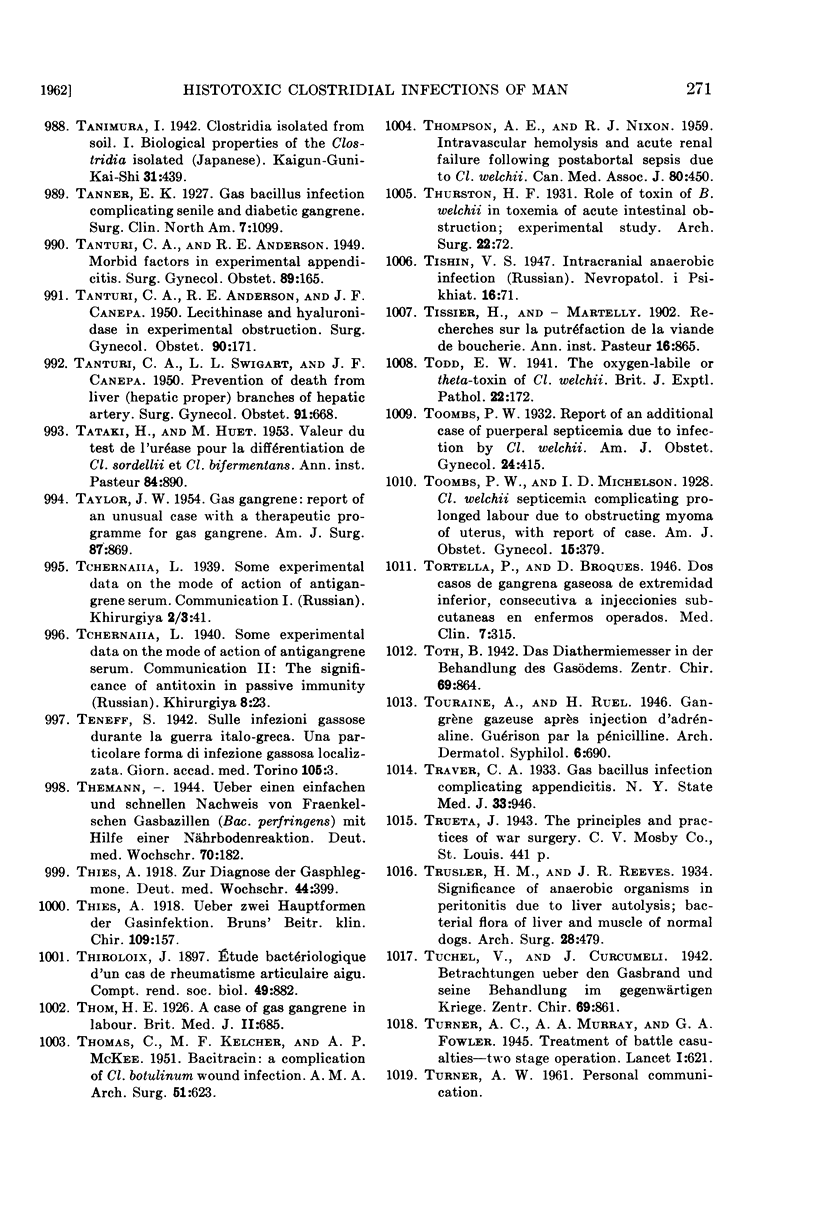
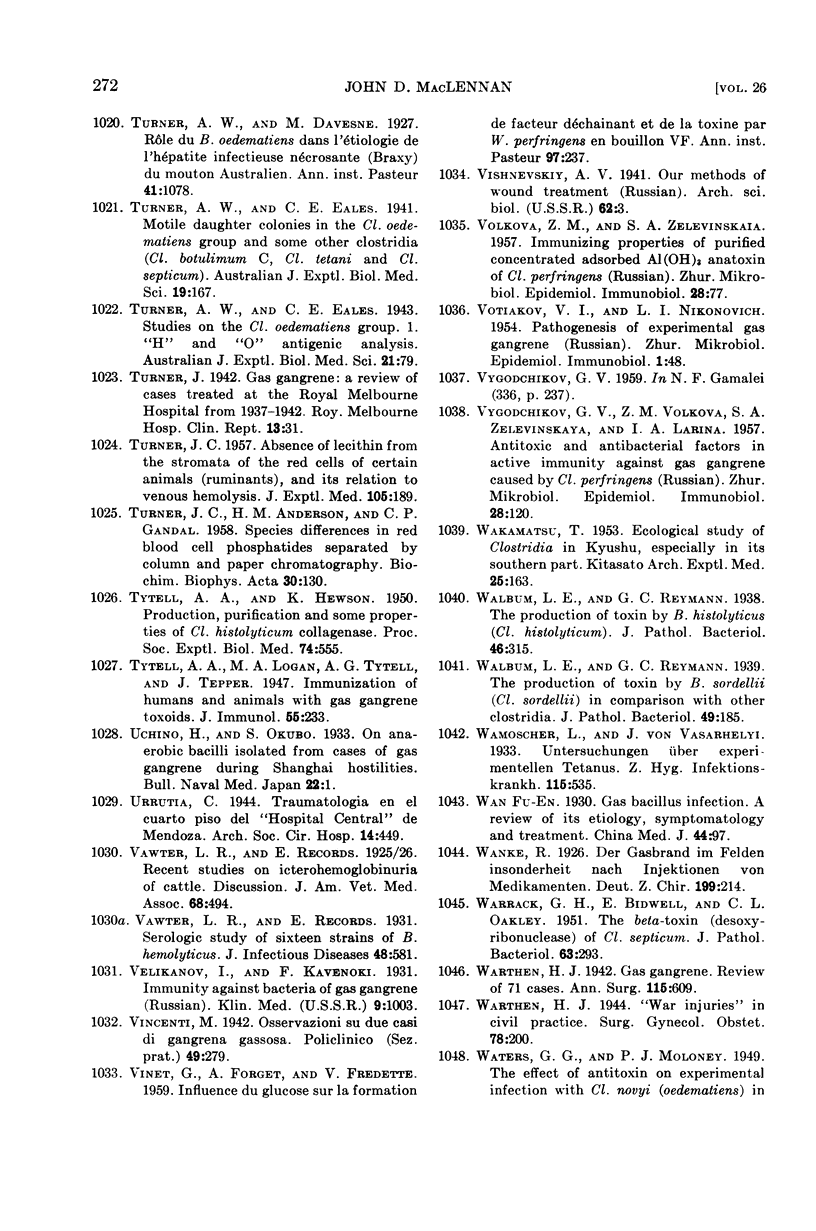
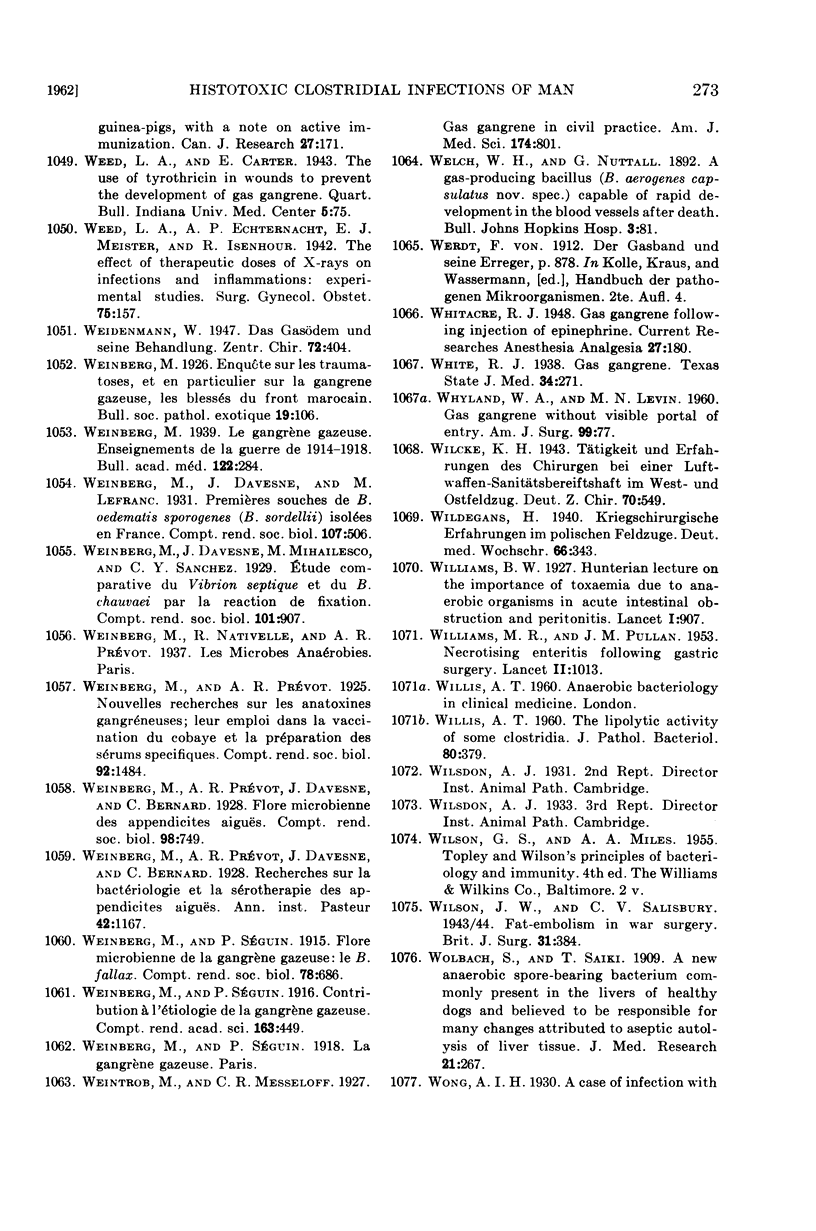
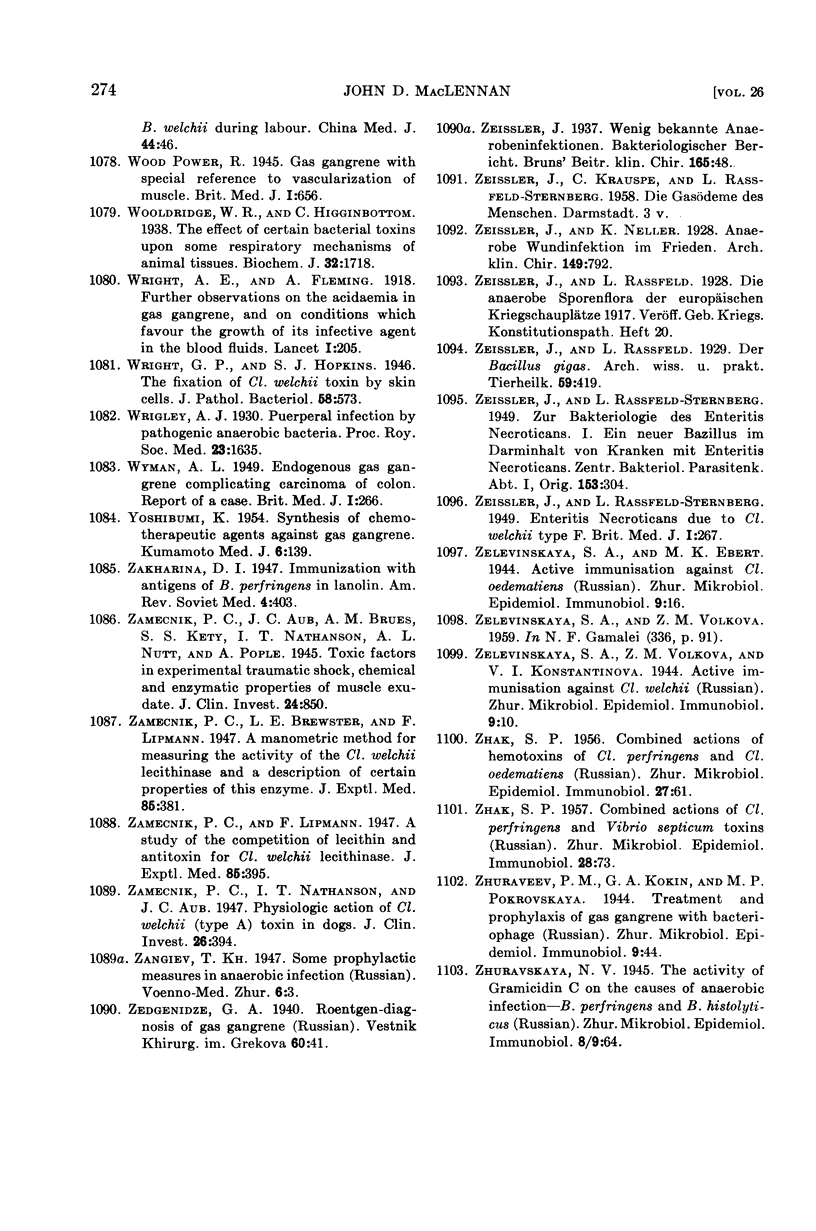
Selected References
These references are in PubMed. This may not be the complete list of references from this article.
- ABEL W. G., ROUSSELOT L. M. Pneumocholecystitis; report of a case. N Engl J Med. 1952 Apr 24;246(17):662–663. doi: 10.1056/NEJM195204242461705. [DOI] [PubMed] [Google Scholar]
- ADLER F. L., SHECHMEISTER I. L. Effect of sub-lethal body x-radiation on susceptibility of mice to Clostridium septicum toxin. Proc Soc Exp Biol Med. 1952 Aug-Sep;80(4):660–664. doi: 10.3181/00379727-80-19723. [DOI] [PubMed] [Google Scholar]
- AGEEV A. K. O penitsillinoterapii eksperimental'nykh anaerobnykh infektsii. Arkh Patol. 1957;19(1):54–57. [PubMed] [Google Scholar]
- AIKAT B. K., DIBLE J. H. The local and general effects of cultures and culture-filtrates of Clostridium oedematiens, CL. septicum, CL. sporogenes and CL. histolyticum. J Pathol Bacteriol. 1960 Apr;79:227–241. doi: 10.1002/path.1700790203. [DOI] [PubMed] [Google Scholar]
- AIKAT B. K., DIBLE J. H. The pathology of Clostridium welchii infection. J Pathol Bacteriol. 1956 Apr;71(2):461–476. doi: 10.1002/path.1700710220. [DOI] [PubMed] [Google Scholar]
- ALTEMEIER W. A., COITH R., SHERMAN R., LOGAN M. A., TYTELL A. Toxoid immunization of experimental gas gangrene; further studies. AMA Arch Surg. 1952 Oct;65(4):633–640. [PubMed] [Google Scholar]
- ALTEMEIER W. A., CULBERTSON W. R., VETTO M., COLE W. Problems in the diagnosis and treatment of gas gangrene. AMA Arch Surg. 1957 Jun;74(6):839–845. doi: 10.1001/archsurg.1957.01280120017002. [DOI] [PubMed] [Google Scholar]
- ALTEMEIER W. A., GIUSEFFI J. Chloromycetin in surgical infections. Surg Gynecol Obstet. 1950 May;90(5):583–590. [PubMed] [Google Scholar]
- ALTEMEIER W. A., McMURRIN J. A., ALT L. P. Chloromycetin and aureomycin in experimental gas gangrene. Surgery. 1950 Oct;28(4):621–631. [PubMed] [Google Scholar]
- AMORIM M. F., MELLO R. F. Intermediate nephron nephrosis from snake poisoning in man; histopathologic study. Am J Pathol. 1954 May-Jun;30(3):479–499. [PMC free article] [PubMed] [Google Scholar]
- ANDERSON R. E., TANTURI C. A. Identification of the toxin of clostridium organisms in experimental intestinal obstruction. Arch Surg. 1950 Jan;60(1):143-53, illust. doi: 10.1001/archsurg.1950.01250010159014. [DOI] [PubMed] [Google Scholar]
- ARANYI S., HALASZ T., TEBNER E. Baleseti sérülés néklül létrejött gázgangraena. Orv Hetil. 1955 Jan 16;96(3):83–84. [PubMed] [Google Scholar]
- ARENDT J. Fetal gas-bacillus infection. Med Radiogr Photogr. 1951;27(3):87–88. [PubMed] [Google Scholar]
- ARNOLD E. L. Gas gangrene panophthalmitis due to Cl. welchii. Trans Opthal Soc U K. 1955;75:259–263. [PubMed] [Google Scholar]
- Altemeier W. A., Furste W. L., Culbertson W. R., Wadsworth C. L., Tytell A. A., Logan M. A., Tytell A. G. Toxoid Immunization in Experimental Gas Gangrene : A Preliminary Report. Ann Surg. 1947 Oct;126(4):509–521. [PMC free article] [PubMed] [Google Scholar]
- Aub J. C., Brues A. M., Kety S. S., Nathanson I. T., Nutt A. L., Pope A., Zamecnik P. C. THE TOXIC FACTORS IN EXPERIMENTAL TRAUMATIC SHOCK. IV. THE EFFECTS OF THE INTRAVENOUS INJECTION OF THE EFFUSION FROM ISCHEMIC MUSCLE. J Clin Invest. 1945 Nov;24(6):845–849. doi: 10.1172/JCI101670. [DOI] [PMC free article] [PubMed] [Google Scholar]
- Aub J. C., Zamecnik P. C., Nathanson I. T. PHYSIOLOGIC ACTION OF CLOSTRIDIUM OEDEMATIENS (NOVYI) TOXIN IN DOGS. J Clin Invest. 1947 May;26(3):404–410. doi: 10.1172/JCI101822. [DOI] [PMC free article] [PubMed] [Google Scholar]
- BAKER E. M., WEBSTER M. E., FREEMAN M. E., CARY S. G., SANDERS A. C. Purification of hyaluronidase from Clostridium perfringens. Proc Soc Exp Biol Med. 1956 Jan;91(1):24–27. doi: 10.3181/00379727-91-22158. [DOI] [PubMed] [Google Scholar]
- BALCH H. H., GANLEY O. H. Observations on the pathogenesis of Clostridium welchii myonecrosis. Ann Surg. 1957 Jul;146(1):86–97. doi: 10.1097/00000658-195707000-00010. [DOI] [PMC free article] [PubMed] [Google Scholar]
- BALCH H. H. The effect of severe battle injury and of post-traumatic renal failure on resistance to infection. Ann Surg. 1955 Aug;142(2):145–163. doi: 10.1097/00000658-195508000-00001. [DOI] [PMC free article] [PubMed] [Google Scholar]
- BECK A., FOXELL A. W., TURNER W. C. An outbreak of food-poisoning due to Cl. welchii. Br Med J. 1954 Mar 20;1(4863):686–687. doi: 10.1136/bmj.1.4863.686. [DOI] [PMC free article] [PubMed] [Google Scholar]
- BEREZOVSKAIA N. N. Aktivnost' letsitinazy C v organakh i tkaniakh normal'nykh morskikh svinok i posle vvedeniia delta-toksina Bac. perfringens. Biokhimiia. 1954 May-Jun;19(3):299–303. [PubMed] [Google Scholar]
- BERG M., LEVINSON S. A. Alkaline phosphatase activity of the kidney following experimental shock in dogs induced by Clostridium perfringens toxins. AMA Arch Pathol. 1952 Feb;53(2):179–186. [PubMed] [Google Scholar]
- BERG M., LEVINSON S. A. Hyperglycemia and histochemical changes induced in dogs by Clostridium perfringens toxin. AMA Arch Pathol. 1959 Jul;68(1):83–93. [PubMed] [Google Scholar]
- BERG M., LEVINSON S. A. Hyperglycemia induced in dogs by Clostridium perfringens toxin. AMA Arch Pathol. 1957 Dec;64(6):633–642. [PubMed] [Google Scholar]
- BERG M., LEVINSON S. A. Nephrotoxic damage by Clostridium perfringens toxin; protective effect of amino acids against hyperglycemia and renal damage by C. perfringens toxin. AMA Arch Pathol. 1955 Jun;59(6):656–668. [PubMed] [Google Scholar]
- BERG M., LEVINSON S. A., WANG K. J. Effect of experimental shock induced by Clostridium perfringens toxin on the kidneys of dogs. AMA Arch Pathol. 1951 Feb;51(2):137–153. [PubMed] [Google Scholar]
- BERGMANN J., RAPP G. Das serologische Verhalten der Typen des Fraenkel'schen Gasbazillus (Clostridium perfringens). Zentralbl Bakteriol Orig. 1953 Sep 5;159(8):500–508. [PubMed] [Google Scholar]
- BIDWELL E. Proteolytic enzymes of Clostridium welchii. Biochem J. 1950 May;46(5):589–598. doi: 10.1042/bj0460589. [DOI] [PMC free article] [PubMed] [Google Scholar]
- BJORKLUND B., BERENGO A. Studies on the antigenic composition of some clostridia toxins with the aid of gel diffusion. Acta Pathol Microbiol Scand. 1954;34(1):79–86. doi: 10.1111/j.1699-0463.1954.tb00803.x. [DOI] [PubMed] [Google Scholar]
- BLOCKER T. G., Jr, BLOCKER V., GRAHAM J. E., JACOBSON H. Follow-up medical survey of the Texas City disaster. Am J Surg. 1959 May;97(5):604–617. doi: 10.1016/0002-9610(59)90253-3. [DOI] [PubMed] [Google Scholar]
- BLOCK M. A., WAKIM K. G., MANN F. C. Pathogenesis of acute renal insufficiency seen in surgical patients; experimental evaluation of certain factors; a résumé. AMA Arch Surg. 1954 May;68(5):693–704. doi: 10.1001/archsurg.1954.01260050695016. [DOI] [PubMed] [Google Scholar]
- BOGGS D. R., FREI E., 3rd, THOMAS L. B. Clostridial gas gangrene and septicemia in four patients with leukemia. N Engl J Med. 1958 Dec 25;259(26):1255–1258. doi: 10.1056/NEJM195812252592604. [DOI] [PubMed] [Google Scholar]
- BOWEN H. E. A comparison of the lethal and hemolytic toxins of Clostridium histolyticum. Yale J Biol Med. 1952 Nov;25(2):131–138. [PMC free article] [PubMed] [Google Scholar]
- BOWEN H. E. The partial purification of the lethal toxin of clostridium histolyticum. Yale J Biol Med. 1952 Nov;25(2):124–130. [PMC free article] [PubMed] [Google Scholar]
- BRAVO MATEOS C. Gangrena gaseosa por inyección medicamentosa; a propósito de tres casos. Rev Clin Esp. 1950 Mar 31;36(6):409–412. [PubMed] [Google Scholar]
- BRISOU J., MILHADE J. A propos des collagènases. Bull Soc Chim Biol (Paris) 1951;33(1-2):64–68. [PubMed] [Google Scholar]
- BRISOU J. Mise en évidence des collagénases microbiennes. Ann Inst Pasteur (Paris) 1951 Jul;81(1):117–118. [PubMed] [Google Scholar]
- BROOKS M. E., EPPS H. B. Taxonomic studies of the genus Clostridium: Clostrididum bifermentans and C. sordellii. J Gen Microbiol. 1959 Aug;21:144–155. doi: 10.1099/00221287-21-1-144. [DOI] [PubMed] [Google Scholar]
- BULATOVA T. I., MATVEEV K. I. Zashchishchennost' tsentral'noi nervnoi sistemy ot deistviia toksinov perfringens i edematiens v zavisimosti ot titra antitoksina v krovi. Biull Eksp Biol Med. 1957 Mar;43(3):71–75. [PubMed] [Google Scholar]
- BULL J. P., ENGLAND N. W. Fluid and electrolyte exchange in patients with burns. Lancet. 1954 Jul 3;267(6827):9–17. doi: 10.1016/s0140-6736(54)90003-3. [DOI] [PubMed] [Google Scholar]
- BURROWS W. Kinetic aspects of hemolysis by the alpha-toxin of Clostridium welchii and its inhibition by antitoxin. J Infect Dis. 1951 Nov-Dec;89(3):233–251. doi: 10.1093/infdis/89.3.233. [DOI] [PubMed] [Google Scholar]
- BUSHE K. A. Gasbrandinfektion der Kopfschwarte; Gasbrand des Hirns und seiner Häute. Zentralbl Neurochir. 1954;14(3):121–128. [PubMed] [Google Scholar]
- BYCHENKO B. D., MATVEEV K. I., BULATOVA T. I., DAVYDOVA N. V. Serologicheskoe gruppy Cl perfringens, izuchennye metodom reaktsii pretsipitatsii. Zh Mikrobiol Epidemiol Immunobiol. 1959 Jan;30(1):81–85. [PubMed] [Google Scholar]
- Bard R. C., McClung L. S. Biochemical Properties of the Toxins of Clostridium novyi and Clostridium hemolyticum. J Bacteriol. 1948 Nov;56(5):665–670. doi: 10.1128/jb.56.5.665-670.1948. [DOI] [PMC free article] [PubMed] [Google Scholar]
- Bidwell E. The kappa-toxin (collagenase) of Clostridium welchii. 2. The effect of alkaline pH and heat. Biochem J. 1949;44(1):28–32. doi: 10.1042/bj0440028. [DOI] [PMC free article] [PubMed] [Google Scholar]
- Bourns H. K. Metastatic Gas Gangrene. Br Med J. 1946 Apr 13;1(4449):570–571. doi: 10.1136/bmj.1.4449.570. [DOI] [PMC free article] [PubMed] [Google Scholar]
- CALMAN R. M., GIBSON J. The bacteriology of the puerperal uterus. J Obstet Gynaecol Br Emp. 1954 Oct;61(5):623–627. doi: 10.1111/j.1471-0528.1954.tb07696.x. [DOI] [PubMed] [Google Scholar]
- CHAU A. Y. S., GOLDBLOOM V. C., GURD F. N. Clostridial infection as a cause of death after ligation of the hepatic artery. AMA Arch Surg. 1951 Sep;63(3):390–401. doi: 10.1001/archsurg.1951.01250040396014. [DOI] [PubMed] [Google Scholar]
- CHERKAS G. P. Metod izgotovleniia preparata dlia aktivnoi imunizatsii protiv CI. perfringens i oedematiens. Zh Mikrobiol Epidemiol Immunobiol. 1958 Jul;29(7):60–65. [PubMed] [Google Scholar]
- CHERKAS G. P. [Studies on immunogenic properties of gangrenal dianatoxin (perfringens and oedematiens) on humans]. Zh Mikrobiol Epidemiol Immunobiol. 1959 Sep;30:90–94. [PubMed] [Google Scholar]
- COHN I., Jr A new technic for the study of strangulation obstruction. Am Surg. 1954 May;20(5):563–567. [PubMed] [Google Scholar]
- COHN I., Jr Antibacterial agents in experimental strangulation obstruction. Am Surg. 1953 Mar;19(3):294–297. [PubMed] [Google Scholar]
- COHN I., Jr Collective review: strangulation obstruction. Surg Gynecol Obstet. 1956 Aug;103(2):105–137. [PubMed] [Google Scholar]
- COHN I., Jr, GELB A., HAWTHORNE H. R. Strangulation obstruction; effect of pre- and postoperative antibacterial agents; a preliminary report. Surg Forum. 1951:123–129. [PubMed] [Google Scholar]
- COHN I., Jr, GELB A., HAWTHORNE H. R. Strangulation obstruction; the effect of pre- and post- operative antibacterial agents. Ann Surg. 1953 Nov;138(5):748–758. doi: 10.1097/00000658-195311000-00011. [DOI] [PMC free article] [PubMed] [Google Scholar]
- COHN I., Jr, HAWTHORNE H. R., NEMIR P., DRABKIN D. L. Studies in strangulation obstruction. III. Recovery of an abnormal hemin pigment in the human. AMA Arch Surg. 1953 Jan;66(1):126–128. [PubMed] [Google Scholar]
- COHN I., Jr, HAWTHORNE H. R. The role of Clostridium welchii in strangulation obstruction. Ann Surg. 1951 Dec;134(6):999–1006. doi: 10.1097/00000658-195112000-00008. [DOI] [PMC free article] [PubMed] [Google Scholar]
- COHN I., Jr Strangulation obstruction; recent experimental work. J La State Med Soc. 1953 Sep;105(9):344–348. [PubMed] [Google Scholar]
- COLLEE J. G. A further outbreak of food poisoning due to Cl. welchii. J R Army Med Corps. 1955 Jan;101(1):46–49. [PubMed] [Google Scholar]
- COLLEE J. G. Food poisoning due to Cl. welchii. J R Army Med Corps. 1954 Oct;100(4):296–299. [PubMed] [Google Scholar]
- CULBERTSON W. R. Acute nonclostridial crepitant cellulitis. AMA Arch Surg. 1958 Sep;77(3):462–468. doi: 10.1001/archsurg.1958.01290030162018. [DOI] [PubMed] [Google Scholar]
- CURRY G. J. The Flint tornado. Am J Surg. 1954 Mar;87(3):489–491. [PubMed] [Google Scholar]
- Clinical Memoranda. Br Med J. 1938 Jan 22;1(4020):173–173. [PMC free article] [PubMed] [Google Scholar]
- Colmer A. R. The Action of Bacillus cereus and Related Species on the Lecithin Complex of Egg Yolk. J Bacteriol. 1948 Jun;55(6):777–785. doi: 10.1128/jb.55.6.777-785.1948. [DOI] [PMC free article] [PubMed] [Google Scholar]
- DAFAALLA E. N., SOLTYS M. A. Agglutination of red cells by Cl. welchii. Nature. 1953 Jul 4;172(4366):38–39. doi: 10.1038/172038b0. [DOI] [PubMed] [Google Scholar]
- DAFAALLA E. N., SOLTYS M. A. Studies on agglutination of red cells by clostridia. I. Cl. septique. Br J Exp Pathol. 1951 Dec;32(6):510–515. [PMC free article] [PubMed] [Google Scholar]
- DARUP E. Zur Behandlung der puerperalen Gasbazillen-Peritonitis und -Sepsis. Med Welt. 1951 Aug 11;20(31-32):999–1000. [PubMed] [Google Scholar]
- DAVIS J. B., MATTMAN L. H., WILEY M. Clostridium botulinum in a fatal wound infection. J Am Med Assoc. 1951 Jun 16;146(7):646–648. doi: 10.1001/jama.1951.63670070006009d. [DOI] [PubMed] [Google Scholar]
- DAWSON-EDWARDS P., MORRISSEY D. M. Acute enterocolitis following partial gastrectomy. Br J Surg. 1955 May;42(176):643–650. doi: 10.1002/bjs.18004217614. [DOI] [PubMed] [Google Scholar]
- DEBELLIS R., MANDL I., MACLENNAN J. D., HOWES E. L. Separation of proteolytic enzymes of Clostridium histolyticum. Nature. 1954 Dec 25;174(4443):1191–1192. doi: 10.1038/1741191a0. [DOI] [PubMed] [Google Scholar]
- DESMOND A. M. Surgical emphysema due to compressed air. Br Med J. 1947 Jun 14;1(4510):842–842. doi: 10.1136/bmj.1.4510.842. [DOI] [PMC free article] [PubMed] [Google Scholar]
- DOLBY D. E., MACFARLANE M. G. Variation in the toxicity of lecithinases (alpha-toxin) from different strains of Clostridium welchii. Br J Exp Pathol. 1956 Aug;37(4):324–332. [PMC free article] [PubMed] [Google Scholar]
- DOUGLAS G. W., CARNEY B. H., PELLILLO D. Postabortal sepsis due to Clostridium welchii. Surg Gynecol Obstet. 1953 Oct;97(4):490–500. [PubMed] [Google Scholar]
- DOUGLAS G. W. Toxic effects of the Welch bacillus in postabortal infections. N Y State J Med. 1956 Dec 1;56(23):3673–3677. [PubMed] [Google Scholar]
- DOYLE O. W. Unusual gas-forming infections. Radiology. 1959 Jan;72(1):94–96. doi: 10.1148/72.1.94. [DOI] [PubMed] [Google Scholar]
- DRUZHININA K. V., KRITSMAN M. G. Letsitinaza C zhivotnykh tkanei. Biokhimiia. 1952 Jan-Feb;17(1):77–81. [PubMed] [Google Scholar]
- Duran-Reynals F. TISSUE PERMEABILITY AND THE SPREADING FACTORS IN INFECTION : A Contribution to the Host:Parasite Problem. Bacteriol Rev. 1942 Dec;6(4):197–252. doi: 10.1128/br.6.4.197-252.1942. [DOI] [PMC free article] [PubMed] [Google Scholar]
- EDWARDS S. W., BALL E. G. The action of phospholipases on succinate oxidase and cytochrome oxidase. J Biol Chem. 1954 Aug;209(2):619–633. [PubMed] [Google Scholar]
- ERMAN B. A. [Morphological and certain histochemical changes (glycogen, alkaline phosphatase and ribonucleic acid) in immunized guinea pigs infected with Clostridium oedematiens]. Zh Mikrobiol Epidemiol Immunobiol. 1959 Jul;30:94–100. [PubMed] [Google Scholar]
- EVANS D. G., PROPHET A. S. Enzymes of Clostridium welchii type a and Clostridium histolyticum that disintegrate decalcified human tooth dentine. J Gen Microbiol. 1950 Sep;4(3):360–364. doi: 10.1099/00221287-4-3-360. [DOI] [PubMed] [Google Scholar]
- Erb W. H., Hodes P. J. A COMPARISON OF THE RESULTS OF ROENTGEN RAYS, SULFANILAMIDE AND SERUM THERAPY IN EXPERIMENTAL GAS GANGRENE IN THE PIGEON. Ann Surg. 1942 Nov;116(5):713–720. doi: 10.1097/00000658-194211650-00007. [DOI] [PMC free article] [PubMed] [Google Scholar]
- FINE J., FRANK H., SCHWEINBURG F., JACOB S., GORDON T. The bacterial factor in traumatic shock. Ann N Y Acad Sci. 1952 Sep;55(3):429–445. doi: 10.1111/j.1749-6632.1952.tb26558.x. [DOI] [PubMed] [Google Scholar]
- FINE J. Host resistance to bacteria and to bacterial toxins in traumatic shock. Ann Surg. 1955 Sep;142(3):361–371. doi: 10.1097/00000658-195509000-00006. [DOI] [PMC free article] [PubMed] [Google Scholar]
- FLICK J. A., JEMSKI J. V. Concerning the identification of Clostridium perfringens lecithinase in body fluid. J Lab Clin Med. 1954 Jun;43(6):962–966. [PubMed] [Google Scholar]
- FOX C. L., Jr, LASKER S. E., WINFIELD J. M., MERSHEIMER W. L. Albumin, potassium, sodium, and chloride redistribution and erythrocyte loss after surgical trauma and extensive burns. Ann Surg. 1954 Oct;140(4):524–534. doi: 10.1097/00000658-195410000-00008. [DOI] [PMC free article] [PubMed] [Google Scholar]
- FOX C. L., Jr, MERSHEIMER W. L., LASKER S., WINFIELD J. M. Comparative experimental studies on the treatment of traumatic shock. Am J Surg. 1953 Mar;85(3):359–362. doi: 10.1016/0002-9610(53)90622-9. [DOI] [PubMed] [Google Scholar]
- FRANGOPOULOS A., BILLY C. [Research on the odors emitted by anaerobic bacteria. III. Clostridium histolyticum]. Ann Inst Pasteur (Paris) 1961 Jul;101:136–138. [PubMed] [Google Scholar]
- FRAPPIER A., SHERMAN L. Proinfectious properties of certain non exo-toxigenic aerobe culture filtrates. Rev Can Biol. 1953 Mar;11(5):471–483. [PubMed] [Google Scholar]
- FRASER D., RAPPAPORT A. M., VUYLSTEKE C. A., COLWELL A. R., Jr Effects of the ligation of the hepatic artery in dogs. Surgery. 1951 Oct;30(4):624–641. [PubMed] [Google Scholar]
- FRIEDMAN S. Gas gangrene of penis and scrotum. J Urol. 1954 Jul;72(1):51–52. doi: 10.1016/S0022-5347(17)67540-2. [DOI] [PubMed] [Google Scholar]
- FROMAGEOT C., MONIER R., PRADO E. S., PRADO J. L. Pharmacologically-active polypeptide formed from blood globulin by a cysteine-activated protease from Clostridium histolyticum. Biochim Biophys Acta. 1956 Oct;22(1):87–95. doi: 10.1016/0006-3002(56)90226-8. [DOI] [PubMed] [Google Scholar]
- FURR W. E., Jr, BOURDEAU R. V., ROACH H. D., LAUFMAN H. In vivo effects of Clostridium welchii lecithinase. Surg Gynecol Obstet. 1952 Oct;95(4):465–471. [PubMed] [Google Scholar]
- GANLEY O. H., BALCH H. H., PULASKI E. J. Effect of ACTH and adrenocortical hormones on experimental gas gangrene toxemia. Proc Soc Exp Biol Med. 1955 Jul;89(3):485–487. doi: 10.3181/00379727-89-21853. [DOI] [PubMed] [Google Scholar]
- GANLEY O. H., MERCHANT D. J., BOHR D. F. The relationship of toxic fractions of a filtrate of Clostridium perfringens type A to the pathogenesis of clostridial myonecrosis. J Exp Med. 1955 Jun 1;101(6):605–615. doi: 10.1084/jem.101.6.605. [DOI] [PMC free article] [PubMed] [Google Scholar]
- GILLESPIE W. A., ALDER V. G. Production of opacity in egg-yolk media by coagulase-positive staphylococci. J Pathol Bacteriol. 1952 Jan;64(1):187–200. doi: 10.1002/path.1700640119. [DOI] [PubMed] [Google Scholar]
- GLEESON-WHITE M. H., BULLEN J. J. Clostridium welchii epsilon toxin in the intestinal contents of man. Lancet. 1955 Feb 18;268(6860):384–385. doi: 10.1016/s0140-6736(55)91275-7. [DOI] [PubMed] [Google Scholar]
- GONZALEZ C., SIERRA G. Lipolytic activity of some anaerobic bacteria. Nature. 1961 Feb 18;189:601–602. doi: 10.1038/189601a0. [DOI] [PubMed] [Google Scholar]
- GORDON J., TURNER G. C., DMOCHOWSKI L. The inhibition of the alpha and theta toxins of Clostridium welchii by lecithin. J Pathol Bacteriol. 1954 Apr;67(2):605–609. doi: 10.1002/path.1700670233. [DOI] [PubMed] [Google Scholar]
- GOUDIE J. G. The nature of a neutralising substance for Clostridium welchii alpha-toxin in faeces. J Pathol Bacteriol. 1959 Jul;78:17–28. doi: 10.1002/path.1700780104. [DOI] [PubMed] [Google Scholar]
- GOWLAND G., WILLIS A. T. Resistance of lysolecithin to the action of Clostridium welchii alpha-toxin. J Pathol Bacteriol. 1961 Apr;81:542–543. doi: 10.1002/path.1700810234. [DOI] [PubMed] [Google Scholar]
- GRANT N. H., ALBURN H. E. Studies on the collagenases of Clostridium histolyticum. Arch Biochem Biophys. 1959 Jun;82(2):245–255. doi: 10.1016/0003-9861(59)90120-1. [DOI] [PubMed] [Google Scholar]
- GREENBERG L. A bacteriological analysis of plaster of paris bandages. Can Med Assoc J. 1949 Jan;60(1):4–7. [PMC free article] [PubMed] [Google Scholar]
- GUILLAUMIE M. Hémolysines bactéiennes et anti-hémolysines. Ann Inst Pasteur (Paris) 1950 Nov;79(5):661–671. [PubMed] [Google Scholar]
- GUILLAUMIE M., KREGUER A. Caractérisation des divers types de Cl. perfringens; remarques sur l'activité des sérums antigangréneux. Rev Immunol Ther Antimicrob. 1951;15(1-2):47–67. [PubMed] [Google Scholar]
- GUILLAUMIE M., KREGUER A. Nouvelles recherches sur les hémolysines oxydables. Ann Inst Pasteur (Paris) 1950 Apr;78(4):467–480. [PubMed] [Google Scholar]
- GUILLAUMIE M., PESCE de FAGONDE A., KREGUER A. Hémolysine oxydable de Cl. bifermentans. Ann Inst Pasteur (Paris) 1950 Jul;79(1):20–32. [PubMed] [Google Scholar]
- GURTURK S. Differenzierung der Typen der Clostridium welchii-Gruppe mit mit Hilfe des Haemagglutinationschemmungstestes. Z Hyg Infektionskr. 1952;133(6):573–580. [PubMed] [Google Scholar]
- HABERMANN E. Uber die Giftkomponenten des Gasbranderregers Clostridium Welchii Ty. A. Naunyn Schmiedebergs Arch Exp Pathol Pharmakol. 1959;235(6):513–534. [PubMed] [Google Scholar]
- HADLEY G. G., EKROTH R. D. Spherocytosis as a manifestation of postabortal Clostridium welchii infections. Am J Obstet Gynecol. 1954 Mar;67(3):691–694. doi: 10.1016/0002-9378(54)90067-8. [DOI] [PubMed] [Google Scholar]
- HAEDICKE T. A., GLASCOCK H. W., Jr Use of ACTH in gas gangrene. U S Armed Forces Med J. 1954 May;5(5):737–738. [PubMed] [Google Scholar]
- HAMBRICK G. W., Jr, BLANK H. Whole mounts for the study of skin and its appendages. J Invest Dermatol. 1954 Dec;23(6):437–453. doi: 10.1038/jid.1954.126. [DOI] [PubMed] [Google Scholar]
- HAMPSON C. R. A case of probable botulism due to wound infection. J Bacteriol. 1951 May;61(5):647–647. doi: 10.1128/jb.61.5.647-647.1951. [DOI] [PMC free article] [PubMed] [Google Scholar]
- HAMPTON O. P., Jr The prevention of gas gangrene and tetanus. Ind Med Surg. 1954 Jul;23(7):309–314. [PubMed] [Google Scholar]
- HARDY E. G., MORRIS G. C., Jr, YOW E. M., HAYNES B. W., Jr, DEBAKEY M. E. Studies on the role of bacteria in irreversible hemorrhagic shock in dogs. Ann Surg. 1954 Mar;139(3):282–286. doi: 10.1097/00000658-195403000-00004. [DOI] [PMC free article] [PubMed] [Google Scholar]
- HARE R., WILDY P., BILLETT F. S., TWORT D. N. The anaerobic cocci: gas formation, fermentation reactions, sensitivity to antibiotics and sulphonamides; classification. J Hyg (Lond) 1952 Sep;50(3):295–319. doi: 10.1017/s0022172400019628. [DOI] [PMC free article] [PubMed] [Google Scholar]
- HARTLES R. L., McDONALD N. D. The isolation of Clostridium welchii from human teeth. Br Dent J. 1951 Oct 16;91(8):197–198. [PubMed] [Google Scholar]
- HEDLUND P. Gasbrand. Nord Med. 1952 Oct 17;48(42):1442–1444. [PubMed] [Google Scholar]
- HENZE S., OTTEN E. Untersuchungen zur Atiologie der Tonsillitis des Hundes. Zentralbl Bakteriol Orig. 1953 Apr 30;159(5):339–342. [PubMed] [Google Scholar]
- HILL M. M. Gas-gangrene following fracture. Lancet. 1959 Apr 4;1(7075):729–730. doi: 10.1016/s0140-6736(59)91909-9. [DOI] [PubMed] [Google Scholar]
- HOBBS B. C., SMITH M. E., OAKLEY C. L., WARRACK G. H., CRUICKSHANK J. C. Clostridium welchii food poisoning. J Hyg (Lond) 1953 Mar;51(1):75–101. doi: 10.1017/s0022172400015515. [DOI] [PMC free article] [PubMed] [Google Scholar]
- HOBBS B. C., WILSON J. G. Contamination of wholesale meat supplies with salmonellae and heat-resistant Clostridium welchii. Mon Bull Minist Health Public Health Lab Serv. 1959 Dec;18:198–206. [PubMed] [Google Scholar]
- HOOVER N. W., IVINS J. C. Wound debridement. Arch Surg. 1959 Nov;79:701–710. doi: 10.1001/archsurg.1959.04320110003001. [DOI] [PubMed] [Google Scholar]
- HOWARD J. G. The haemolysin of Clostridium histolyticum. Br J Exp Pathol. 1953 Oct;34(5):564–567. [PMC free article] [PubMed] [Google Scholar]
- HOWARD J. M., OLNEY J. M., FRAWLEY J. P., PETERSON R. E., GUERRA S. Adrenal function in the combat casualty. AMA Arch Surg. 1955 Jul;71(1):47–58. doi: 10.1001/archsurg.1955.01270130049007. [DOI] [PubMed] [Google Scholar]
- HOWES E. L., MANDL I., ZAFFUTO S. Toxicity of enzymes from Clostridium histolyticum. J Bacteriol. 1960 Feb;79:191–197. doi: 10.1128/jb.79.2.191-197.1960. [DOI] [PMC free article] [PubMed] [Google Scholar]
- HOWIE J. W., DUNCAN I. B., MACKIE L. M. Growth of Clostridium welchii in the stomach after partial gastrectomy. Lancet. 1953 Nov 14;265(6794):1018–1021. doi: 10.1016/s0140-6736(53)91309-9. [DOI] [PubMed] [Google Scholar]
- HUET M., ALADAME N. Recherches sur l'uréase des bactéries anaérobies. Ann Inst Pasteur (Paris) 1952 Jun;82(6):766–767. [PubMed] [Google Scholar]
- HUET M. [Non-pathogenic Clostridium sordellii, easily identified and frequently encountered variety]. Arch Inst Pasteur Tunis. 1961 Jun;38:129–133. [PubMed] [Google Scholar]
- Hall I. C., Duffett N. D. The Identification of von Hibler's "Bacillus VI" as Bacillus carnis (Klein). J Bacteriol. 1935 Mar;29(3):269–291. doi: 10.1128/jb.29.3.269-291.1935. [DOI] [PMC free article] [PubMed] [Google Scholar]
- Hall I. C. The Ambiguity of International Antitoxic Units. Science. 1946 Apr 5;103(2675):423–424. doi: 10.1126/science.103.2675.423. [DOI] [PubMed] [Google Scholar]
- Hall I. C. The Occurrence of Bacillus botulinus, Types A and B, in Accidental Wounds. J Bacteriol. 1945 Aug;50(2):213–217. [PMC free article] [PubMed] [Google Scholar]
- Hall I. C. The Value of Antitoxin in the Prevention and Treatment of Malignant Edema and Gas Gangrene : A Review of Observations. Ann Surg. 1945 Aug;122(2):197–209. doi: 10.1097/00000658-194508000-00005. [DOI] [PMC free article] [PubMed] [Google Scholar]
- IPSEN J. Changes in immunity and antitoxin level immediately after secondary stimulus with tetanus toxoid in rabbits. J Immunol. 1961 Jan;86:50–55. [PubMed] [Google Scholar]
- ISPOLATOVSKAIA M. V. Ochistka i khimicheskoe izuchenie anatoksina gistolitikus. Biokhimiia. 1957 Nov-Dec;22(6):1000–1003. [PubMed] [Google Scholar]
- IVANOV V. I., VOLCHOK A. K., LOBANOVA A. V. Sintez i nekotorye svoistva polisakharidov B. oedematiens i B. perfringens. Biokhimiia. 1956 Nov-Dec;21(6):760–763. [PubMed] [Google Scholar]
- Jennings J. E. The Relation of the Welch Bacillus to Appendicitis and its Complications. Ann Surg. 1931 Apr;93(4):828–836. doi: 10.1097/00000658-193104000-00005. [DOI] [PMC free article] [PubMed] [Google Scholar]
- Johnson B. A., Meleney F. L. THE ANTISEPTIC AND DETOXIFYING ACTION OF ZINC PEROXIDE ON CERTAIN SURGICAL AEROBIC, ANAEROBIC AND MICRO-AEROPHILIC BACTERIA. Ann Surg. 1939 Jun;109(6):881–911. doi: 10.1097/00000658-193906000-00001. [DOI] [PMC free article] [PubMed] [Google Scholar]
- KATIC R., LOMPAR M., VUKICEVIC Z. Clostridium perfringens (welchii) a kao izazivac toksikoinfekcije u jednom vojnom kolektivu. Vojnosanit Pregl. 1958 Mar;15(3):163–167. [PubMed] [Google Scholar]
- KATITCH R. V. Résultats de recherches relatives a la valeur de la méthode d'hemagglutination en vue de la détermination des types de W. perfringens-agni. Rev Immunol Ther Antimicrob. 1954;18(3):199–205. [PubMed] [Google Scholar]
- KELLERT E., MEELER W. Fatal gastroenteritis associated with Clostridium welchii. Am J Clin Pathol. 1953 Dec;23(12):1234–1237. doi: 10.1093/ajcp/23.12.1234. [DOI] [PubMed] [Google Scholar]
- KENNEDY R. J., VOGEL A. W. Intraocular infection with the gas-forming bacillus Clostridium welchii; report of a case. AMA Arch Ophthalmol. 1951 May;45(5):528–530. doi: 10.1001/archopht.1951.01700010540004. [DOI] [PubMed] [Google Scholar]
- KHANINA M. F. Deistvie toksina Bac. perfringens i nekotorykh drugikh gemoliticheskikh agentov na katalazu i peroksidazu krovi. Vopr Med Khim. 1957 Nov-Dec;3(6):409–413. [PubMed] [Google Scholar]
- KHAUSTOVA I. M. Rol'intervala pri pervichnoi immunizatsii i revaktsinatsii sorbirovannym na gidrookisi aliuminiia anatoksinom Cl. perfringens. Zh Mikrobiol Epidemiol Immunobiol. 1958 Dec;29(12):65–69. [PubMed] [Google Scholar]
- KIMBALL H. W., RAWSON A. J. Nontraumatic gas gangrene. Va Med Mon (1918) 1952 May;79(5):269–271. [PubMed] [Google Scholar]
- KISSLER F. Gasödeminfektion nach intravenöser Injektion. Wien Klin Wochenschr. 1958 Mar 28;70(13):228–230. [PubMed] [Google Scholar]
- KLOSTERMEYER W., HAFERLAND H. Erfahrungen und Behandlungsergebnisse mit Sulfonamiden und Penicillin bei schweren chirurgischen Infektionen. Langenbecks Arch Klin Chir Ver Dtsch Z Chir. 1952;271(2):165–188. [PubMed] [Google Scholar]
- KOBLIAKOV A. V. K voprosu o gazovoi gangrene golovnogo mozga. Arkh Patol. 1951 Jan-Feb;13(1):77–79. [PubMed] [Google Scholar]
- KOCH E. Zur Penicillinbehandlung des Gasbrandes. Med Klin. 1952 Oct 17;47(42):1396–1397. [PubMed] [Google Scholar]
- KOHN J., WARRACK G. H. Recovery of Clostridium welchii type D from man. Lancet. 1955 Feb 18;268(6860):385–385. doi: 10.1016/s0140-6736(55)91276-9. [DOI] [PubMed] [Google Scholar]
- KUSHNER D. J., FELDMAN D. Characterization of the bacterial enzyme thromboplastinase. Biochim Biophys Acta. 1958 Dec;30(3):466–475. doi: 10.1016/0006-3002(58)90091-x. [DOI] [PubMed] [Google Scholar]
- Krayer O., Aub J. C., Nathanson I. T., Zamecnik P. C. THE INFLUENCE OF ANTITOXIN UPON THE ACTION OF CLOSTRIDIUM OEDEMATIENS TOXIN IN THE HEART-LUNG PREPARATION OF THE DOG. J Clin Invest. 1947 May;26(3):411–415. doi: 10.1172/JCI101823. [DOI] [PMC free article] [PubMed] [Google Scholar]
- LARINA Ia, VOLKOVA Z. M. Anatoksin septicheskogo vibriona i ego antigennye i immunogennye svoistva. Zh Mikrobiol Epidemiol Immunobiol. 1958 Mar;29(3):77–82. [PubMed] [Google Scholar]
- LARINA Ia, VOLKOVA Z. M., ZELEVINSKAIA S. A. Deistvie antibiotikov pri lechenii eksperimental'noi gazovoi gangreny. Zh Mikrobiol Epidemiol Immunobiol. 1958 Jan;29(1):119–124. [PubMed] [Google Scholar]
- LAUFMAN H. Experimental evidence of factors concerned in the eventual recovery of strangulated intestine: effects of massive penicillin therapy. Surgery. 1950 Sep;28(3):509–515. [PubMed] [Google Scholar]
- LAUFMAN H., TANTURI C. A., FURR W. E., Jr Attempts at detection of lecithinase in the blood and lymph following intestinal strangulation obstruction. Surg Gynecol Obstet. 1951 Sep;93(3):292–296. [PubMed] [Google Scholar]
- LEAVELLE R. B. Gas gangrene panophthalmitis; review of the literature; report of new cases. AMA Arch Ophthalmol. 1955 May;53(5):634–642. [PubMed] [Google Scholar]
- LEPOW I. H., KATZ S., PENSKY J., PILLEMER L. A cysteine-activated proteinase of Clostridium histolyticum. J Immunol. 1952 Oct;69(4):435–439. [PubMed] [Google Scholar]
- LEVENSHTAM M. A. O sovmestnom deistvii gemotoksinov B. perfringes i stafilokokka. Zh Mikrobiol Epidemiol Immunobiol. 1956 Jan;27(1):92–96. [PubMed] [Google Scholar]
- LEWIS G. M., MACFARLANE M. G. The lecithinase of Clostridium bifermentans toxin. Biochem J. 1953 Apr;54(1):138–142. doi: 10.1042/bj0540138. [DOI] [PMC free article] [PubMed] [Google Scholar]
- LINDBERG R. B., WETZLER T. F., MARSHALL J. D., NEWTON A., STRAWITZ J. G., HOWARD J. M. The bacterial flora of battle wounds at the time of primary debridement; a study of the Korean battle casualty. Ann Surg. 1955 Mar;141(3):369–374. doi: 10.1097/00000658-195503000-00012. [DOI] [PMC free article] [PubMed] [Google Scholar]
- LINDBERG R. B., WETZLER T. F., NEWTON A., HOWARD J. M., DAVIS J. H., STRAWITZ J. The bacterial flora of the blood stream in the Korean battle casualty. Ann Surg. 1955 Mar;141(3):366–368. doi: 10.1097/00000658-195503000-00011. [DOI] [PMC free article] [PubMed] [Google Scholar]
- LINDSEY D. Gas gangrene; clinical inferences from experimental data. Am J Surg. 1959 May;97(5):582–592. doi: 10.1016/0002-9610(59)90250-8. [DOI] [PubMed] [Google Scholar]
- LINDSEY D. Quantitative bacteriologic study of tissues, fluids, and exudates; some simplified methods. J Lab Clin Med. 1959 Feb;53(2):299–307. [PubMed] [Google Scholar]
- LINDSEY D., THOMPSON J. H. Clearing of smears made from wound exudates. J Lab Clin Med. 1959 Apr;53(4):653–657. [PubMed] [Google Scholar]
- LORD G. H., TODD A. C., KABAT C., MATHIAK H. Studies on Errington's disease in muskrats. II. Etiology. Am J Vet Res. 1956 Apr;17(63):307–310. [PubMed] [Google Scholar]
- LOWBURY E. J., LILLY H. A. The sources of hospital infection of wounds with Clostridium welchii. J Hyg (Lond) 1958 Jun;56(2):169–182. doi: 10.1017/s0022172400037669. [DOI] [PMC free article] [PubMed] [Google Scholar]
- Lyons C. An Investigation of the Role of Chemotherapy in Wound Management in the Mediterranean Theater. Ann Surg. 1946 May;123(5):902–923. [PMC free article] [PubMed] [Google Scholar]
- Lyons C. An Investigation of the Role of Chemotherapy in Wound Management in the Mediterranean Theater. Ann Surg. 1946 May;123(5):902–923. [PMC free article] [PubMed] [Google Scholar]
- Lyons C., Owen C. R. Wilson-Blair Medium in the Rapid Diagnosis of the Clostridia of Gas Gangrene. J Bacteriol. 1942 Jun;43(6):685–687. doi: 10.1128/jb.43.6.685-687.1942. [DOI] [PMC free article] [PubMed] [Google Scholar]
- MACFARLANE M. G. Clostridium oedematiens n-antigen, an enzyme decomposing tropomyosin. Biochem J. 1955 Oct;61(2):308–315. doi: 10.1042/bj0610308. [DOI] [PMC free article] [PubMed] [Google Scholar]
- MACFARLANE M. G., DATTA N. Observations on the immunological and biochemical properties of liver mitochondria with reference to the action of Clostridium welchii toxin. Br J Exp Pathol. 1954 Apr;35(2):191–202. [PMC free article] [PubMed] [Google Scholar]
- MACFARLANE M. G. Inhibition of succinoxidase activity of mitochondria by Clostridium welchii toxin. Biochem J. 1950 Sep;47(3):xxix–xxx. [PubMed] [Google Scholar]
- MACFARLANE M. G. The biochemistry of bacterial toxins; the lecithinase activity of Clostridium haemolyticum toxin. Biochem J. 1950 Sep;47(3):267–270. doi: 10.1042/bj0470267. [DOI] [PMC free article] [PubMed] [Google Scholar]
- MACFARLANE M. G. The biochemistry of bacterial toxins; variation in haemolytic activity of immunologically distinct lecithinases towards erythrocytes from different species. Biochem J. 1950 Sep;47(3):270–279. doi: 10.1042/bj0470270. [DOI] [PMC free article] [PubMed] [Google Scholar]
- MACLENNAN J. D. Bacterial collagenases. Bull N Y Acad Med. 1954 Dec;30(12):997–998. [PubMed] [Google Scholar]
- MACLENNAN J. D., MANDL I., HOWES E. L. Bacterial digestion of collagen. J Clin Invest. 1953 Dec;32(12):1317–1322. doi: 10.1172/JCI102860. [DOI] [PMC free article] [PubMed] [Google Scholar]
- MACLENNAN J. D., MANDL I., HOWES E. L. New proteolytic enzymes from Clostridium histolyticum filtrates. J Gen Microbiol. 1958 Feb;18(1):1–8. doi: 10.1099/00221287-18-1-1. [DOI] [PubMed] [Google Scholar]
- MACLENNAN J. D. The role of clostridia in diarrheal diseases of man. Ann N Y Acad Sci. 1956 Aug 10;66(1):162–167. doi: 10.1111/j.1749-6632.1956.tb40115.x. [DOI] [PubMed] [Google Scholar]
- MACLENNAN J. D. The toxicity of clostridial enzymes. Trans N Y Acad Sci. 1953 Nov;16(1):14–19. doi: 10.1111/j.2164-0947.1953.tb00368.x. [DOI] [PubMed] [Google Scholar]
- MAHN H. E., DANTUONO L. M. Postabortal septicotoxemia due to Clostridium welchii; seventy-five cases from the Maternity Hospital, Santiago, Chile, 1948-1952. Am J Obstet Gynecol. 1955 Sep;70(3):604–610. [PubMed] [Google Scholar]
- MANDIA J. W., BRUNER D. W. The serological identification of cultures of Clostridium sporogenes. J Immunol. 1951 May;66(5):497–505. [PubMed] [Google Scholar]
- MANDIA J. W. Serological group II of the proteolytic Clostridia. J Immunol. 1951 Jul;67(1):49–55. [PubMed] [Google Scholar]
- MANDIA J. W. The role of heat-stable antigen in seriological identification of proteolytic clostridia. J Immunol. 1952 Oct;69(4):451–455. [PubMed] [Google Scholar]
- MANDIA J. W. The serological identification of cultures of Clostridium histolyticum as group III of the proteolytic Clostridia. J Infect Dis. 1952 Jan-Feb;90(1):48–50. doi: 10.1093/infdis/90.1.48. [DOI] [PubMed] [Google Scholar]
- MANDL I., FERGUSON L. T., ZAFFUTO S. F. Exopeptidases of Clostridium histolyticum. Arch Biochem Biophys. 1957 Jul;69:565–581. doi: 10.1016/0003-9861(57)90521-0. [DOI] [PubMed] [Google Scholar]
- MANDL I., MACLENNAN J. D., HOWES E. L. Isolation and characterization of proteinase and collagenase from Cl. histolyticum. J Clin Invest. 1953 Dec;32(12):1323–1329. doi: 10.1172/JCI102861. [DOI] [PMC free article] [PubMed] [Google Scholar]
- MANDL I., ZAFFUTO S. F. Serological evidence for a specific Clostridium histolyticum gelatinase. J Gen Microbiol. 1958 Feb;18(1):13–15. doi: 10.1099/00221287-18-1-13. [DOI] [PubMed] [Google Scholar]
- MANDL I., ZIPPER H., FERGUSON L. T. Clostridium histolyticum collagenase: its purification and properties. Arch Biochem Biophys. 1958 Apr;74(2):465–475. doi: 10.1016/0003-9861(58)90017-1. [DOI] [PubMed] [Google Scholar]
- MARKOVICH A. V., KHAUSTOVA I. M. Opredelenie immunogennosti anatoksina B. perfringens na belykh myshakh. Biull Eksp Biol Med. 1954 Sep;38(9):50–53. [PubMed] [Google Scholar]
- MARSHALL J. D., Jr, ANSLOW R. O. Clostridium perfringens iota antitoxin levels in convalescent sera from hemorrhagic fever patients. Proc Soc Exp Biol Med. 1955 Oct;90(1):265–267. doi: 10.3181/00379727-90-22003. [DOI] [PubMed] [Google Scholar]
- MARSHALL V., SIMS P. Gas gangrene after the injection of adrenaline-in-oil, with a report of three cases. Med J Aust. 1960 Oct 22;47(2):653–656. [PubMed] [Google Scholar]
- MEDUSKI J., OLKOWSKA D., ZAKRZEWSKA A., ZBROZYNA A. Badania nad fosfolipaza C Cl. perfringens; lecytyna wodorowana jako substrat fosfolipazy C w środowisku wodnym. Acta Microbiol Pol. 1956;5(1-2):73–76. [PubMed] [Google Scholar]
- MELCHIOR E. Die Rolle des Emetins bei der Behandlung schwerer chirurgischer Infekte. Zentralbl Chir. 1952;77(10):401–407. [PubMed] [Google Scholar]
- MELCHIOR E. Die therapeutische Bedeutung des Emetins bei schweren chirurgischen Infekten. Langenbecks Arch Klin Chir Ver Dtsch Z Chir. 1951 Nov 17;270:417–421. [PubMed] [Google Scholar]
- MELCHIOR E. Sigmoidvolvulus, einzeitige Resektion und Emetin. Munch Med Wochenschr. 1953 Jan 23;95(4):137–138. [PubMed] [Google Scholar]
- MELENEY F. L. Present role of zinc peroxide in treatment of surgical infections. J Am Med Assoc. 1952 Aug 16;149(16):1450–1453. doi: 10.1001/jama.1952.02930330018006. [DOI] [PubMed] [Google Scholar]
- MELENEY F. L. The past 50 years in the management of surgical infections. Int Abstr Surg. 1955 Jan;100(1):1–40. [PubMed] [Google Scholar]
- MEYER E. A., MOSKOWITZ M. The effect of calcium binding agents on the virulence of Clostridium perfringens for the white mouse. J Bacteriol. 1955 Feb;69(2):111–116. doi: 10.1128/jb.69.2.111-116.1955. [DOI] [PMC free article] [PubMed] [Google Scholar]
- MILES A. A., MILES E. M., BURKE J. The value and duration of defence reactions of the skin to the primary lodgement of bacteria. Br J Exp Pathol. 1957 Feb;38(1):79–96. [PMC free article] [PubMed] [Google Scholar]
- MILES A. A., NIVEN J. S. F. The enhancement of infection during shock produced by bacterial toxins and other agents. Br J Exp Pathol. 1950 Feb;31(1):73–95. [PMC free article] [PubMed] [Google Scholar]
- MILES E. M., MILES A. A. The relation of toxicity and enzyme activity in the lecithinases of clostridium bifermentans and clostridium welchii. J Gen Microbiol. 1950 Jan;4(1):22–35. doi: 10.1099/00221287-4-1-22. [DOI] [PubMed] [Google Scholar]
- MINERVIN S. M., ZHAK S. P. O kombinirovannom deistivii gemotoksinov Cl. perfringens i oedematiens v organizme eksperimental'nykh zhivotnykh. Zh Mikrobiol Epidemiol Immunobiol. 1957 Nov;28(11):99–103. [PubMed] [Google Scholar]
- MLETZKO K. Uber die Beteiligung des Herzens bei der Experimentellen Infektion des Meerschweinchens mit Gasödembazillen. Zentralbl Allg Pathol. 1952 May;88(10-11):377–383. [PubMed] [Google Scholar]
- MONSOUR V., COLMER A. R. The action of some members of the genus serratia on egg yolk complex. J Bacteriol. 1952 May;63(5):597–603. doi: 10.1128/jb.63.5.597-603.1952. [DOI] [PMC free article] [PubMed] [Google Scholar]
- MOUSSA R. S. Antigenic formulae for Clostridium septicum and Clostridium chauvoei. J Pathol Bacteriol. 1959 Apr;77(2):341–350. doi: 10.1002/path.1700770204. [DOI] [PubMed] [Google Scholar]
- MOUSSA R. S. Antigenic formulae for the genus Clostridium. Nature. 1958 Jan 11;181(4602):123–124. doi: 10.1038/181123a0. [DOI] [PubMed] [Google Scholar]
- MOUSSA R. S. Complexity of toxins from Clostridium septicum and Clostridium chauvoei. J Bacteriol. 1958 Nov;76(5):538–545. doi: 10.1128/jb.76.5.538-545.1958. [DOI] [PMC free article] [PubMed] [Google Scholar]
- Macfarlane M. G. Fatality of Gas Gangrene in Relation to Treatment. Br Med J. 1945 Jun 9;1(4405):803–806. doi: 10.1136/bmj.1.4405.803. [DOI] [PMC free article] [PubMed] [Google Scholar]
- Macfarlane M. G., Knight B. C. The biochemistry of bacterial toxins: The lecithinase activity of Cl. welchii toxins. Biochem J. 1941 Sep;35(8-9):884–902. doi: 10.1042/bj0350884. [DOI] [PMC free article] [PubMed] [Google Scholar]
- Macfarlane M. G. The biochemistry of bacterial toxins: 2. The enzymic specificity of Clostridium welchii lecithinase. Biochem J. 1948;42(4):587–590. [PMC free article] [PubMed] [Google Scholar]
- Macfarlane M. G. The biochemistry of bacterial toxins: 3. The identification and immunological relations of lecithinases present in Clostridium oedematiens and Clostridium sordellii toxins. Biochem J. 1948;42(4):590–595. doi: 10.1042/bj0420590. [DOI] [PMC free article] [PubMed] [Google Scholar]
- McClean D. Studies on diffusing factors: 2. Methods of assay of hyaluronidase and their correlation with skin diffusing activity. Biochem J. 1943 Jul;37(2):169–177. doi: 10.1042/bj0370169. [DOI] [PMC free article] [PubMed] [Google Scholar]
- McClung L. S., Heidenreich P., Toabe R. A Medium for the Nagler Plate Reactions for the Identification of Certain Clostridia. J Bacteriol. 1946 Jun;51(6):751–752. [PMC free article] [PubMed] [Google Scholar]
- McClung L. S., Toabe R. The Egg Yolk Plate Reaction for the Presumptive Diagnosis of Clostridium sporogenes and Certain Species of the Gangrene and Botulinum Groups. J Bacteriol. 1947 Feb;53(2):139–147. doi: 10.1128/jb.53.2.139-147.1947. [DOI] [PMC free article] [PubMed] [Google Scholar]
- McCoy E., McClung L. S. Studies on Anaerobic Bacteria: IX. Antigenic Relations of Clostridium bifermentans and Clostridium centrosporogenes. J Bacteriol. 1936 May;31(5):557–568. doi: 10.1128/jb.31.5.557-568.1936. [DOI] [PMC free article] [PubMed] [Google Scholar]
- McGOWAN B., MOULTON J. E., ROOD S. E. Lamb losses associated with Clostridium perfringens type A. J Am Vet Med Assoc. 1958 Aug 15;133(4):219–221. [PubMed] [Google Scholar]
- McKILLOP E. J. Bacterial contamination of hospital food with special reference to Clostridium welchii food poisoning. J Hyg (Lond) 1959 Mar;57(1):31–46. doi: 10.1017/s0022172400019872. [DOI] [PMC free article] [PubMed] [Google Scholar]
- McNICOL M., McKILLOP E. J. Foodpoisoning caused by Clostridium welchii in cold chicken. Lancet. 1958 Apr 12;1(7024):787–789. doi: 10.1016/s0140-6736(58)91595-2. [DOI] [PubMed] [Google Scholar]
- Meleney F. L. THE STUDY OF THE PREVENTION OF INFECTION IN CONTAMINATED ACCIDENTAL WOUNDS, COMPOUND FRACTURES AND BURNS. Ann Surg. 1943 Aug;118(2):171–183. doi: 10.1097/00000658-194308000-00002. [DOI] [PMC free article] [PubMed] [Google Scholar]
- Mendel L. B. SCIENTIFIC EXPERIMENT AND MEDICINE. Science. 1932 Nov 4;76(1975):393–400. doi: 10.1126/science.76.1975.393. [DOI] [PubMed] [Google Scholar]
- NECHAEVSKAIA M. R., PETRENKO M. D. Anaerobnaia infektsiia u zhivotnykh, nakhodiashchikhsia v sostoianii spiachki. Zh Mikrobiol Epidemiol Immunobiol. 1954 May;5:9–11. [PubMed] [Google Scholar]
- NOBLE W. C. The size distribution of airborne particles carrying Clostridium welchii. J Pathol Bacteriol. 1961 Apr;81:523–526. doi: 10.1002/path.1700810225. [DOI] [PubMed] [Google Scholar]
- NOGALSKI J., LIPPELT H. Die Hetero-Hämagglutination. II. (Bedeutung für die Klinik.). Z Hyg Infektionskr. 1953;136(5):476–500. [PubMed] [Google Scholar]
- OAKLEY C. I., WARRACK G. H. The cysteine-inactivated proteinase (alpha-antigen) of Clostridium histolyticum. J Gen Microbiol. 1958 Feb;18(1):9–12. doi: 10.1099/00221287-18-1-9. [DOI] [PubMed] [Google Scholar]
- OAKLEY C. L. Bacterial toxins: demonstration of antigenic components in bacterial filtrates. Annu Rev Microbiol. 1954;8:411–428. doi: 10.1146/annurev.mi.08.100154.002211. [DOI] [PubMed] [Google Scholar]
- OAKLEY C. L. Gas gangrene. Br Med Bull. 1954;10(1):52–58. doi: 10.1093/oxfordjournals.bmb.a069374. [DOI] [PubMed] [Google Scholar]
- OAKLEY C. L., WARRACK G. H. Routine typing of Clostridium welchii. J Hyg (Lond) 1953 Mar;51(1):102–107. doi: 10.1017/s0022172400015527. [DOI] [PMC free article] [PubMed] [Google Scholar]
- OAKLEY C. L., WARRACK G. H. The ACRA test as a means of estimating hyaluronidase, deoxyribonuclease and their antibodies. J Pathol Bacteriol. 1951 Jan;63(1):45–55. doi: 10.1002/path.1700630106. [DOI] [PubMed] [Google Scholar]
- OAKLEY C. L., WARRACK G. H. The alpha, beta and gamma antigens of Clostridium histolyticum (Weinberg & Séguin, 1916). J Gen Microbiol. 1950 Sep;4(3):365–373. doi: 10.1099/00221287-4-3-365. [DOI] [PubMed] [Google Scholar]
- OAKLEY C. L., WARRACK G. H. The soluble antigens of Clostridium oedematiens type D (CI. haemolyticum). J Pathol Bacteriol. 1959 Oct;78:543–551. doi: 10.1002/path.1700780221. [DOI] [PubMed] [Google Scholar]
- OLGE J. D., TYTELL A. A. The activity of Clostridium histolyticum proteinase on synthetic substrates. Arch Biochem Biophys. 1953 Feb;42(2):327–336. doi: 10.1016/0003-9861(53)90362-2. [DOI] [PubMed] [Google Scholar]
- Orr J. H., Reed G. B. Serological Types of Clostridium perfringens. J Bacteriol. 1940 Sep;40(3):441–448. doi: 10.1128/jb.40.3.441-448.1940. [DOI] [PMC free article] [PubMed] [Google Scholar]
- PLATT M. A., BONSNES R. W., RUBIN A. L. Renal failure following postabortal Clostridium welchii infection. Treatment by extrarenal dialyses. Obstet Gynecol. 1959 Oct;14:482–487. [PubMed] [Google Scholar]
- PONOMAREV K. A. O zakonomernostiakh razmnozheniia Cl. perfringens v smeshannykh kul'turakh. Zh Mikrobiol Epidemiol Immunobiol. 1954 Mar;3:46–50. [PubMed] [Google Scholar]
- POWER J. G., LISTER H. An outbreak of Clostridium welchii toxin food poisoning. J R Army Med Corps. 1959 Apr;105(2):71–75. [PubMed] [Google Scholar]
- Parsons C. G. Traumatic Uraemia. Br Med J. 1945 Feb 10;1(4388):180–182. doi: 10.1136/bmj.1.4388.180. [DOI] [PMC free article] [PubMed] [Google Scholar]
- Pope A., Zamecnik P. C., Aub J. C., Brues A. M., Dubos R. J., Nathanson I. T., Nutt A. L. THE TOXIC FACTORS IN EXERIMENTAL TRAUMATIC SHOCK. VI. THE TOXIC INFLUENCE OF THE BACTERIAL FLORA, PARTICULARLY CLOSTRIDIUM WELCHII, IN EXUDATES OF ISCHEMIC MUSCLE. J Clin Invest. 1945 Nov;24(6):856–863. doi: 10.1172/JCI101672. [DOI] [PMC free article] [PubMed] [Google Scholar]
- Potts W. J. Battle Casualties in a South Pacific Evacuation Hospital. Ann Surg. 1944 Dec;120(6):886–890. doi: 10.1097/00000658-194412000-00007. [DOI] [PMC free article] [PubMed] [Google Scholar]
- RAVDIN I. S., RAVDIN R. G. Shock, fluids, and electrolytes, 1905-1955. Int Abstr Surg. 1955 Feb;100(2):101–109. [PubMed] [Google Scholar]
- ROTH F. B., PILLEMER L. Purification and some properties of Clostridium welchii type A theta toxin. J Immunol. 1955 Jul;75(1):50–56. [PubMed] [Google Scholar]
- ROTH F. B., PILLEMER L. The separation of alpha toxin (lecithinase) from filtrates of Clostridium welchii. J Immunol. 1953 Jun;70(6):533–537. [PubMed] [Google Scholar]
- ROY T. E., HAMILTON J. D., GREENBERG L. Wound contamination and wound infection. J R Army Med Corps. 1954 Oct;100(4):276–295. [PubMed] [Google Scholar]
- Reed G. B., Orr J. H., Brown H. J. Fibrinolysins from Gas Gangrene Anaerobes. J Bacteriol. 1943 Nov;46(5):475–480. doi: 10.1128/jb.46.5.475-480.1943. [DOI] [PMC free article] [PubMed] [Google Scholar]
- Reed G. B., Orr J. H., Reed R. W. In Vitro Action of Sulfonamides on Clostridia: Sulfonamide Inhibitors. J Bacteriol. 1944 Aug;48(2):233–242. doi: 10.1128/jb.48.2.233-242.1944. [DOI] [PMC free article] [PubMed] [Google Scholar]
- Reith A. F. BACTERIA IN THE MUSCULAR TISSUES AND BLOOD OF APPARENTLY NORMAL ANIMALS. J Bacteriol. 1926 Nov;12(5):367–383. doi: 10.1128/jb.12.5.367-383.1926. [DOI] [PMC free article] [PubMed] [Google Scholar]
- Rogers H. J., Knight B. C. The recognition of material present in horse muscle affecting the formation of alpha-toxin by a strain of Clostridium welchii. Biochem J. 1946;40(3):400–406. doi: 10.1042/bj0400400. [DOI] [PMC free article] [PubMed] [Google Scholar]
- SANDUSKY W. R., KEEBLE C. F., WHARTON W. P., TAYLOR R. N. An evaluation of aureomycin and chloromycetin in experimental Clostridium welchii infection. Surgery. 1950 Oct;28(4):632–641. [PubMed] [Google Scholar]
- SANDUSKY W. R., KEEBLE C. F., WHARTON W. P., TAYLOR R. N. The prophylactic use of terramycin in experimental Clostridium welchii infection in guinea pigs. Surgery. 1952 Mar;31(3):365–366. [PubMed] [Google Scholar]
- SEBALD M., PREVOT A. R. [Qualitative and quantitative study of the lipidolytic power of 86 anaerobic strains of Clostridium]. Ann Inst Pasteur (Paris) 1960 Sep;99:386–400. [PubMed] [Google Scholar]
- SHELDON D. R., MOSKOWITZ M., DEVERELL M. W. Agar diffusion procedures for the assay of lecithinase from Clostridium perfringens. J Bacteriol. 1959 Apr;77(4):375–382. doi: 10.1128/jb.77.4.375-382.1959. [DOI] [PMC free article] [PubMed] [Google Scholar]
- SHNEERSON A. N. Fagotsitarnaia aktivnost' leikotsitov krolikov i morskikh svinok v otnoshenii B. perfringens. Zh Mikrobiol Epidemiol Immunobiol. 1957 Apr;28(4):83–86. [PubMed] [Google Scholar]
- SHNEERSON A. N. Sravnitel'noe izuchenie immunogennykh svoistv anatoksinov B. oedematiens. Zh Mikrobiol Epidemiol Immunobiol. 1957 Apr;28(4):146–147. [PubMed] [Google Scholar]
- SKVIRSKAIA E. A. Gistopatologicheskie izmeneniia u zhivotnykh v usloviiakh zarazheniia ikh anaerobnoi infektsiei i naneseniia slabykh razdrazhenii. Biull Eksp Biol Med. 1958 Oct;46(10):117–122. [PubMed] [Google Scholar]
- SKVIRSKAIA E. A. Morfologicheskie izmeneniia nervnykh obrazovanii kozhi morskikh svinok pri eksperimental'noi anaerobnoi infektsii. Arkh Patol. 1956;18(1):107–109. [PubMed] [Google Scholar]
- SMITH H. W. The bacteriophages of Clostridium perfringens. J Gen Microbiol. 1959 Dec;21:622–630. doi: 10.1099/00221287-21-3-622. [DOI] [PubMed] [Google Scholar]
- SMITH L. D., CLAUS K. D. Toxin production and proteolytic properties of Clostridium novyi. J Bacteriol. 1957 Mar;73(3):445–446. doi: 10.1128/jb.73.3.445-446.1957. [DOI] [PMC free article] [PubMed] [Google Scholar]
- SMITH L. D. Clostridia in gas gangrene. Bacteriol Rev. 1949 Dec;13(4):233–254. doi: 10.1128/br.13.4.233-254.1949. [DOI] [PMC free article] [PubMed] [Google Scholar]
- SMITH L. D. The essential characteristics of the species Clostridium hemolyticum. J Bacteriol. 1953 Feb;65(2):222–222. doi: 10.1128/jb.65.2.222-222.1953. [DOI] [PMC free article] [PubMed] [Google Scholar]
- SOBIEVA Z. I. K mekhanizmu razvitiia toksiko-infektsionnogo protsessa pri gazovoi gangrene. Biull Eksp Biol Med. 1959 Apr;47(4):37–40. [PubMed] [Google Scholar]
- SOMPOLINSKY D. Etude d'une souche de Plectridium carnis (Klein) Prévot isolée d'une enzootie danoise du vison. Ann Inst Pasteur (Paris) 1950 Aug;79(2):204–205. [PubMed] [Google Scholar]
- SPRING M., KAHN S. Nonclostridial gas infection in the diabetic; review of the literature and report of three cases. AMA Arch Intern Med. 1951 Sep;88(3):373–377. doi: 10.1001/archinte.1951.03810090104010. [DOI] [PubMed] [Google Scholar]
- STONER H. B. Studies on the mechanism of shock. The effect of limb ischaemia on phosphomonoesterase distribution. Br J Exp Pathol. 1955 Jun;36(3):306–314. [PMC free article] [PubMed] [Google Scholar]
- STRAWITZ J. G., WETZLER T. F., MARSHALL J. D., LINDBERG R. B., HOWARD J. M., ARTZ C. P. The bacterial flora of healing wounds; a study of the Korean battle casualty. Surgery. 1955 Mar;37(3):400–408. [PubMed] [Google Scholar]
- SZENDI B. On the incidence, symptomatology, pathology and therapy of postabortal gas gangrene sepsis due to Clostridium Fraenkel-Welchi. Acta Med Acad Sci Hung. 1958;11(2):237–248. [PubMed] [Google Scholar]
- Sandusky W. R., Keeble C. F. The Use of Bacitracin in Experimental Clostridium Welchii Infection in Guinea Pigs. Ann Surg. 1949 Oct;130(4):674–684. [PMC free article] [PubMed] [Google Scholar]
- Shay D. E. AN HISTOLOGIC STUDY OF THE EFFECTS OF EXPERIMENTAL BOTULINUS POISONING ON THE LIVERS OF GUINEA PIGS. J Clin Invest. 1946 Sep;25(5):687–693. doi: 10.1172/JCI101750. [DOI] [PMC free article] [PubMed] [Google Scholar]
- Silver M. D. Gas Gangrene Following Perforation of the Alimentary Canal: Report of Four Cases. Can Med Assoc J. 1961 Jun 24;84(25):1418–1421. [PMC free article] [PubMed] [Google Scholar]
- Smith L. D., George R. L. The Anaerobic Bacterial Flora of Clostridial Myositis. J Bacteriol. 1946 Mar;51(3):271–279. [PMC free article] [PubMed] [Google Scholar]
- Stewart J. D., Warner F. Observations on the Severely Wounded in Forward Field Hospitals: With Special Reference to Wound Shock. Ann Surg. 1945 Aug;122(2):129–146. doi: 10.1097/00000658-194508000-00001. [DOI] [PMC free article] [PubMed] [Google Scholar]
- Stock A. H. Clostridia in Gas Gangrene and Local Anaerobic Infections during the Italian Campaign. J Bacteriol. 1947 Aug;54(2):169–174. doi: 10.1128/jb.54.2.169-174.1947. [DOI] [PMC free article] [PubMed] [Google Scholar]
- Svec M. H., McCoy E. A Chemical and Immunological Study of the Capsular Polysaccharide of Clostridium perfringens. J Bacteriol. 1944 Jul;48(1):31–44. doi: 10.1128/jb.48.1.31-44.1944. [DOI] [PMC free article] [PubMed] [Google Scholar]
- TANTURI C. A., ANDERSON R. E., CANEPA J. F. Lecithinase and hyaluronidase in experimental intestinal obstruction. Surg Gynecol Obstet. 1950 Feb;90(2):171–174. [PubMed] [Google Scholar]
- TATAKI H., HUET M. Valeur du test de l'urease pour la différenciation de Cl. sordellii et Cl. bifermentans. Ann Inst Pasteur (Paris) 1953 May;84(5):890–894. [PubMed] [Google Scholar]
- TAYLOR J. W. Gas gangrene; report of an unusual case, with a therapeutic program for gas gangrene. Am J Surg. 1954 Jun;87(6):869–873. doi: 10.1016/0002-9610(54)90233-0. [DOI] [PubMed] [Google Scholar]
- THOMAS C. G., Jr, KELEHER M. F., McKEE A. P. Botulism, a complication of Clostridium botulinum wound infection. AMA Arch Pathol. 1951 Jun;51(6):623–628. [PubMed] [Google Scholar]
- THOMSON A. E., NIXON R. J. Intravascular haemolysis and acute renal failure following postabortal sepsis due to Clostridium welchii. Can Med Assoc J. 1959 Mar 15;80(6):450–452. [PMC free article] [PubMed] [Google Scholar]
- TURNER J. C., ANDERSON H. M., GANDAL C. P. Species differences in red blood cell phosphatides separated by column and paper chromatography. Biochim Biophys Acta. 1958 Oct;30(1):130–134. doi: 10.1016/0006-3002(58)90249-x. [DOI] [PubMed] [Google Scholar]
- TURNER J. C. Absence of lecithin from the stromata of the red cells of certain animals (ruminants), and its relation to venom hemolysis. J Exp Med. 1957 Mar 1;105(3):189–193. doi: 10.1084/jem.105.3.189. [DOI] [PMC free article] [PubMed] [Google Scholar]
- TYTELL A. A., HEWSON K. Production, purification, and some properties of Clostridium histolyticum collagenase. Proc Soc Exp Biol Med. 1950 Jul;74(3):555–558. doi: 10.3181/00379727-74-17970. [DOI] [PubMed] [Google Scholar]
- VINET G., FORGET A., FREDETTE V. [Influence of glucose on the formation of the unbound factor and of the toxin by Welchia perfringens type A in Vf broth]. Ann Inst Pasteur (Paris) 1959 Aug;97:237–241. [PubMed] [Google Scholar]
- VOLKOVA Z. M., ZELEVINSKAIA S. A. Immuniziruiushchie svoistva ochishchennykh, kontsentrirovannykh, sorbirovannykh AL(OH)3 anatoksinov perfringens. Zh Mikrobiol Epidemiol Immunobiol. 1957 Apr;28(4):77–82. [PubMed] [Google Scholar]
- VOTIAKOV V. I., NIKONOVICH L. I. K voprosu o patogeneze eksperimental'noi gazovoi gangreny. Zh Mikrobiol Epidemiol Immunobiol. 1955 Jan;1:48–56. [PubMed] [Google Scholar]
- VYGODCHIKOV G. V., VOLKOVA Z. M., ZELEVINSKAIA S. A., LARINA Ia. Znachenie antitoksicheskogo i antibakterial'nogo faktorov v aktivnom immunitete protiv eksperimental'noi gazovoi gangreny vyzvannoi B. perfringens. Zh Mikrobiol Epidemiol Immunobiol. 1957 Oct;28(10):120–125. [PubMed] [Google Scholar]
- Van Heyningen W. E., Bidwell E. The biochemistry of the gas gangrene toxins: 4. The reaction between the alpha-toxin (lecithinase) of Clostridium welchii and its antitoxin. Biochem J. 1948;42(1):130–140. [PMC free article] [PubMed] [Google Scholar]
- Van Heyningen W. E. The biochemistry of the gas gangrene toxins: Estimation of the alpha toxin of Cl. welchii, type A. Biochem J. 1941 Nov;35(10-11):1246–1256. doi: 10.1042/bj0351246. [DOI] [PMC free article] [PubMed] [Google Scholar]
- Van Heyningen W. E. The biochemistry of the gas gangrene toxins: Partial purification of the toxins of Cl. welchii, type A. Separation of alpha and theta toxins. Biochem J. 1941 Nov;35(10-11):1257–1269. doi: 10.1042/bj0351257. [DOI] [PMC free article] [PubMed] [Google Scholar]
- WARRACK G. H., BIDWELL E., OAKLEY C. L. The beta-toxin (deoxyribonuclease) of Cl. septicum. J Pathol Bacteriol. 1951 Apr;63(2):293–302. doi: 10.1002/path.1700630211. [DOI] [PubMed] [Google Scholar]
- WHYLAND W. A., LEVIN M. N. Gas gangrene without visible portal of entry. Am J Surg. 1960 Jan;99:77–79. doi: 10.1016/0002-9610(60)90254-3. [DOI] [PubMed] [Google Scholar]
- WILLIAMS M. R., PULLAN J. M. Necrotising enteritis following gastric surgery. Lancet. 1953 Nov 14;265(6794):1013–1018. doi: 10.1016/s0140-6736(53)91308-7. [DOI] [PubMed] [Google Scholar]
- WILLIS A. T. The lipolytic activity of some Clostridia. J Pathol Bacteriol. 1960 Oct;80:379–390. doi: 10.1002/path.1700800222. [DOI] [PubMed] [Google Scholar]
- WYMAN A. L. Endogenous gas gangrene complicating carcinoma of colon; report of a case. Br Med J. 1949 Feb 12;1(4597):266–266. doi: 10.1136/bmj.1.4597.266. [DOI] [PMC free article] [PubMed] [Google Scholar]
- Warthen H. J. GAS GANGRENE: REVIEW OF SEVENTY-ONE CASES. Ann Surg. 1942 Apr;115(4):609–620. doi: 10.1097/00000658-194204000-00012. [DOI] [PMC free article] [PubMed] [Google Scholar]
- Wooldridge W. R., Higginbottom C. The effect of certain bacterial toxins upon some respiratory mechanisms of animal tissues. Biochem J. 1938 Oct;32(10):1718–1728. doi: 10.1042/bj0321718. [DOI] [PMC free article] [PubMed] [Google Scholar]
- ZEISSLER J., RASSFELD-STERNBERG L. Enteritis necroticans due to Clostridium welchii type F. Br Med J. 1949 Feb 12;1(4597):267–269. doi: 10.1136/bmj.1.4597.267. [DOI] [PMC free article] [PubMed] [Google Scholar]
- ZEISSLER J., RASSFELD-STERNBERG L. Enteritis necroticans due to Clostridium welchii type F. Br Med J. 1949 Feb 12;1(4597):267–269. doi: 10.1136/bmj.1.4597.267. [DOI] [PMC free article] [PubMed] [Google Scholar]
- Zamecnik P. C., Aub J. C., Brues A. M., Kety S. S., Nathanson I. T., Nutt A. L., Pope A. THE TOXIC FACTORS IN EXPERIMENTAL TRAUMATIC SHOCK. V. CHEMICAL AND ENZYMATIC PROPERTIES OF MUSCLE EXUDATE. J Clin Invest. 1945 Nov;24(6):850–855. doi: 10.1172/JCI101671. [DOI] [PMC free article] [PubMed] [Google Scholar]
- Zamecnik P. C., Nathanson I. T., Aub J. C. PHYSIOLOGIC ACTION OF CLOSTRIDIUM WELCHII (TYPE A) TOXINS IN DOGS. J Clin Invest. 1947 May;26(3):394–403. doi: 10.1172/JCI101821. [DOI] [PMC free article] [PubMed] [Google Scholar]
- de GIER, VAN DEENEN L. Some lipid characteristics of red cell membranes of various animal species. Biochim Biophys Acta. 1961 May 13;49:286–296. doi: 10.1016/0006-3002(61)90128-7. [DOI] [PubMed] [Google Scholar]


